📸 Photo Gallery
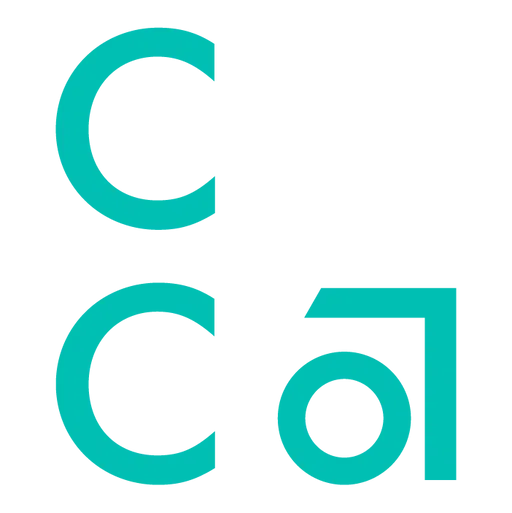
CCA lettermark in teal against a white background
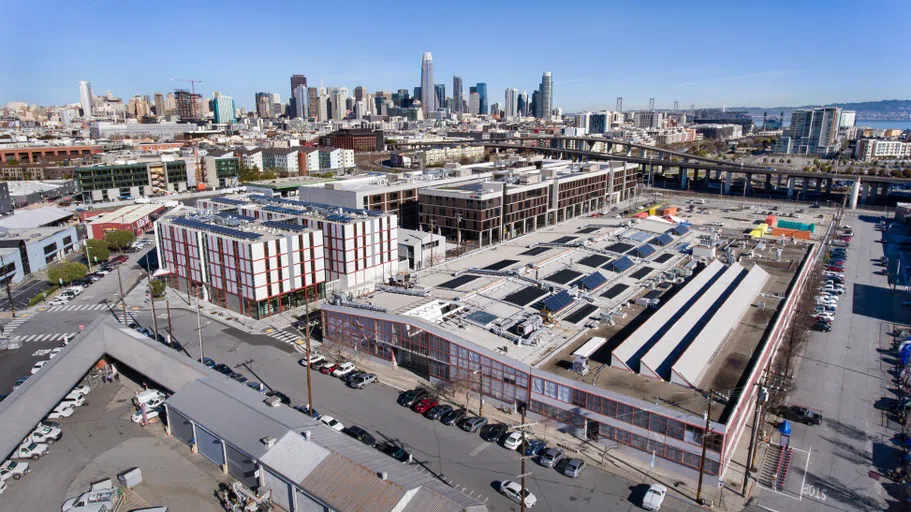
The city is your campus. CCA is located in the San Francisco Bay Area, a one-of-a-kind cultural and innovation hub—the ideal landscape to study the theory and practice of art, design, architecture, and writing.
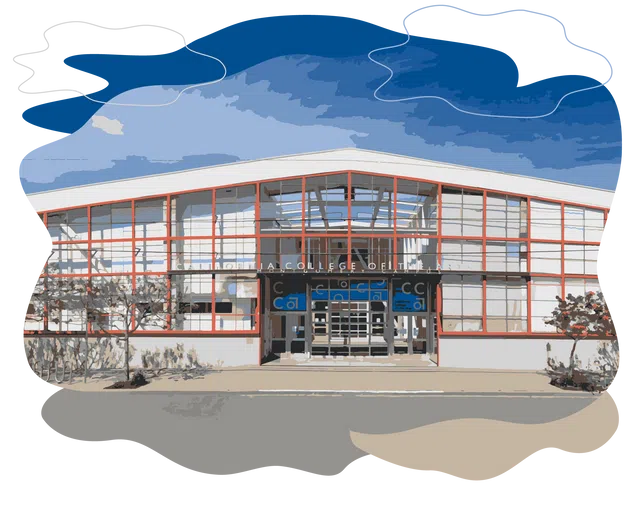
Front of white modern building with blue skies
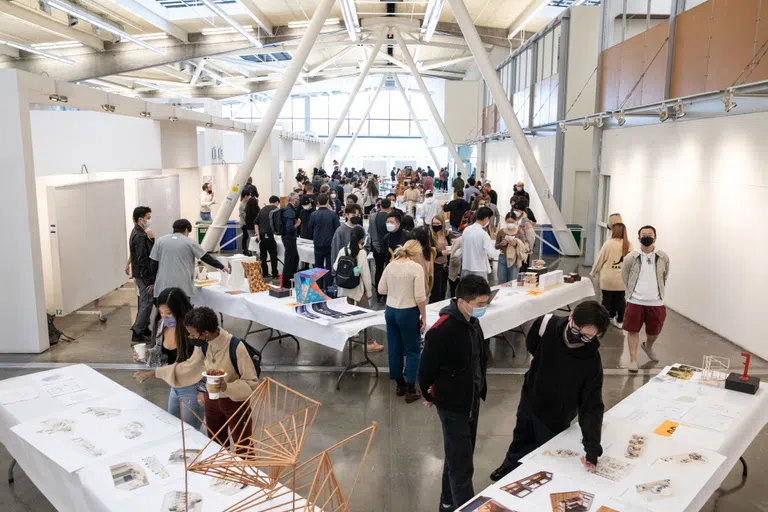
The Nave activated by crowds and student work during an Architecture pop-up event.

CCA’s new student residence, Founders Hall, includes Makers Cafe on the ground floor.
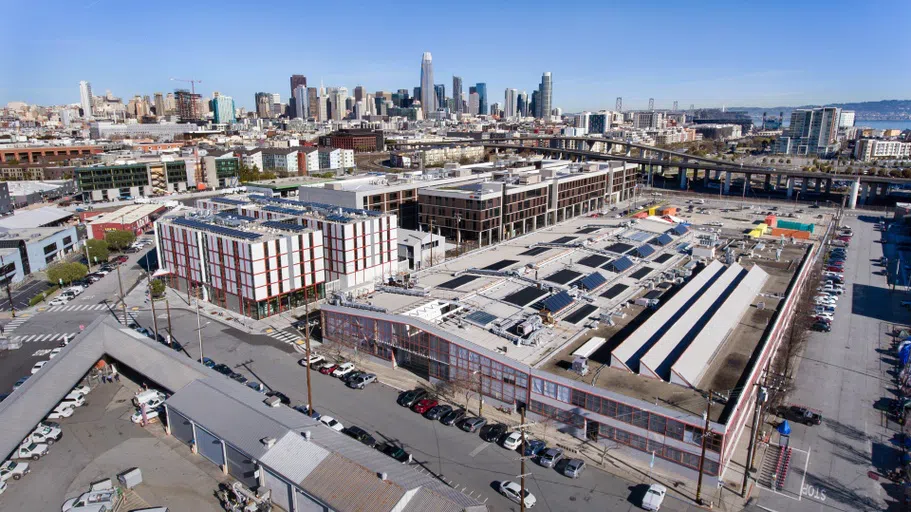
The city is your campus. CCA is located in the San Francisco Bay Area, a one-of-a-kind cultural and innovation hub—the ideal landscape to study the theory and practice of art, design, architecture, and writing.
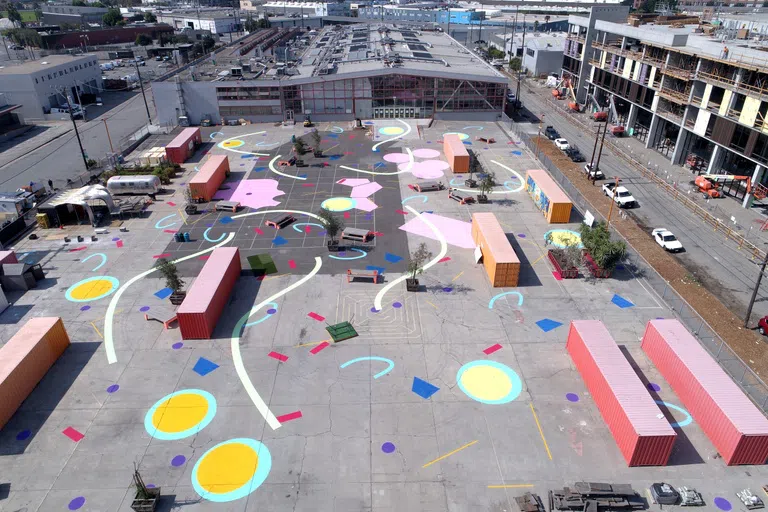
Exit the Nave and you’ll find yourself in a multi-use outdoor area. Currently an open-air maker space, the Backlot will be the centerpiece of CCA’s transformational campus expansion.
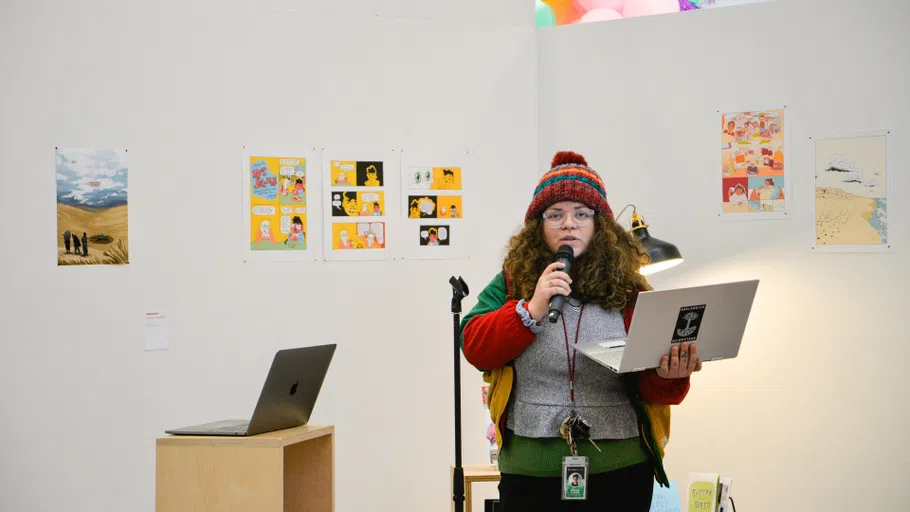
Writing & Literature students read their work as part of the Commencement Exhibition.

The heart of CCA’s campus is the Montgomery Building, which is located in San Francisco’s vibrant Design District.

Students in Matt Kendall’s Materiality and Space 1 course look at colorful, three-dimensional paper models.
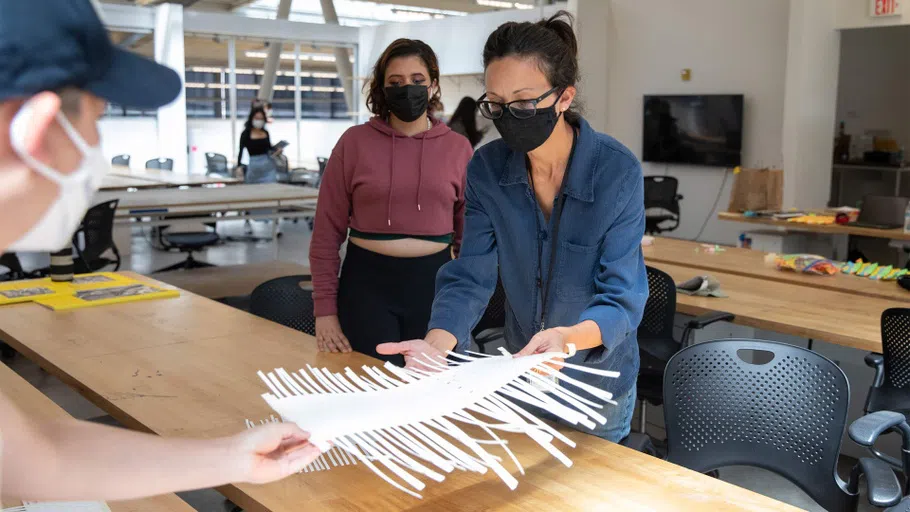
Students closely examine paper studies in the Materiality and Space 3 course taught by Margaux Schindler. Projects explore tectonics, research, and synthesis from the angle of sustainable “green” building design.

A panel critiques an Interior Design student’s work, which includes mark-making tests on paper and sculptural forms.
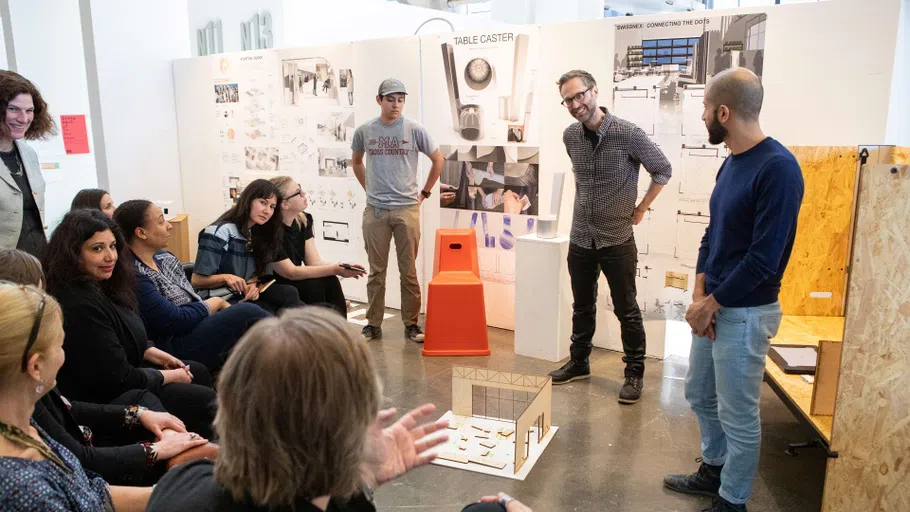
Final critiques in the Interior Design program include panelists and experts.
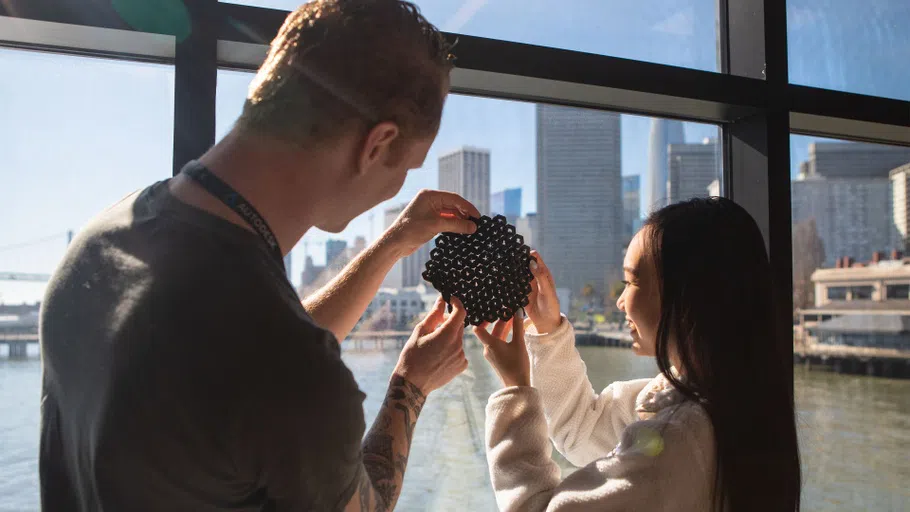
Led by Negar Kalantar, associate professor of Interior Design, the TranStudio partnership enables Interior Design students to push material technology as part of Autodesk’s Artist in Residency (https://www.cca.edu/newsroom/cca-and-autodesk/) program.
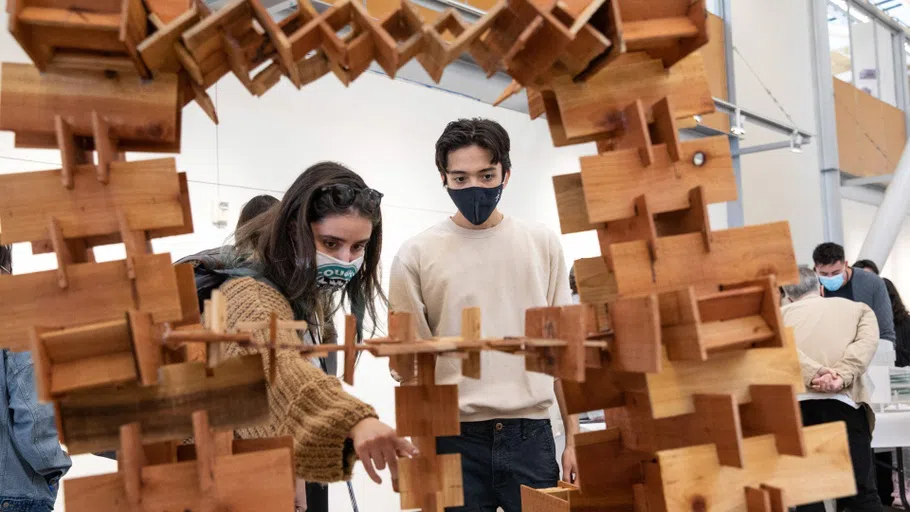
Two students look at a wooden architectural project at the 2021 Architecture Show and Tell Mixer, a chance to gather and share work in the Nave.
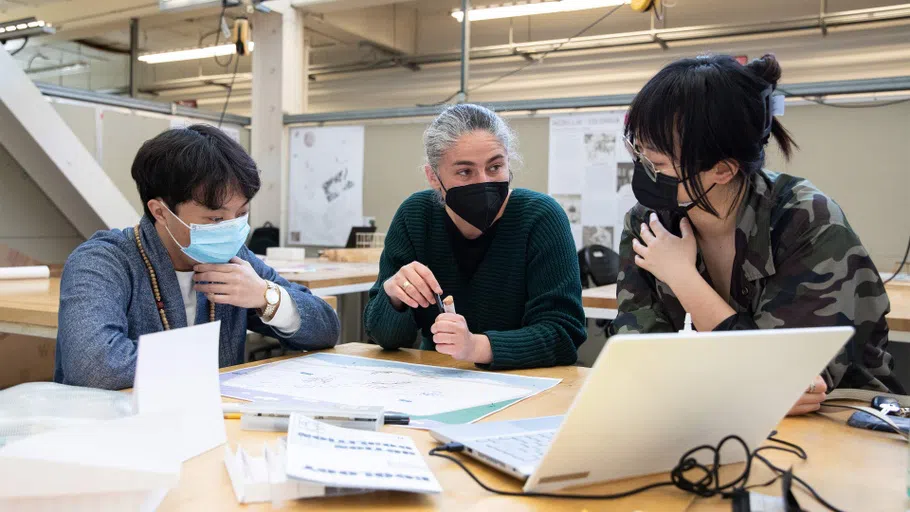
Moments in the studio mean opportunities for collaboration and faculty-student conversation.
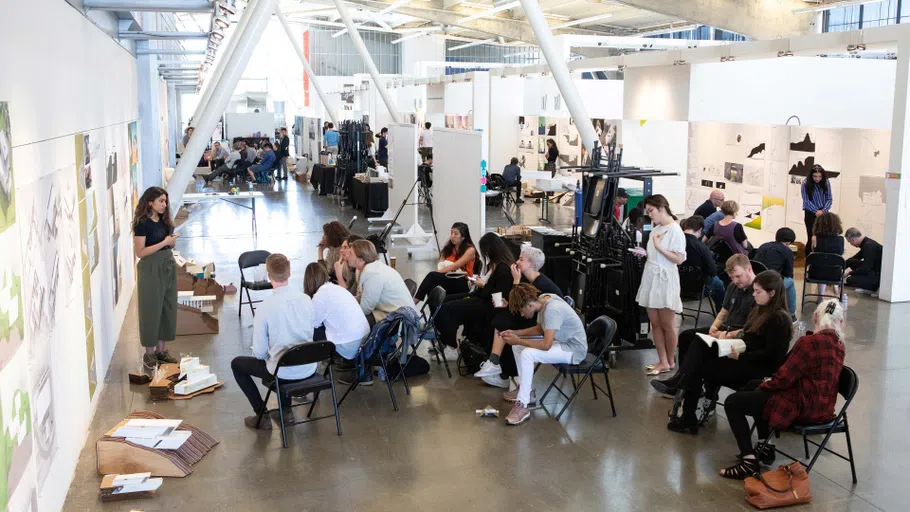
Finals week for architecture students means presentations and pinups in the Nave.
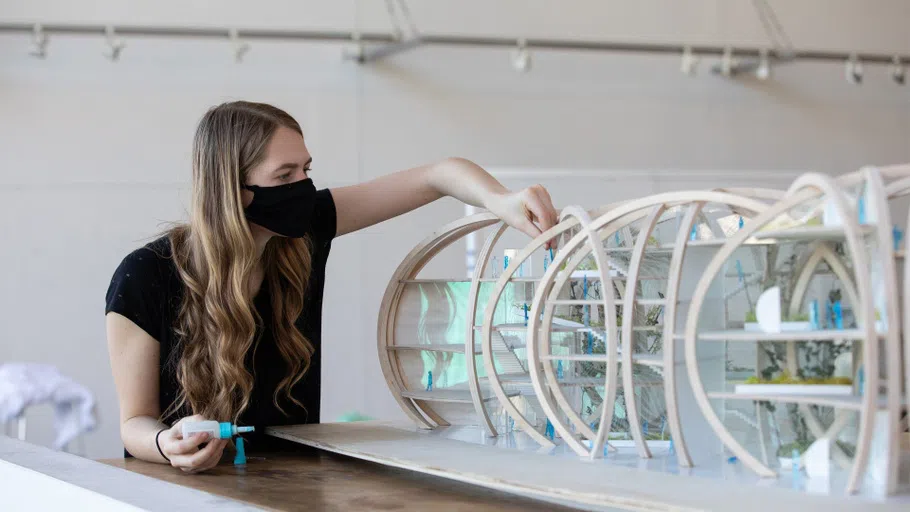
Architecture student Claire Leffler works on a plexiglass and balsa wood model in the Nave.
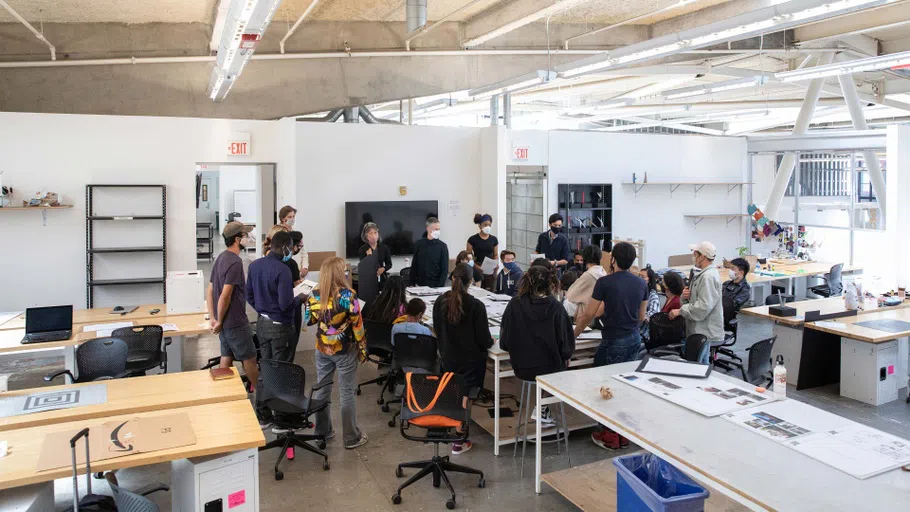
Architecture students in the Materials and Methods course taught by faculty Margaret Ikeda and Mark Donahue.
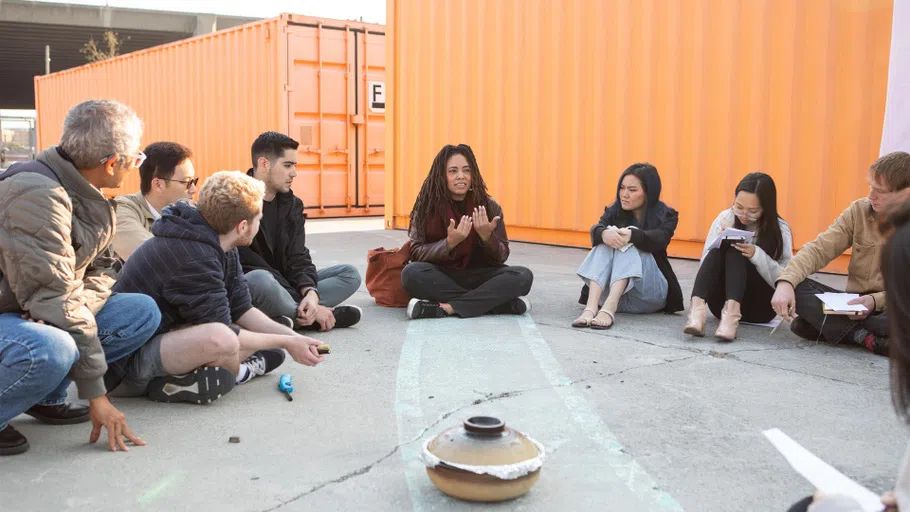
Students discuss implications of colonialism during a meeting of the Diversity Studies course Radical Redesign led by Associate Professor Shalini Agrawal, under the leadership of program Chair Shylah Pacheco Hamilton.
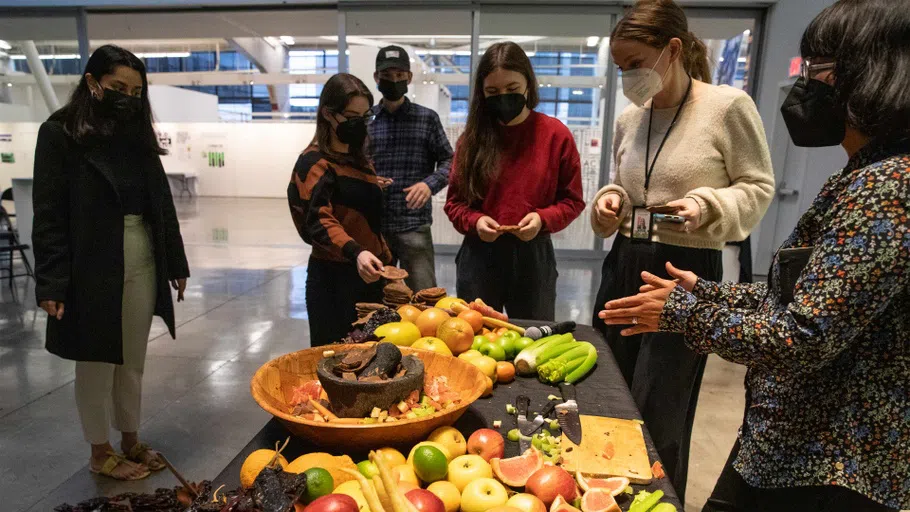
Performative artist SiouxBean shares their work as part of the Fluid Mutualism Symposium, examining connections between food, clay, and culture, specifically in Black, Indigenous, People of Color (BIPOC) communities.
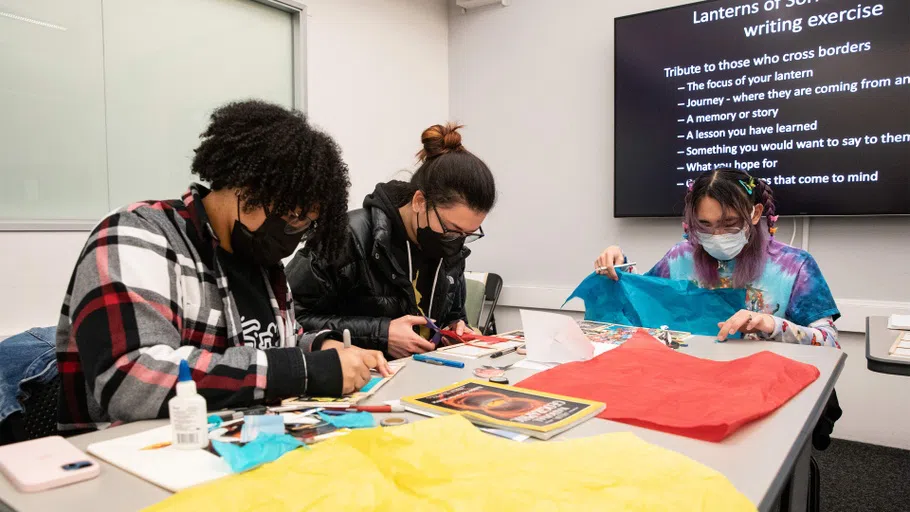
Students reflect on border crossing through a making-and-writing project in Lydia Nakashima Degarrod's Critical Ethnic Studies class.
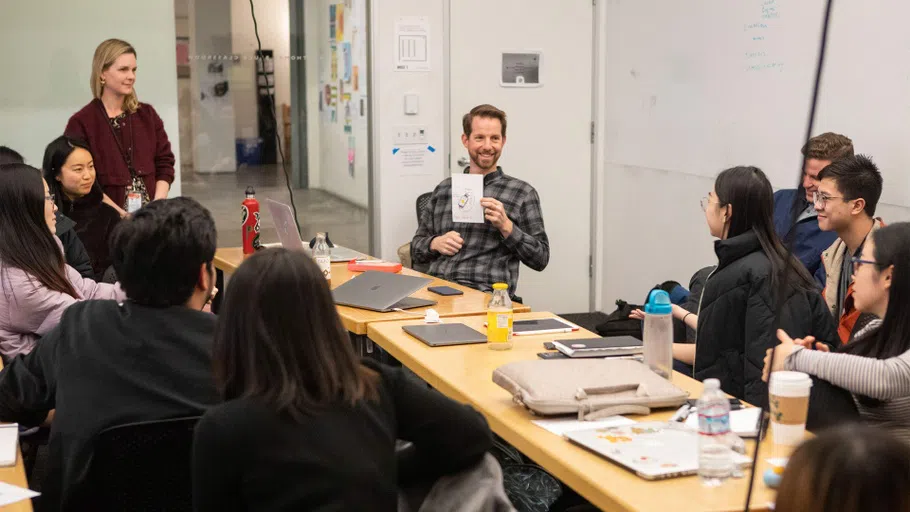
A recent social science and history class explores cognitive science - from vision and language to memory, learning and consciousness.
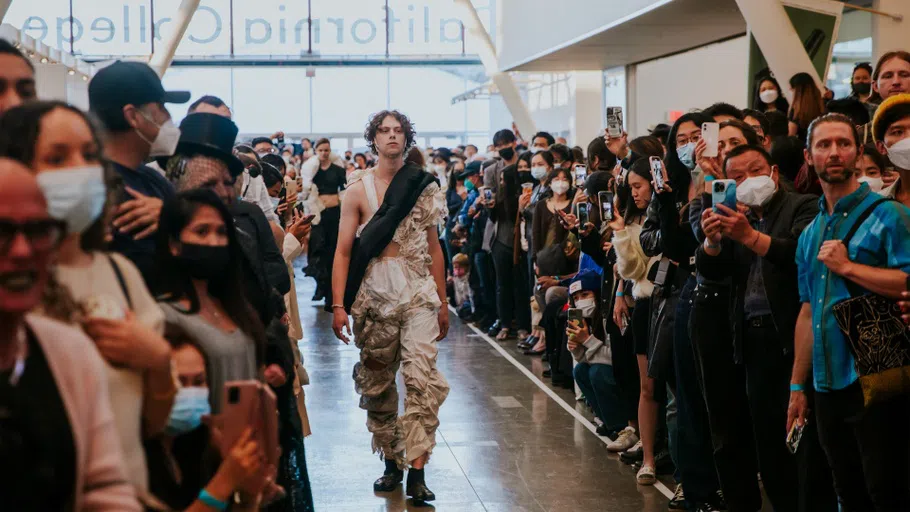
CCA’s annual runway show called the Fashion Experience is a public, professional debut of thesis collections by graduating Fashion Design students. This showstopping design is by Hanjuan Kristen Sun (BFA Fashion Design 2022).
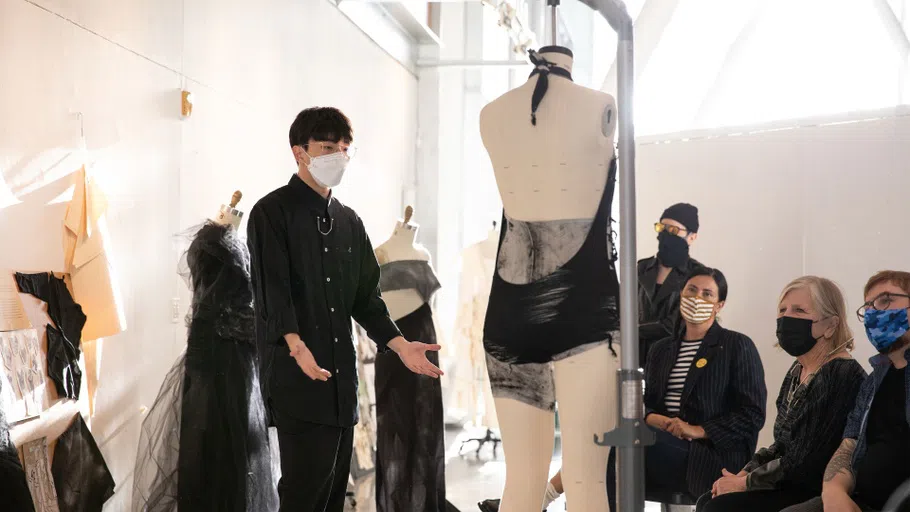
Fashion senior reviews take place in the Nave, bringing in outside industry leaders as panelists.
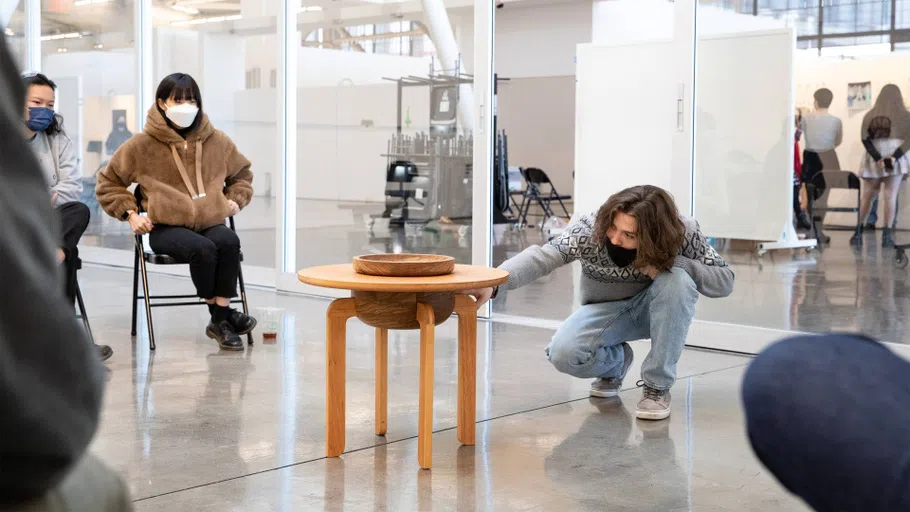
The end of the semester means final Furniture crits in the Nave Alcove.
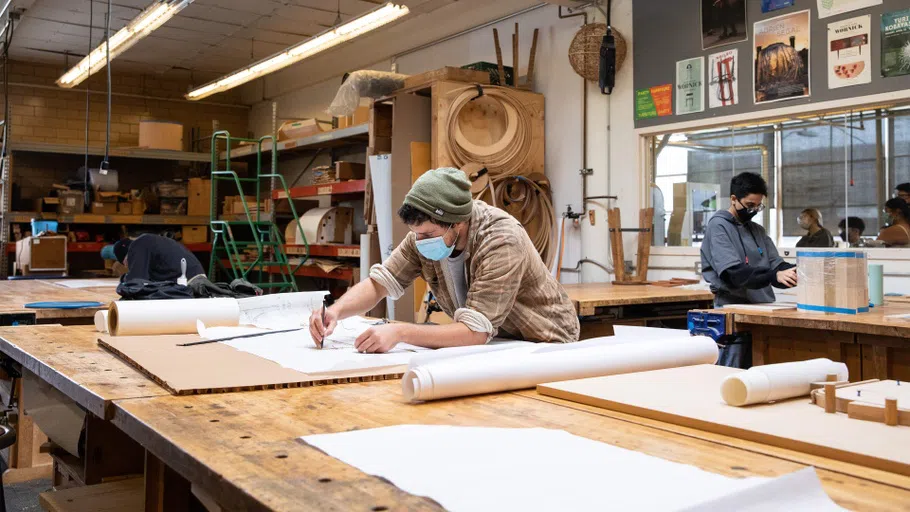
A student drafts plans in the Bench Room, which is the homeroom for Furniture students.
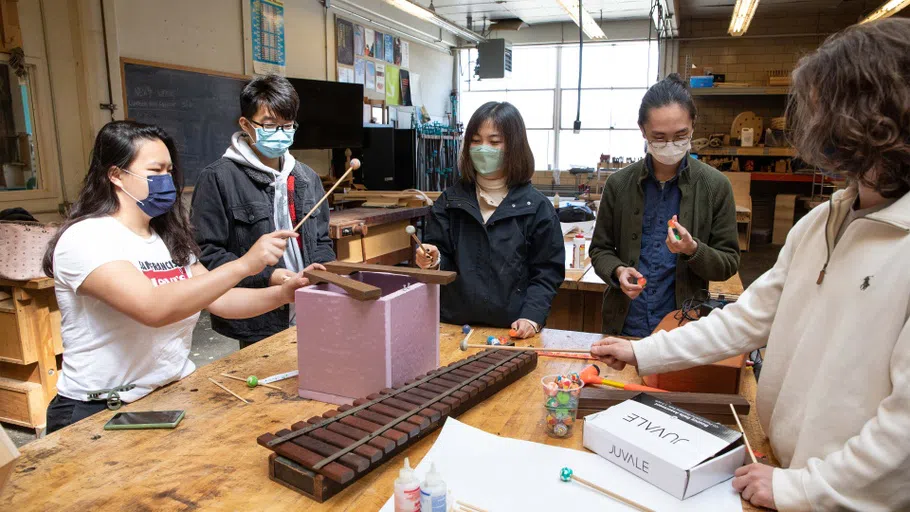
In the Acoustic Objects course led by associate professor Corey Jones, Furniture and Industrial Design students play their crafted bluetooth speakers and marimbas.
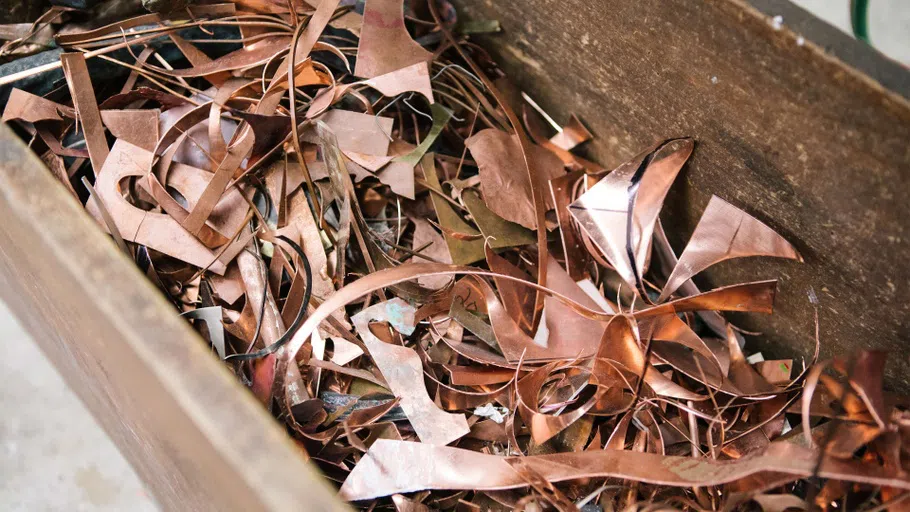
There’s even beauty in our jewelry studio’s scraps.

The Furniture program annually selects a practitioner specializing in wood, such as Ido Yoshimoto in fall 2021, to join our faculty as a visiting professor.
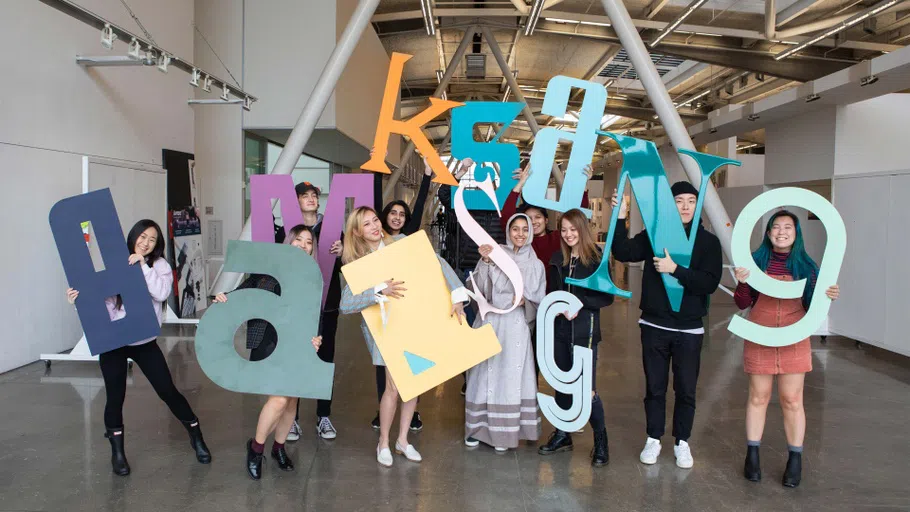
Students explore identity, typography, and scale in professor Mark Fox’s Advanced Graphic Design Studio.

David Hisaya Asari leads the Typography 3: Information course, where students learn to understand the intention, purpose, and function of visualizing data and information.
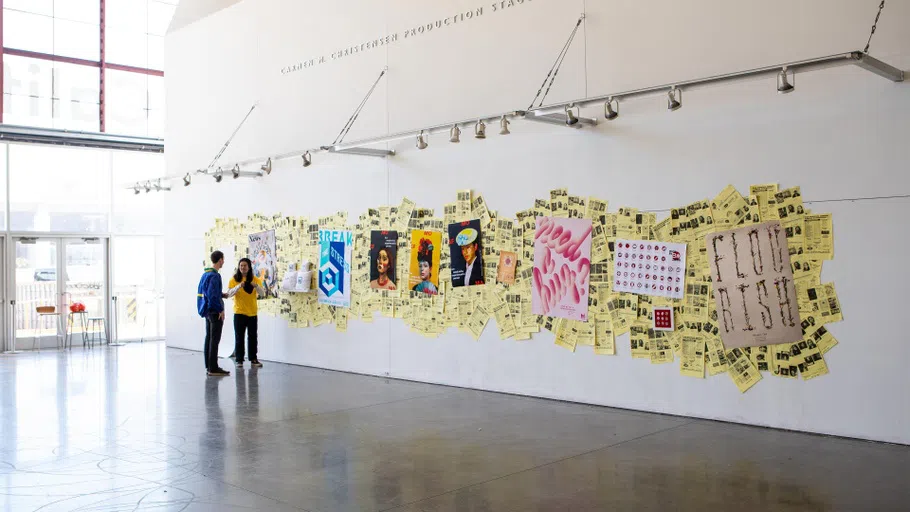
The white walls of the Nave are often transformed by installations, such as this graphic display of posters.
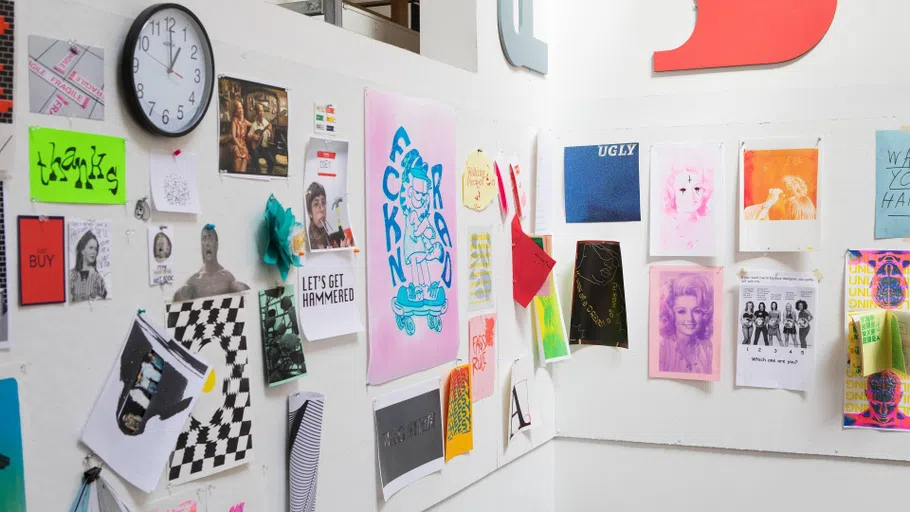
Consider your classroom walls a smorgasbord of inspiration. Students are free to pin up new work, works in progress, and random clippings to inspire each other and create a stimulating creative environment together.
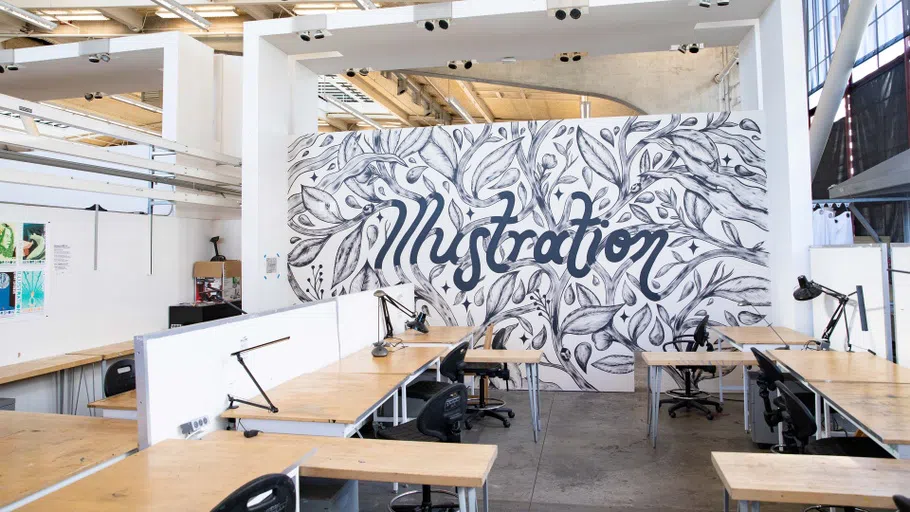
Alum Sendy Santamaria’s (BFA Illustration 2018) naturally-inspired mural fills the Illustration homeroom with welcoming and calming energy.
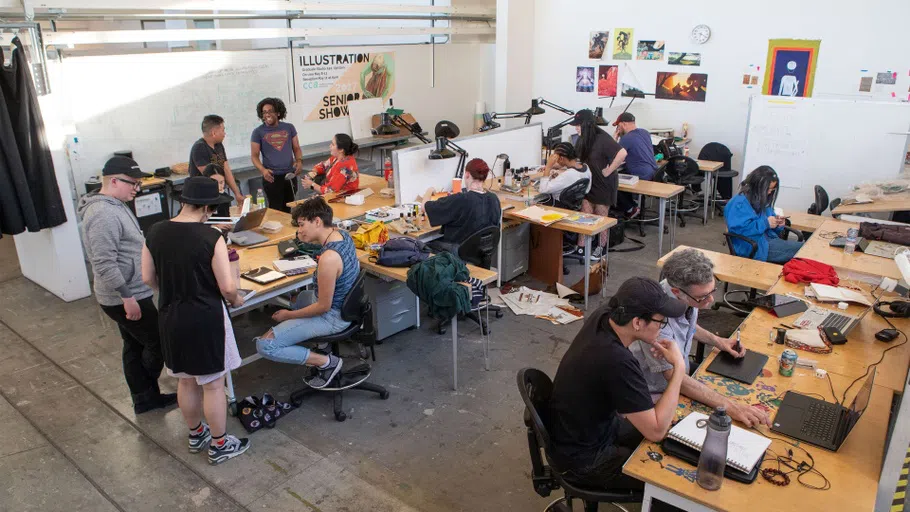
Students work side-by-side with faculty in an Illustration classroom.
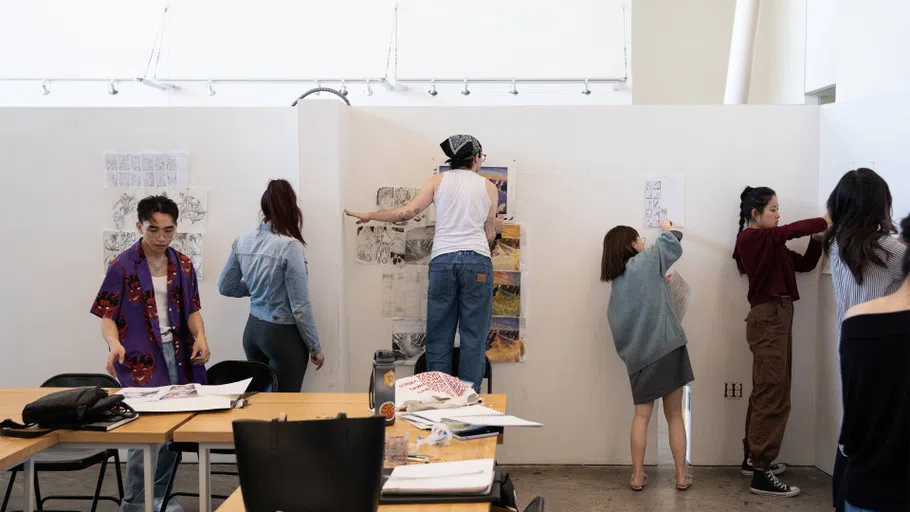
Students in Randy Chavez’s Studio 1 Narrative class pin up work for a critique.

The Illustration department put together a pop-up exhibition in the Nave of recent work by faculty, alumni and current students.

Students Oliver Grant and Samantha Linden work on Industrial Design projects in the studio.

In the Acoustic Objects course, Industrial Design and Furniture students hand-made Bluetooth speakers, marimbas, and other sound sculptures.
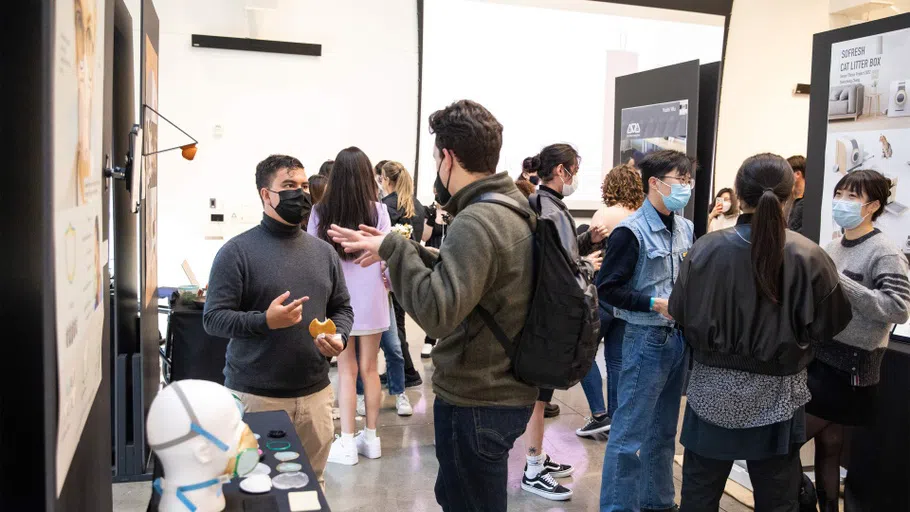
Students present concepts and prototypes for their thesis work at the annual Commencement Exhibition.
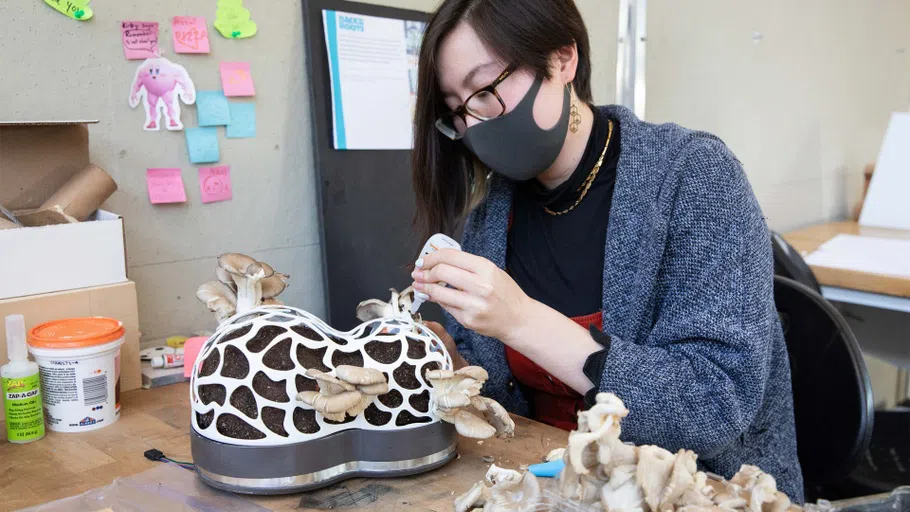
Marina Kyle (BFA Industrial Design 2022) puts the finishing touches on their interactive project, Muselium, which outputs melodies from electronic signals in mushrooms.
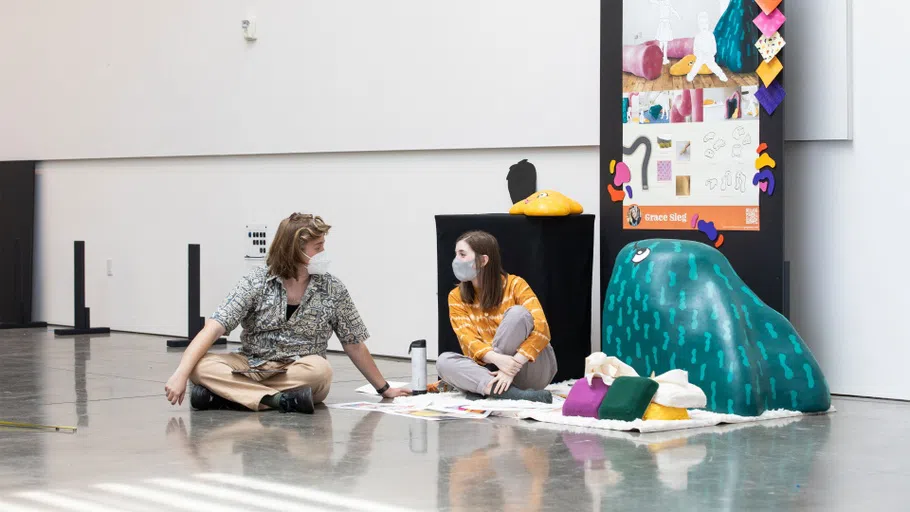
Grace Sieg (BFA Industrial Design 2022 presents her thesis project, Playwell, which is a set of plush play objects for kids.
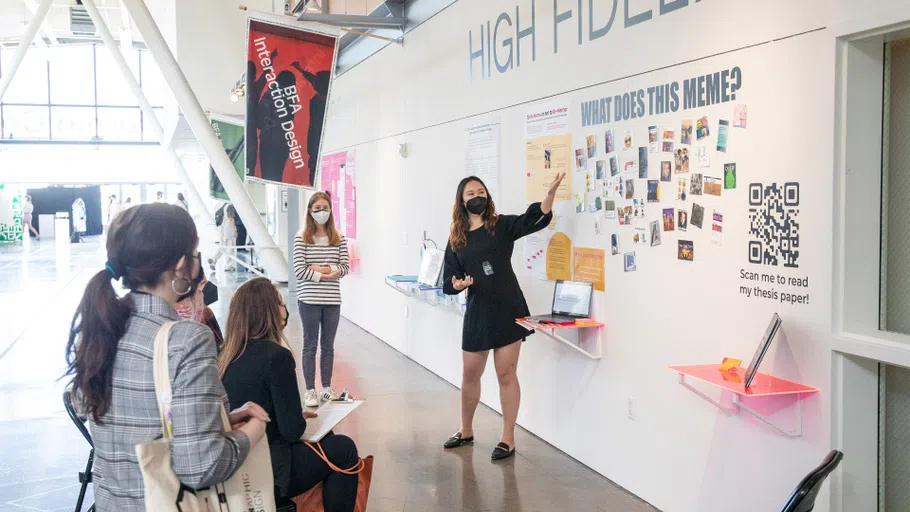
Interaction Design seniors present thesis work during the annual Commencement Exhibition.
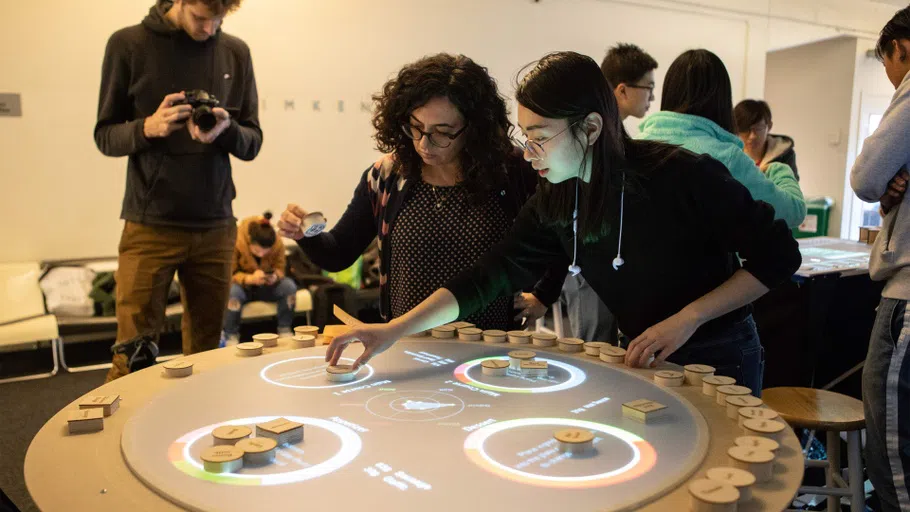
Dean of Design Helen Maria Nugent and a student engage with Ggul-Jaem 꿀잼, a tabletop game by Jamie Catt, Nat Kasman, Heather Lee, and Jieying Yang.
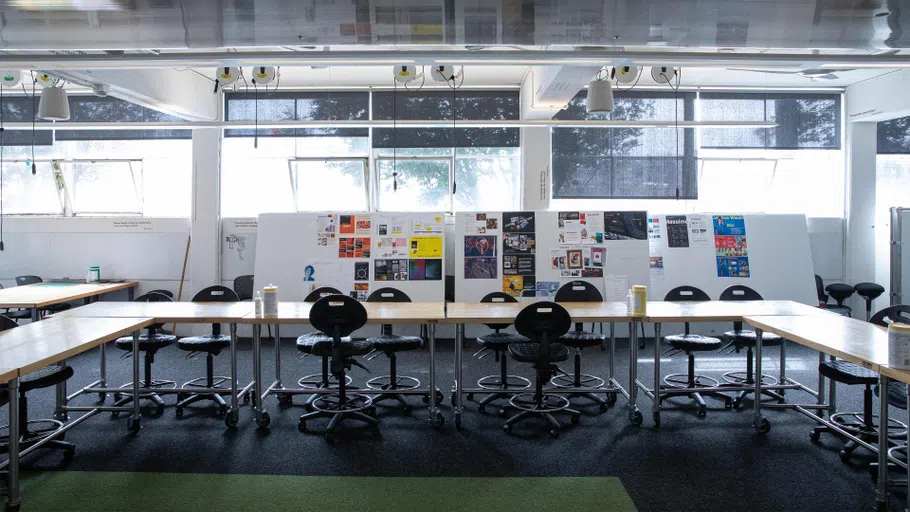
The Interaction Design Studio includes space for collaboration, prototyping, and pinning up work.
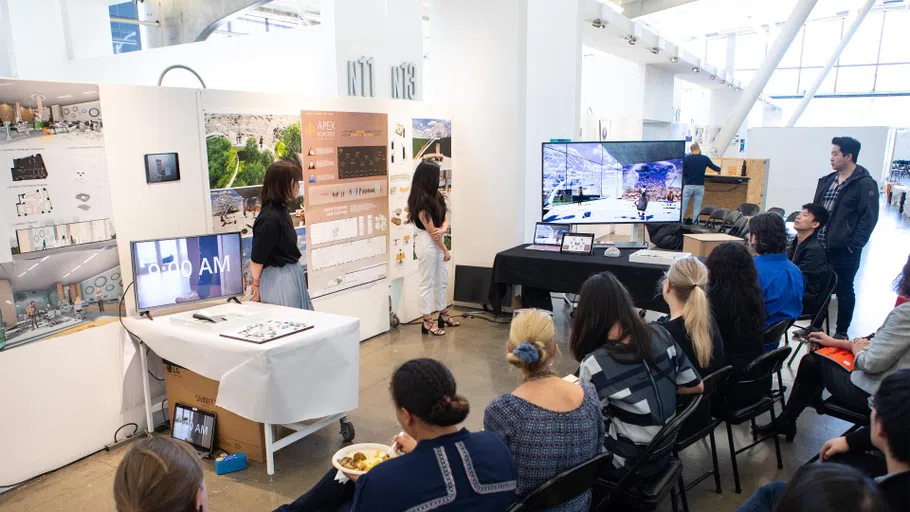
Three students present a collaborative project centered on the future of work to a panel of industry experts and their classmates.
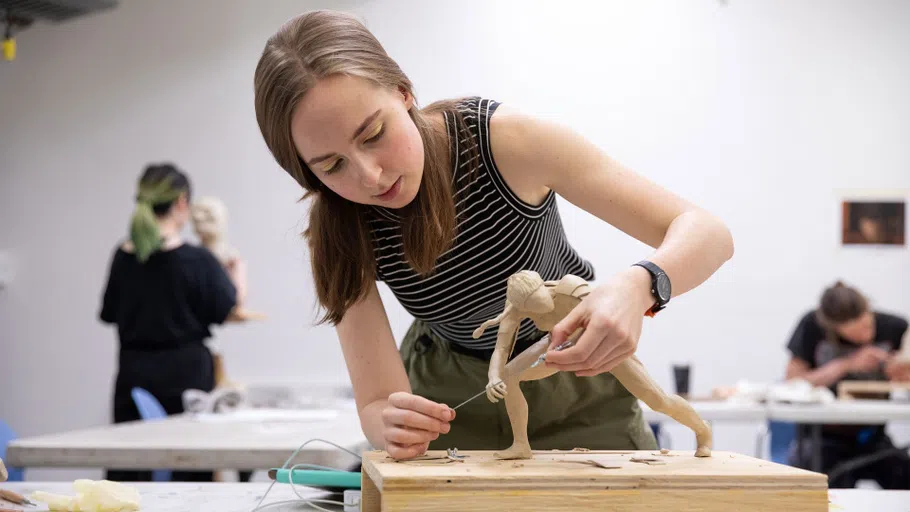
Animation workshops explore different methods of stop motion animation, from producing clay models to and working with the Dragonframe Animation software.
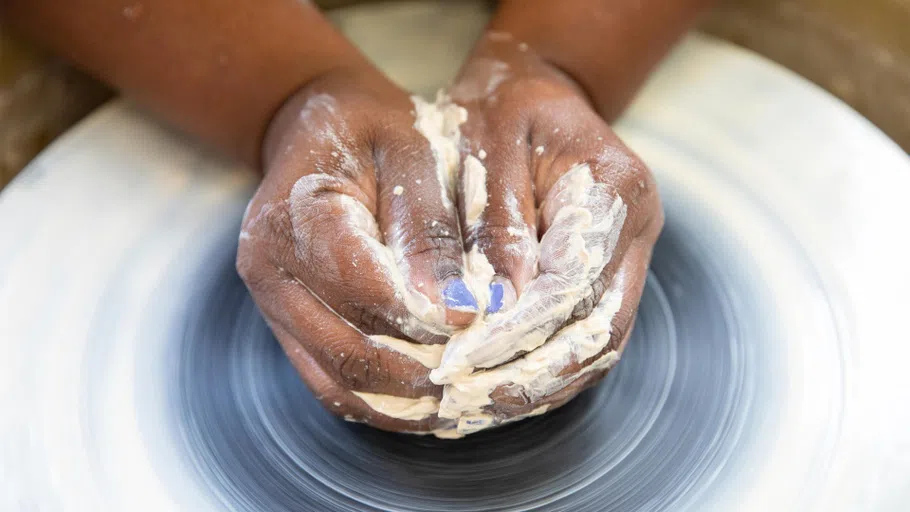
Be ready to get your hands dirty. We begin with the basics: hand building, coil structures, slab construction and glazing.
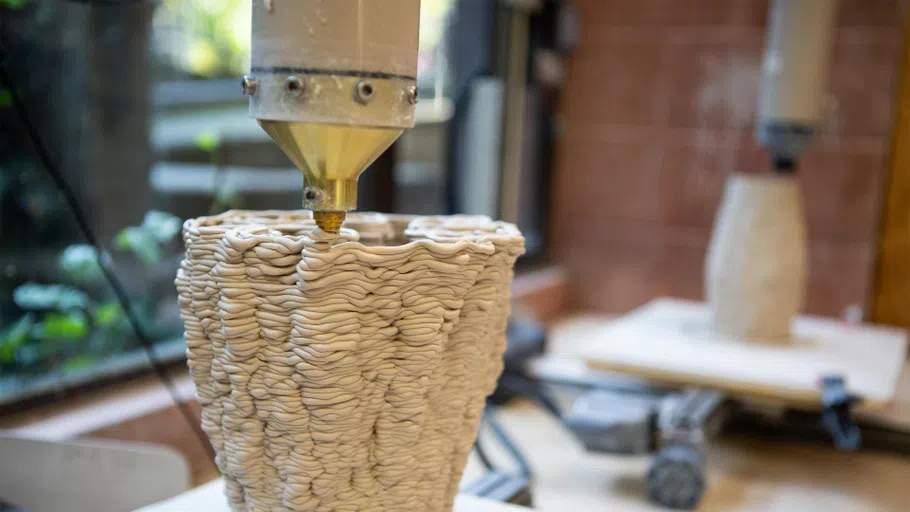
You’ll stretch your ceramics practice by experimenting with digital tools, such as our four 3D Potterbots. You’ll design shapes, forms, and components in 3D modeling software and watch them materialize on the printer bed.
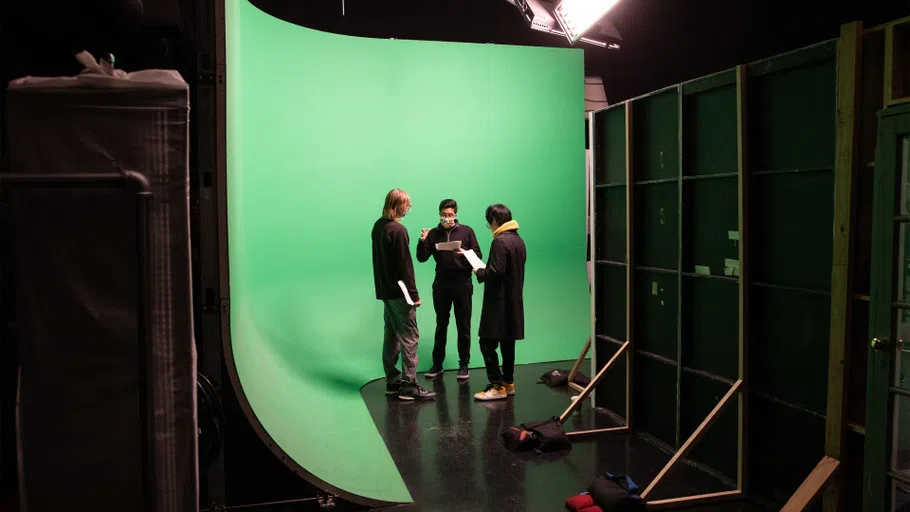
Film students learn the art of directing through hands-on workshops that explore mise-en-scene, staging action, and running a set.
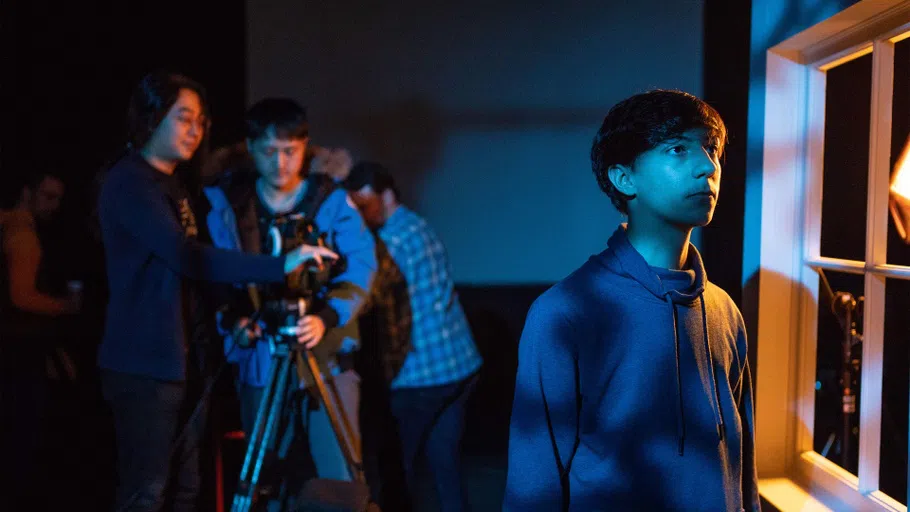
Film production courses focus on the conception, preproduction, and production processes involved in producing moving image work.
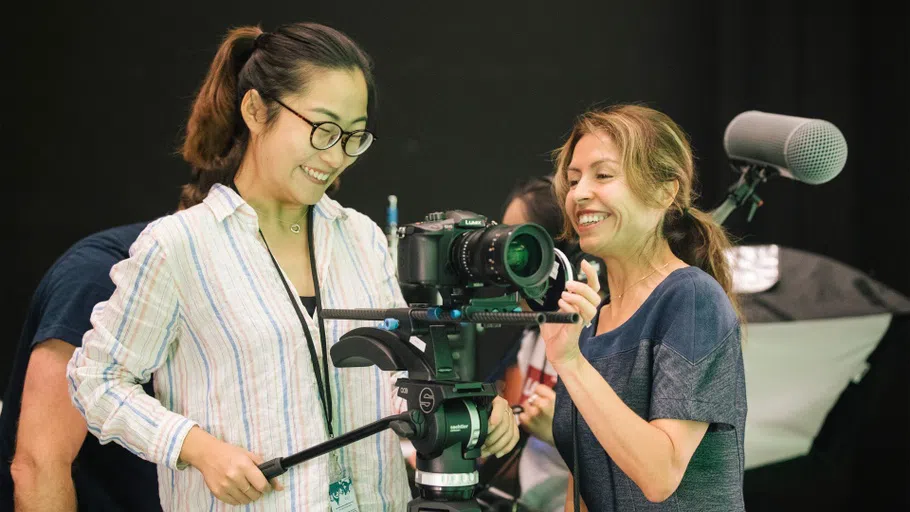
As you learn how to make films from start to finish, you’ll hone filmmaking processes and cinematography techniques.
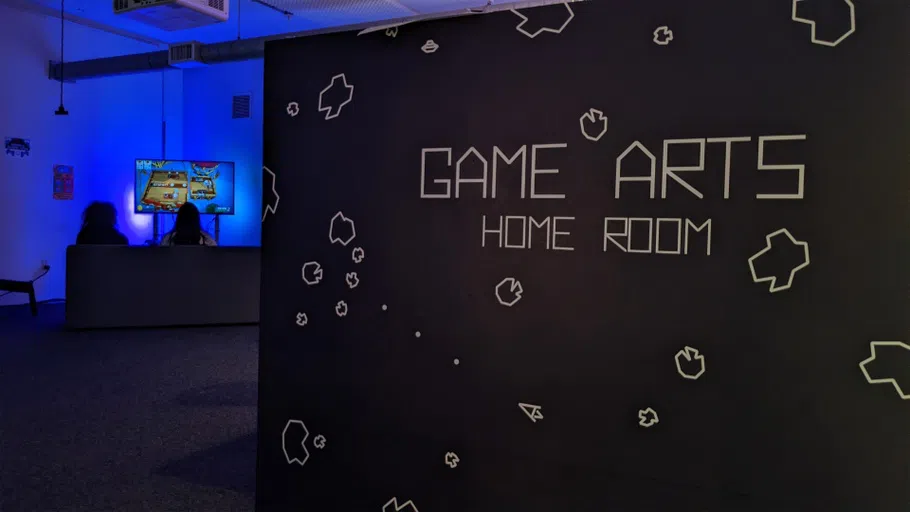
The Game Arts Homeroom is a drop-in space for gaming and collaborating.

You can choose to focus on analog game making. Here’s a game from the Game Arts Showcase at the end of the spring semester.

Joel Lithgow (BFA Individualized Studies 2022), with help from Joseph Blake (BFA Printmedia 2022), works on Lithgow’s gazebo installation, Shades of the Garden Campus, as part of CCA’s Fluid Mutualism Symposium.

You’ll be mentored by practicing artists who are deeply involved with the Bay Area arts community. Here is a recent exhibition at the ICA San Francisco by Individualized Studies program chair Peter Simensky.

Individualized Studies students Gordon Fung and Ernest Strauhal collaborated on their installation Re-genesis as part of CCA's Fluid Mutualism Symposium.
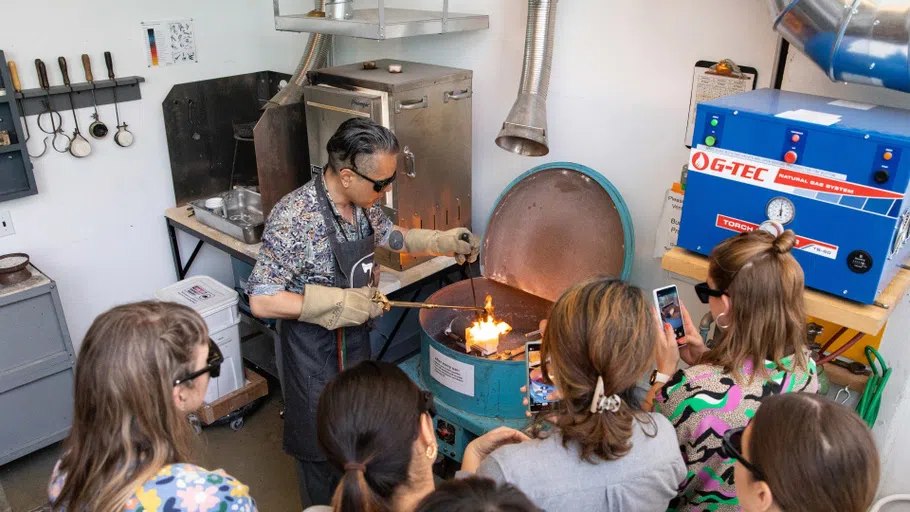
The Streich Zone is a multifunctional room for the Jewelry and Metal Arts program, where enameling, forming, and fabricating take place. Jewelry and Metal Arts Chair Curtis Arima shows how the kiln works in a casting demonstration.
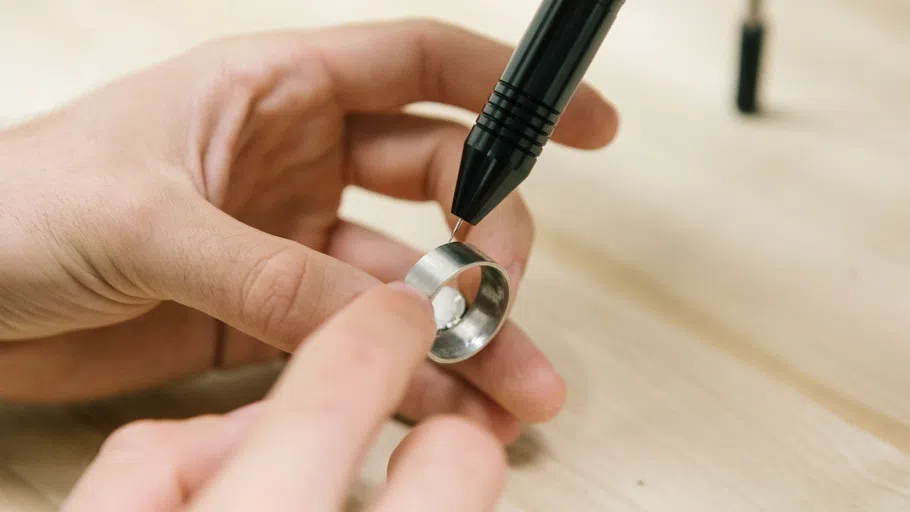
A student engraves a fine detail into a metal ring.
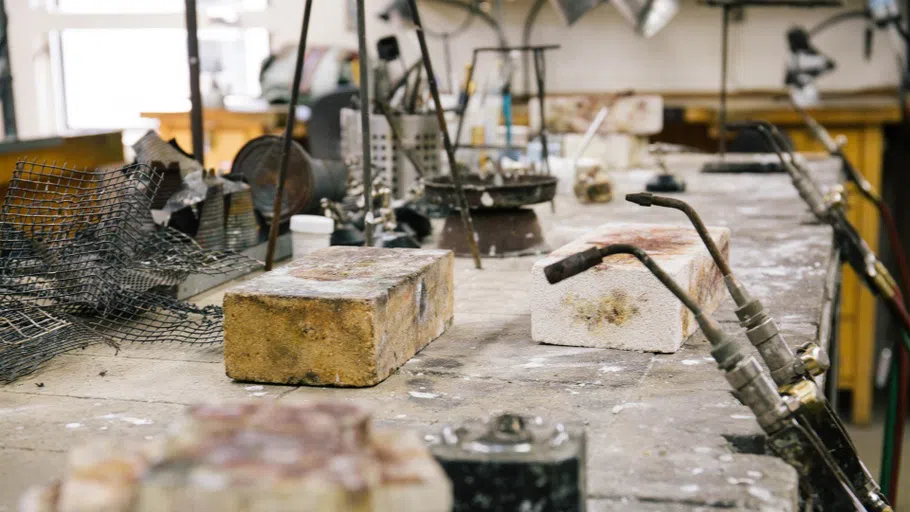
The main jewelry classroom is equipped with 18 professional jeweler’s benches with flex shafts, a communal soldering area (pictured here), two drill presses, a bench shear, a rolling mill, and various hand tools designed for metalsmithing.
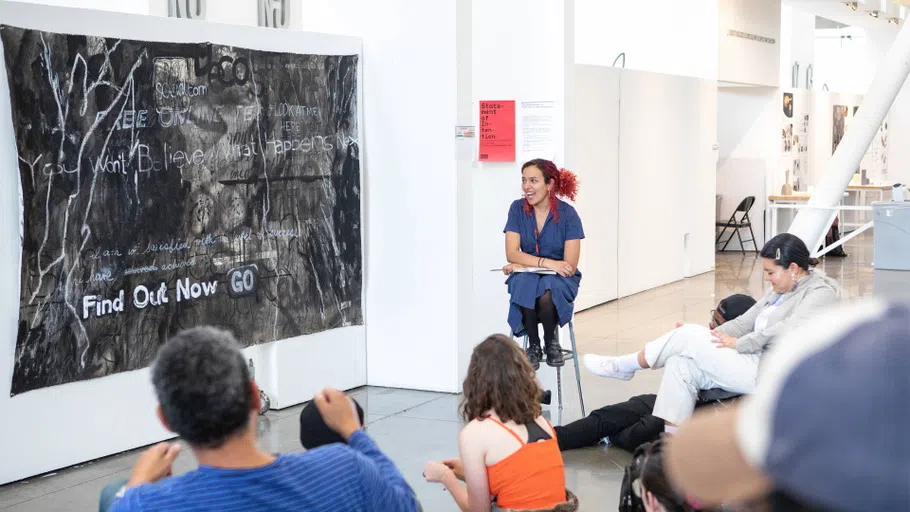
A painting class critiques a fellow student’s work in the Nave.

Faculty member Bryan Keith Thomas works closely with a painting student in the studio.

Painting racks store works in progress, in close proximity to the classroom and private upper division studios.

In faculty member Nelson Chan’s Junior Tutorial/Senior Project course, students explore the creative process through individualized critique and the exchange of ideas. Work by Tung-Lin Tsai.
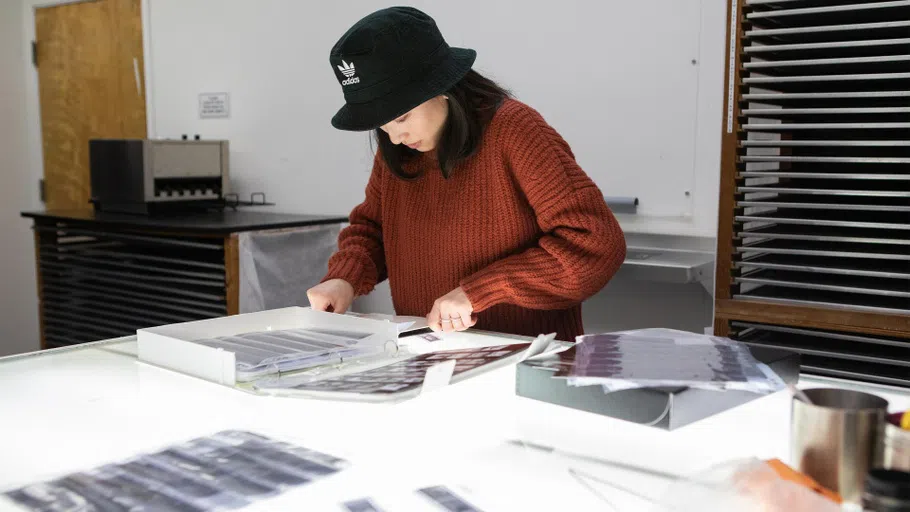
Use Omega D-5 enlarging stations and RC print washers in the Black-and-White Darkroom.
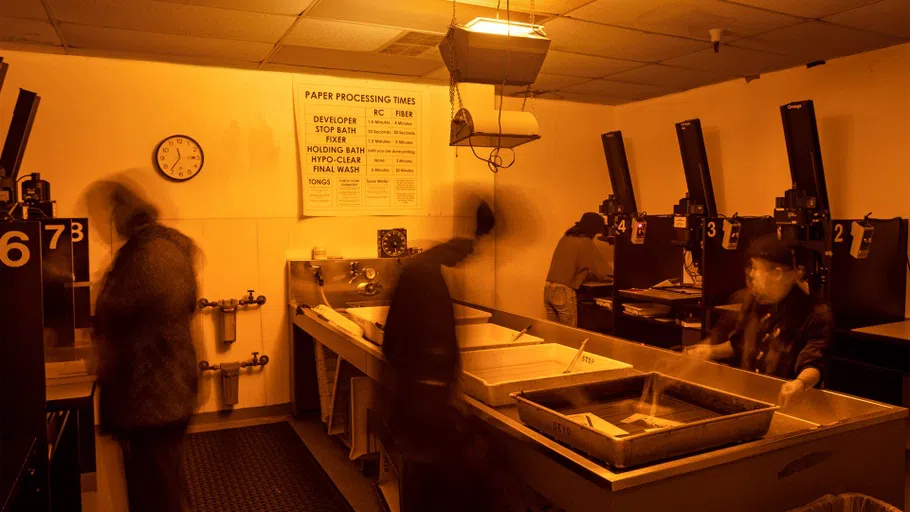
A long exposure in the darkroom captures the energy of students working.

Faculty Michael Wertz and Thomas Wojack teach the art of poster making and printing.
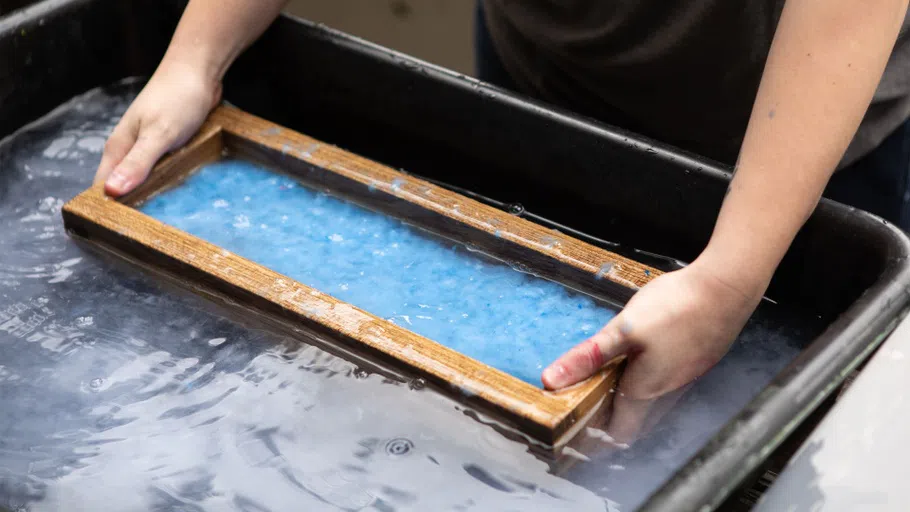
A student makes paper in a class.
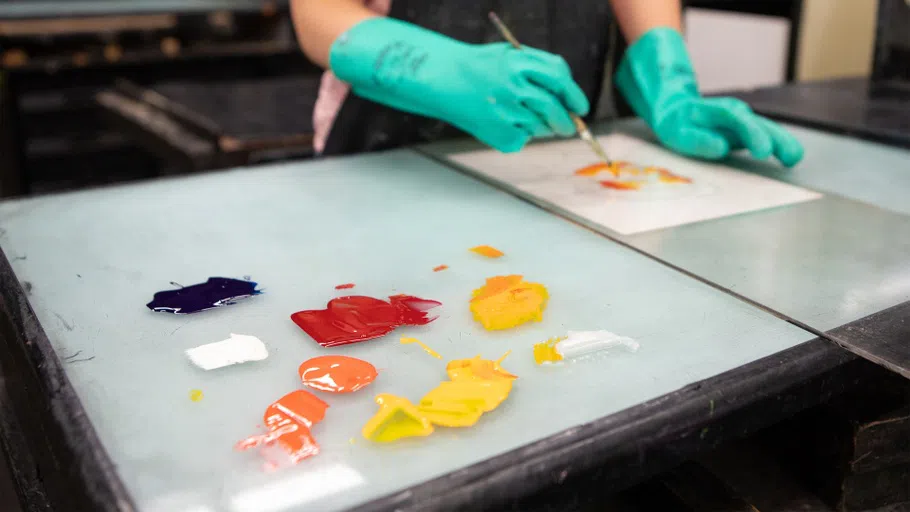
You’ll learn all aspects of printmaking in introductory classes, such as color theory and mixing.
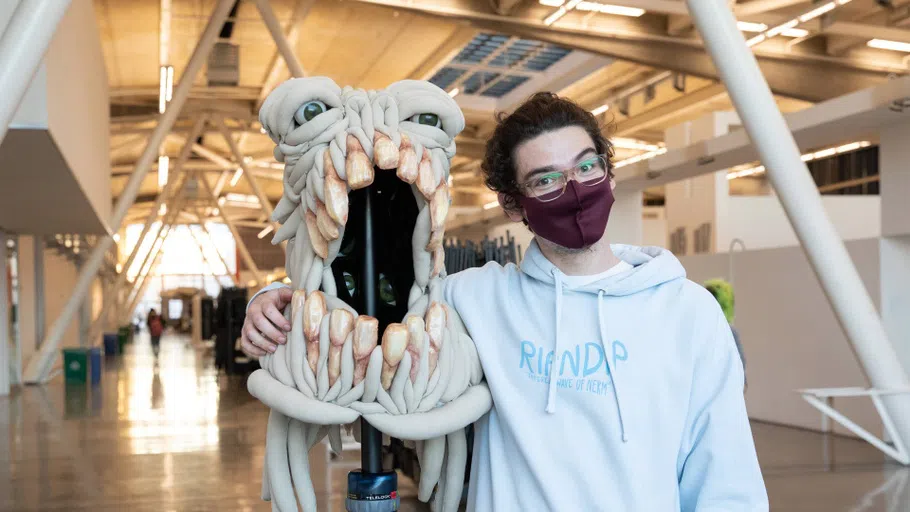
PJ Parker with a creature mask he had been creating for associate professor Mia Feuer’s Sculpture 1 course.
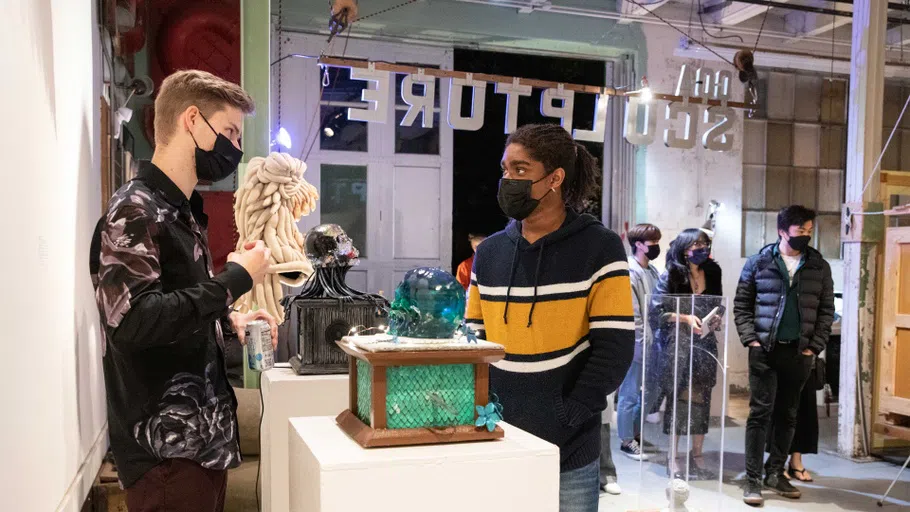
Whether on campus or off, exhibitions are opportunities to present work professionally. Here, faculty member Mia Feuer’s Sculpture 2 course exhibits In Dark Places at Oakland’s Mac Fine Arts Gallery in December 2021.
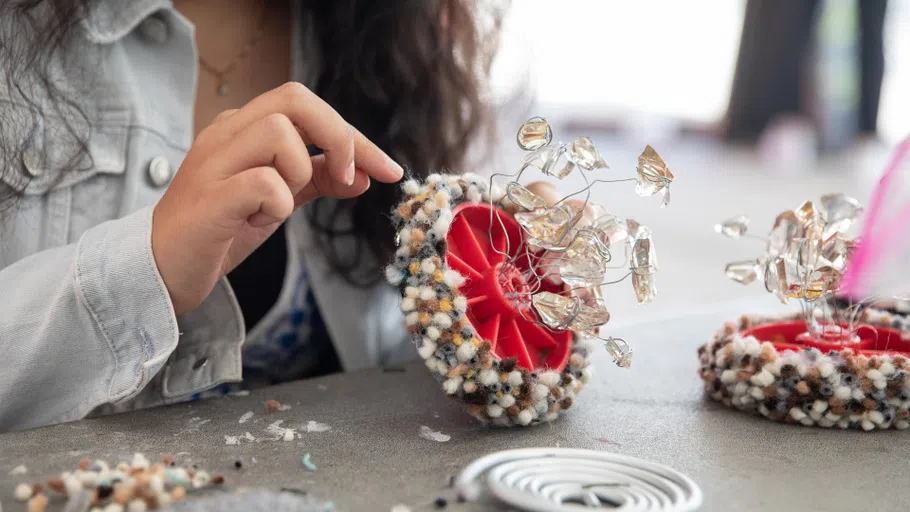
Sanjhal Jain working on a sculpture in the Backlot as part of the Sculpture 1.
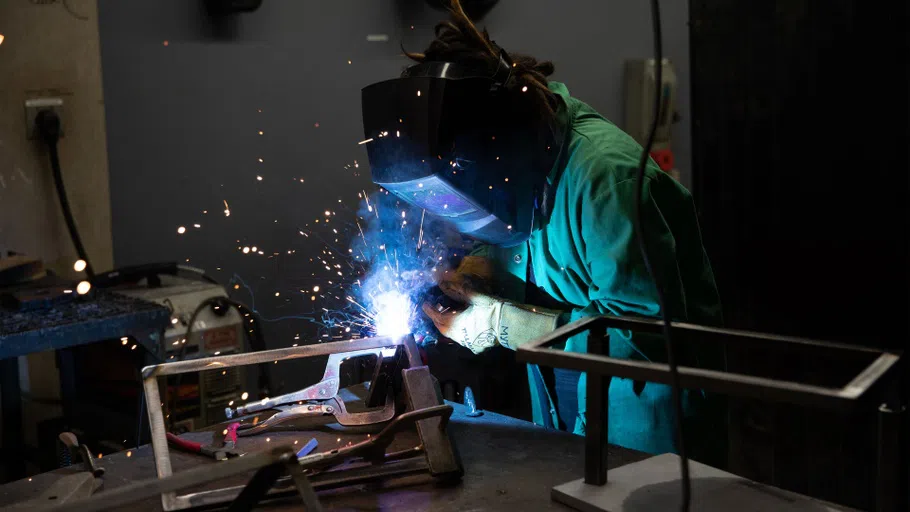
Sparks fly in the welding studio as MFA studio manager Laurus Myth fuses parts of a metal frame together.
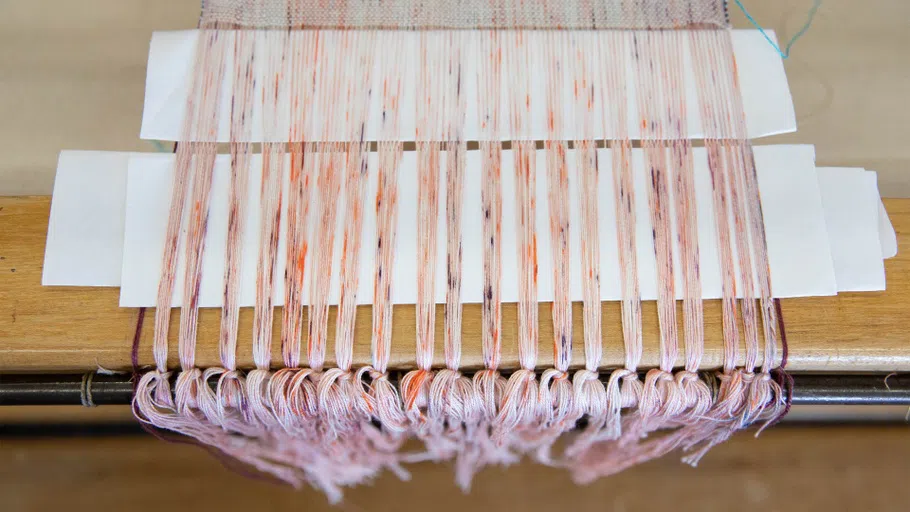
Textiles studio and ephemera. Oakland campus, April 2022.
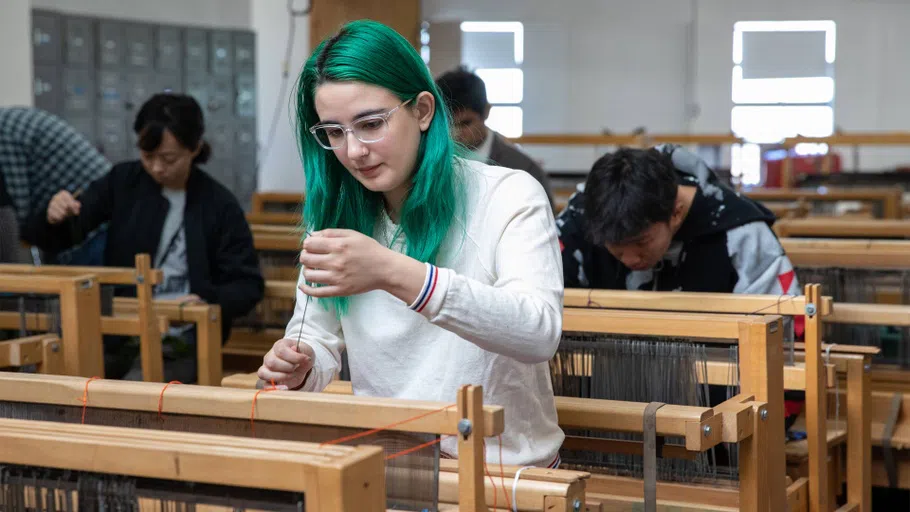
Our weaving facilities include floor looms and computer-operated dobby looms. Courses such as Vagabond Weaving and Zeros+Ones highlight the intersections between these hand and digital technologies.
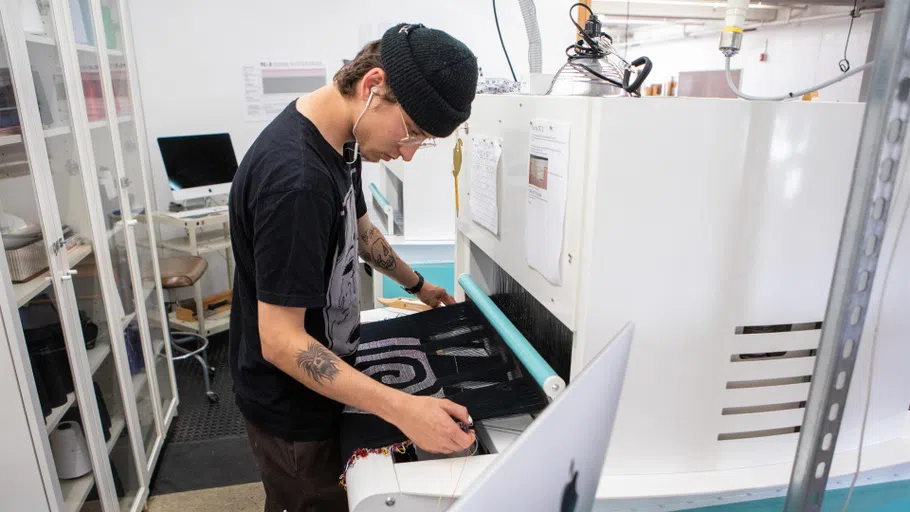
A student prepares to weave on the digital Jacquard loom.
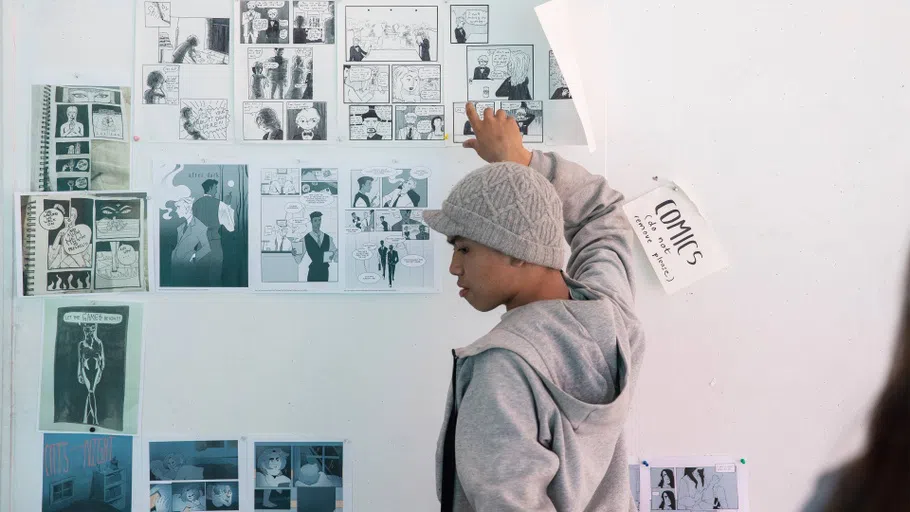
Comic students have the freedom to explore different visual styles and storytelling techniques as they find their own voice in the medium.
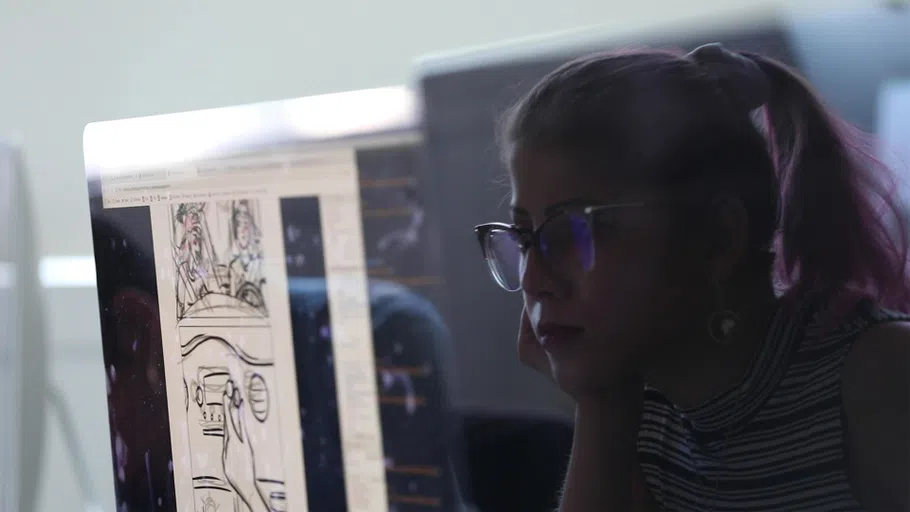
Students develop a strong digital skillset grounded in industry-standard software.
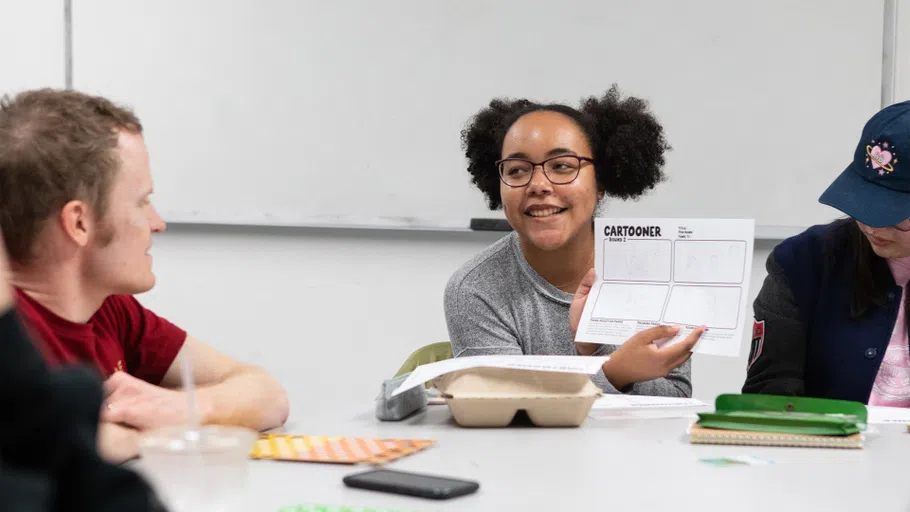
Opportunities for interdisciplinary collaborations abound at CCA, such as this workshop with Comics and Writing students.
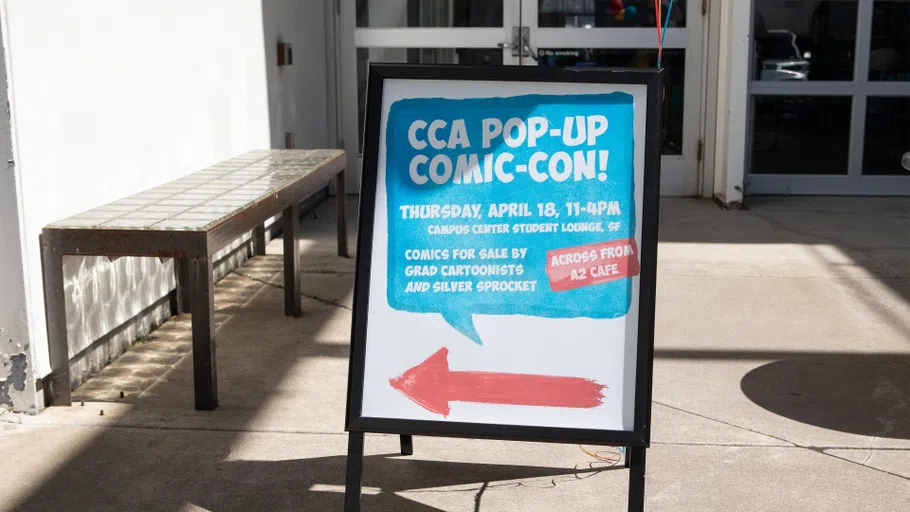
There are plenty of opportunities to show—and sell—your work at on-campus events like Homecoming and off campus at San Francisco-based comics festivals and fairs.
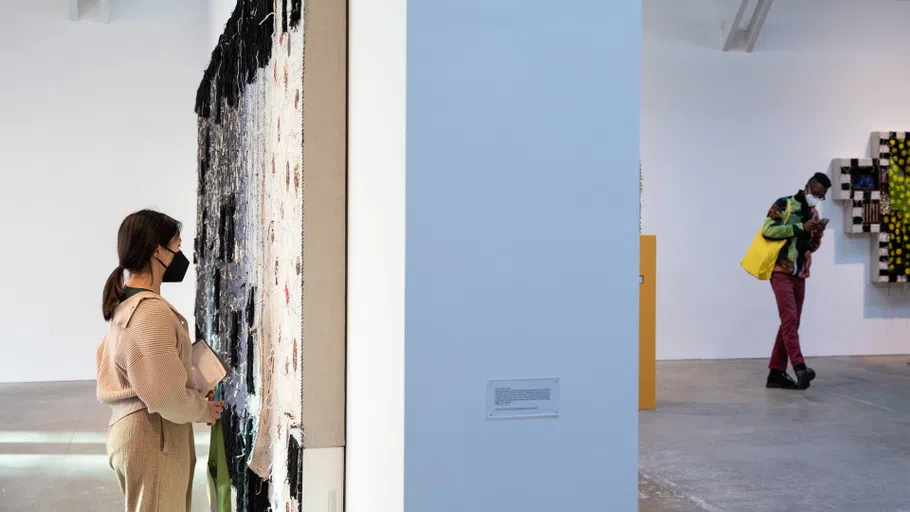
The CCA Wattis Institute for Contemporary brings internationally renowned artists for talks, research and events—including our own faculty! Textiles Professor Josh Faught exhibited recent work in a solo exhibition called Look Across the Water Into the Darkness, Look for the Fog.

Mitchell Schwarzer leads a Rockridge walking tour as part of the Hella Oakland class, a hybrid class investigating the city’s history and current conditions.
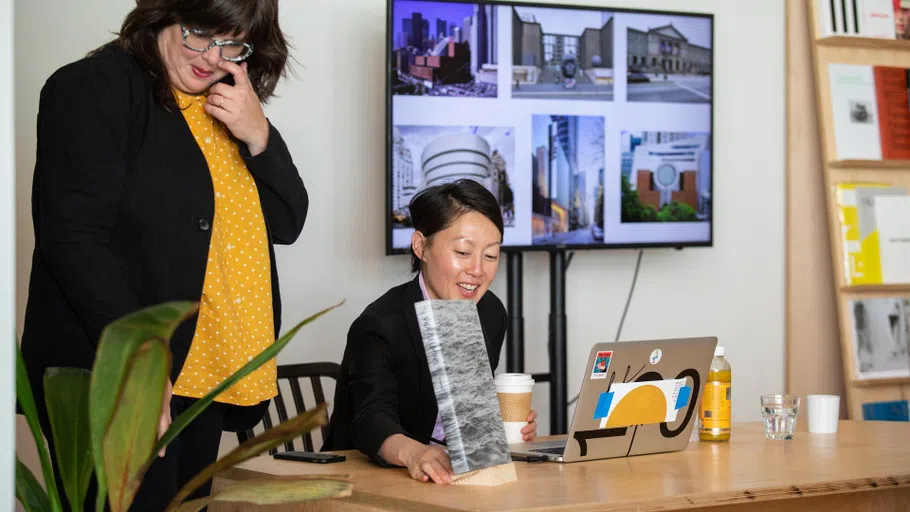
Our proximity to museums like the San Francisco Museum of Modern Art (SFMOMA) means curators, such as Associate Curator Nancy Lim, visit classes to share their real-world experience.
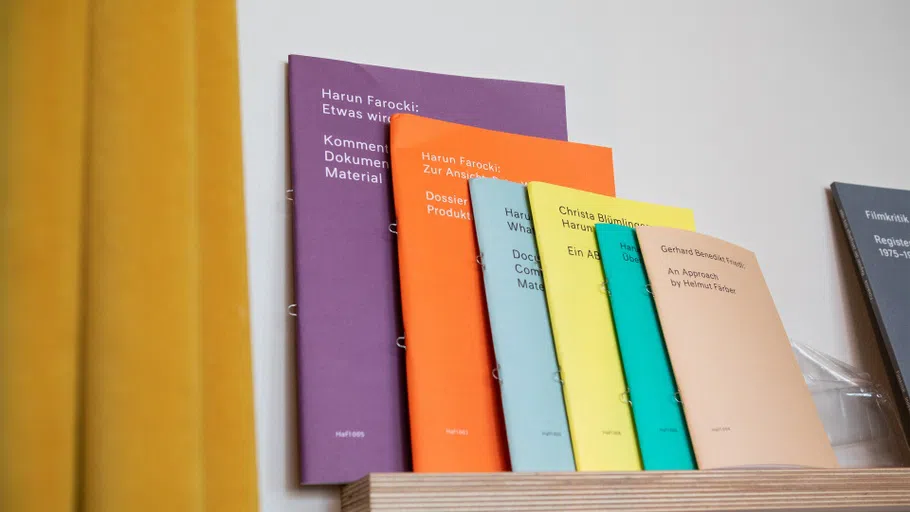
Our library contains zines, artist books, catalogs, and more to mine for research and inspiration.
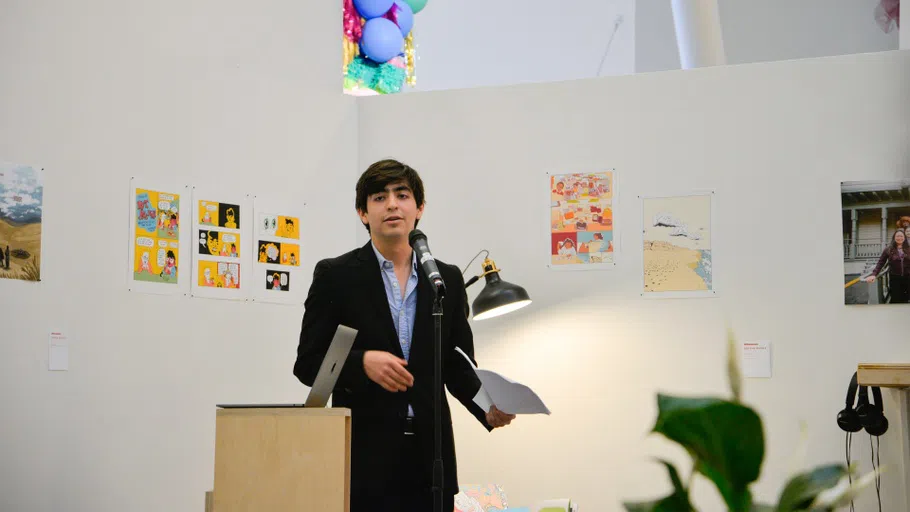
A graduating student reads work at the annual Commencement Exhibition.
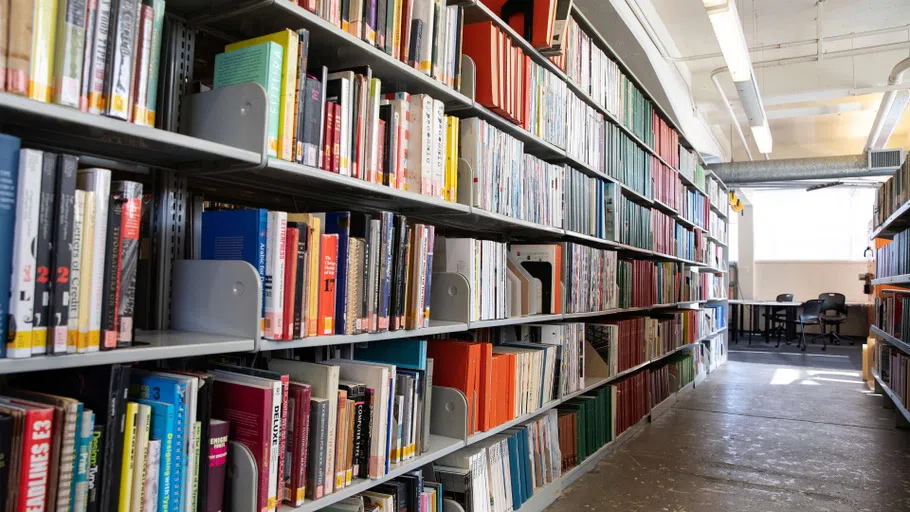
Stacks in the Simpson Library.
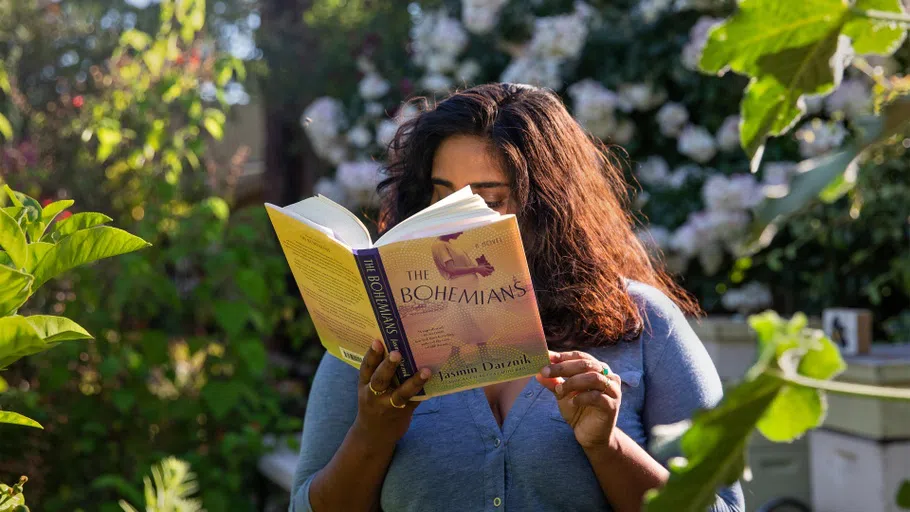
Learn from New York Times best-selling authors like Professor Jasmin Darznik.
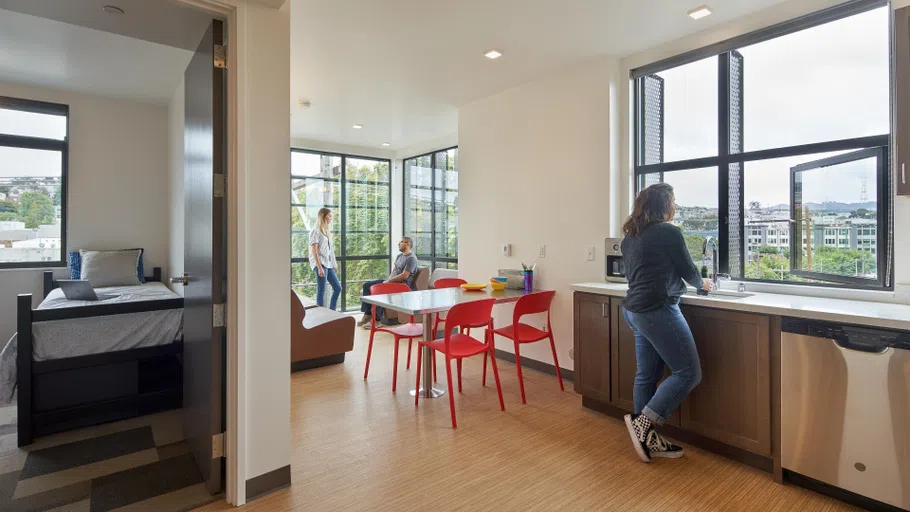
Welcome home!. Blattner Hall was built in 2018, and has modern features and spacious apartment style units flooded with natural light. Photo by Bruce Damonte.
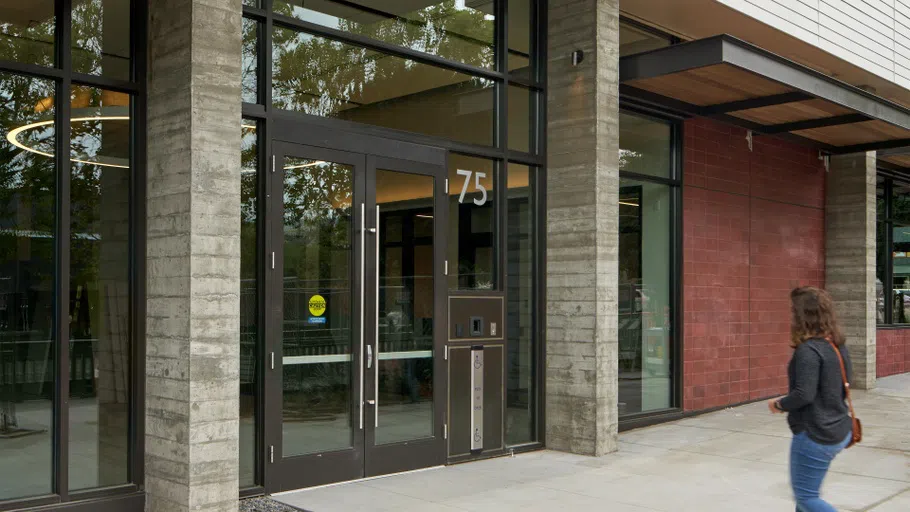
This apartment-style residence hall caters to continuing undergraduate and transfer students.
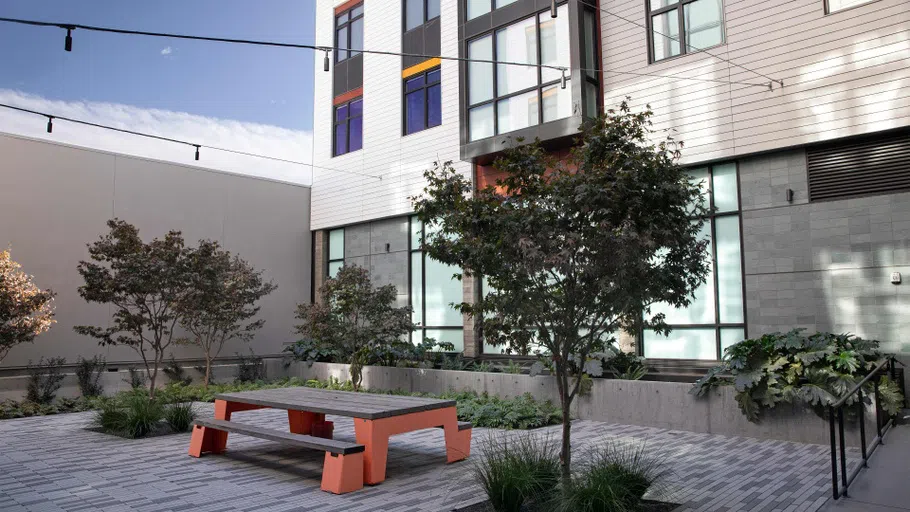
Two outdoor courtyards offer space for gathering with classmates and roommates.

The ground-floor lounge is a space for residential life events and community gathering.
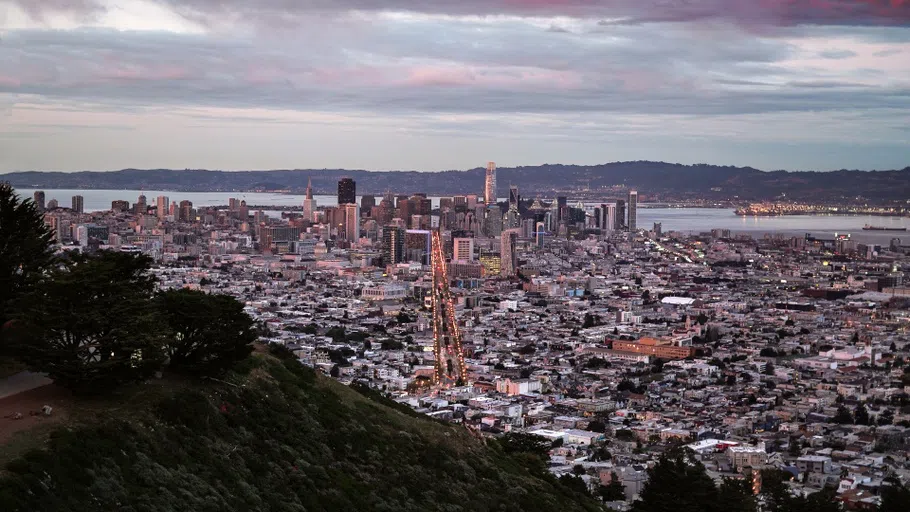
Experience everything the Bay Area has to offer during your grad school years. Photo by Emanuel Ordonez (Photography).
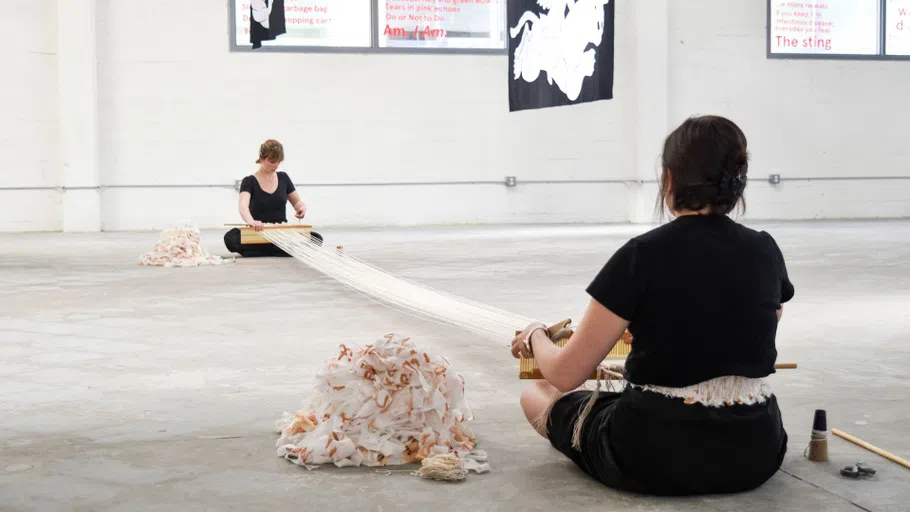
Ingrid Henderson (MFA Fine Arts 2023) and Carolina Cuevas (MFA Fine Arts 2023) participate in a group exhibition at the newly opened Institute of Contemporary Art San Francisco.
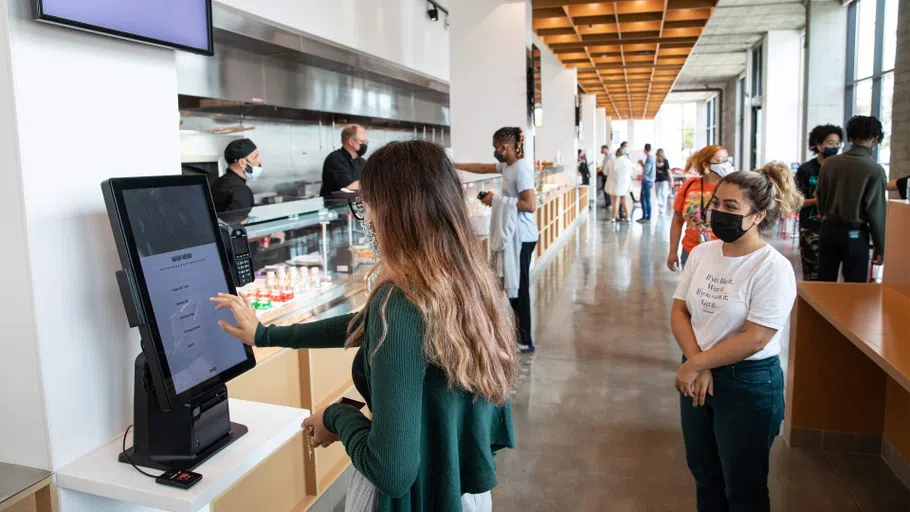
Save time by ordering your food in advance.

Minnesota Street Project is one of the SF art community’s hubs for events and exhibitions. It was also the venue for our MFA Fine Arts thesis exhibition in 2019.
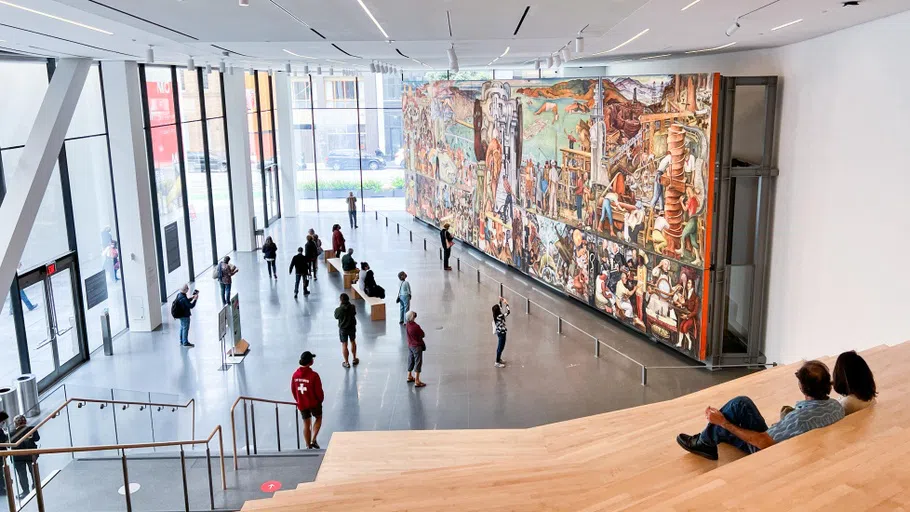
The San Francisco Museum of Modern Art anchors the downtown art scene. Between its size, compelling exhibition schedule, and internship opportunities, it’s an endless source of inspiration.

Thee Parkside is *thee* spot for students, staff and faculty to grab a drink after class or celebrate milestones.
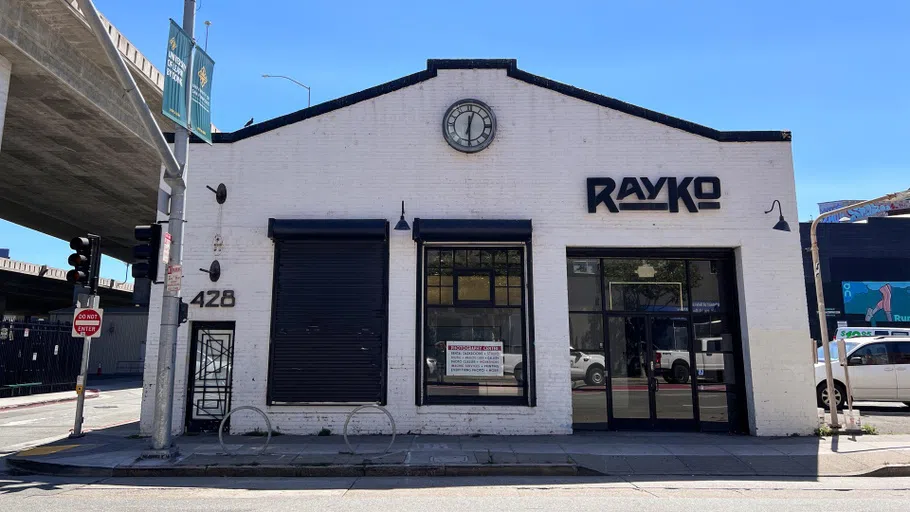
CCA’s Photography and Printmedia programs are based in the RayKo Photo Center, just blocks from museums like the San Francisco Museum of Modern Art.

Quiet on set! Students prep for “take one” with the official slate.
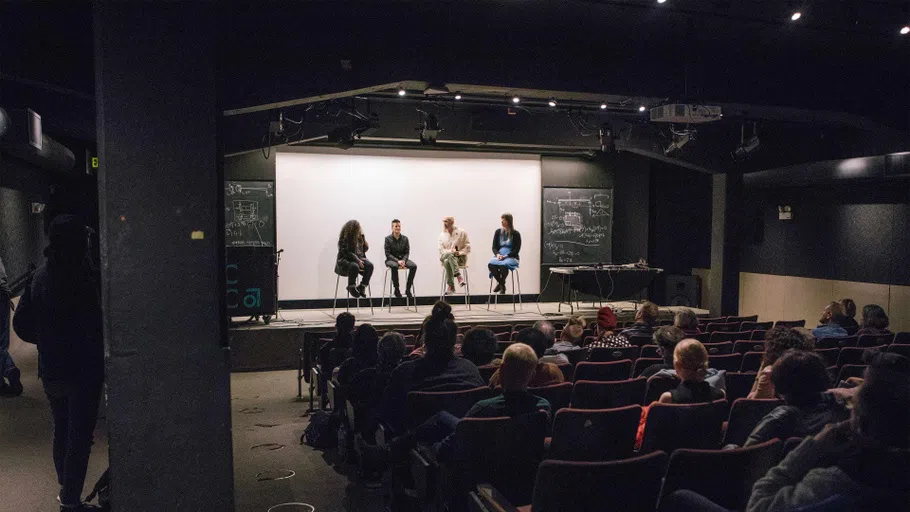
Semester-long lecture series by program bring visiting practitioners to the stage, supplementing your coursework with real-world conversations. Here, artists Sarah Hennies, Kadet Kuhne, and Carla Lucero discuss their sonic practices.
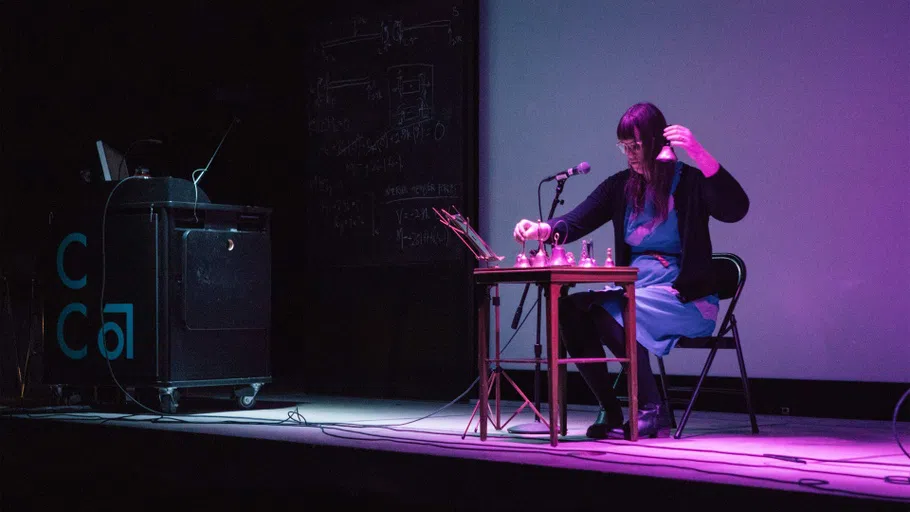
Beyond traditional lectures and artist talks, programming also includes sonic performances.
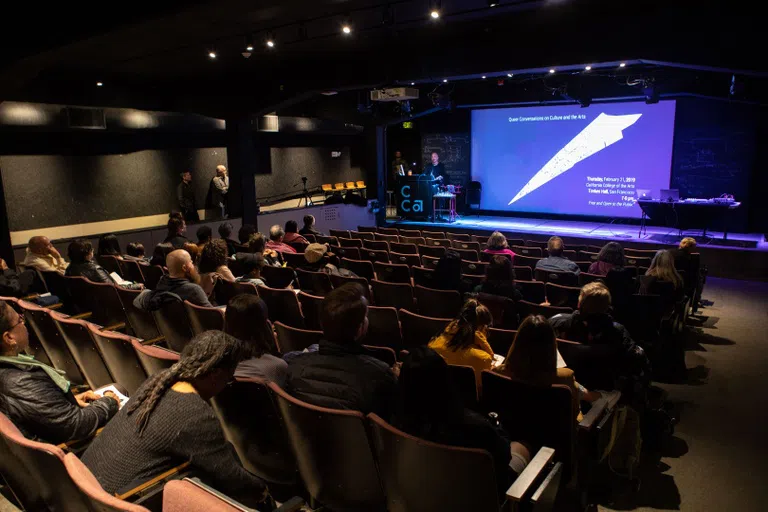
A crowd gathers for an event in the Timken Lecture Hall.
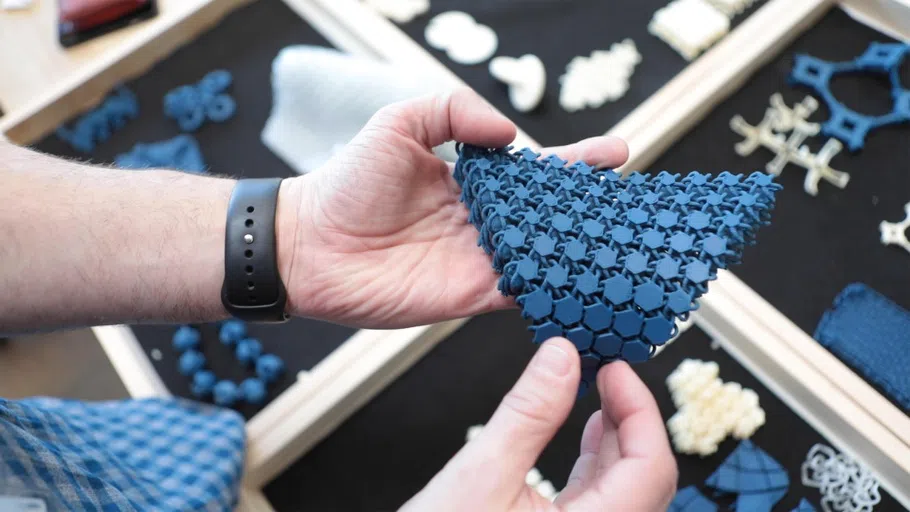
Material research is at the heart of the MAAD program, as seen here with 3D printed samples.
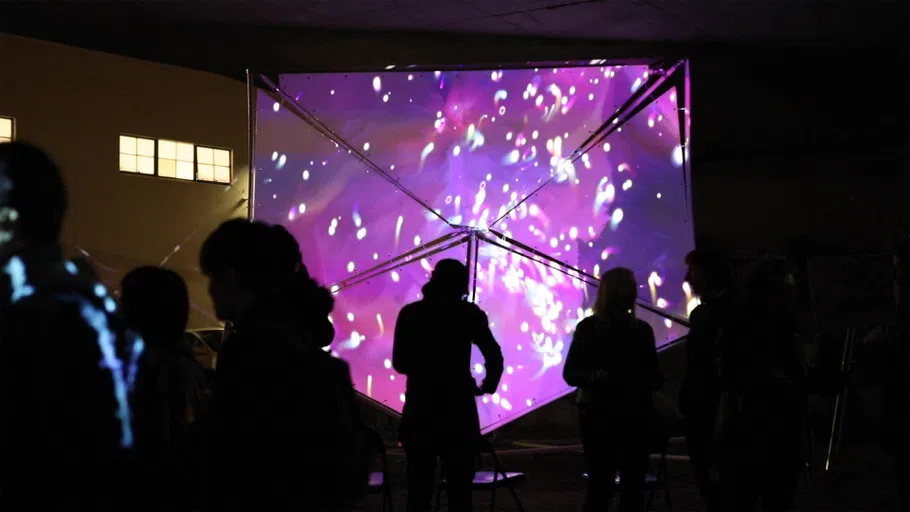
Light is a tool to create immersive designs that can be precisely mapped to structures and forms.
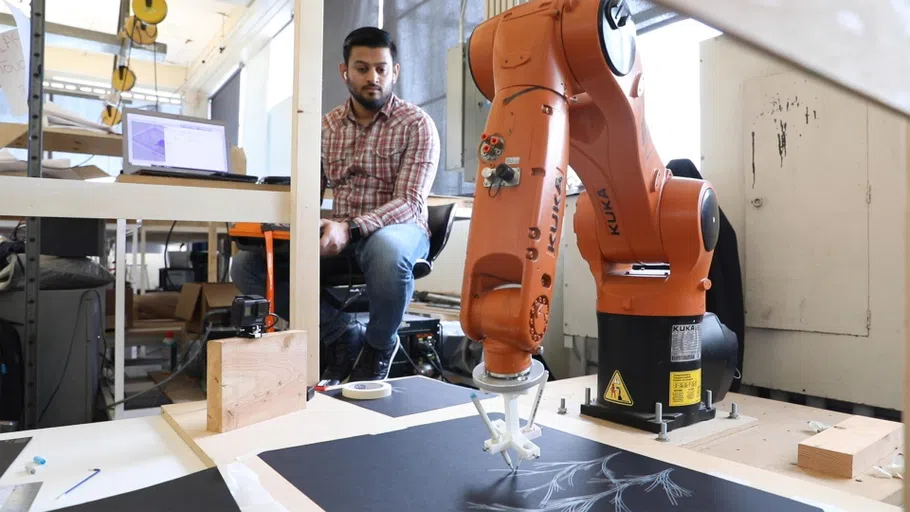
The KUKA robotic arm can be used for projects big and small, including line drawings.
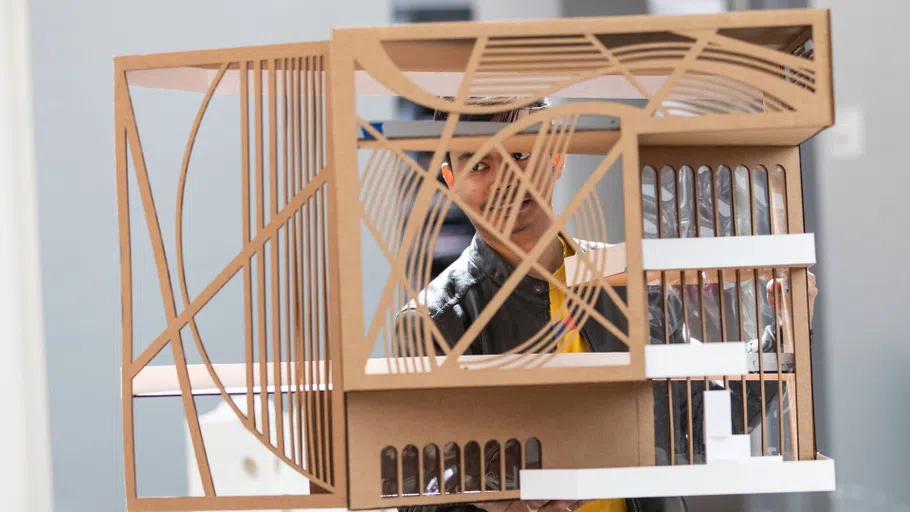
The entire Architecture division comes together for a Show & Tell once a semester where they can present a physical model, drawing, or work in progress.
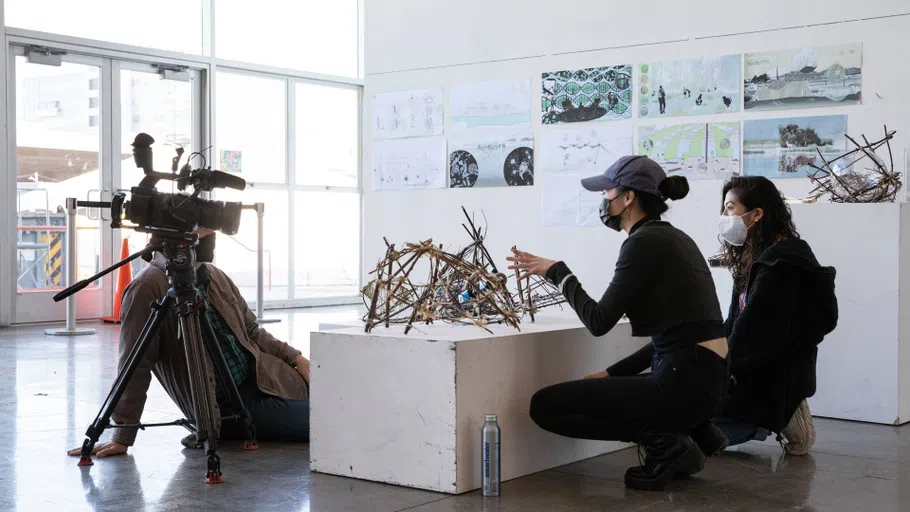
San Francisco’s ABC7 News interviews two MArch students about turning education into action and how they create workable solutions for the environment at CCA.

Malik Sapp (MFA Design 2023) gets some focus time in the MFA Design Studio, a colorful and creative home base for the program.
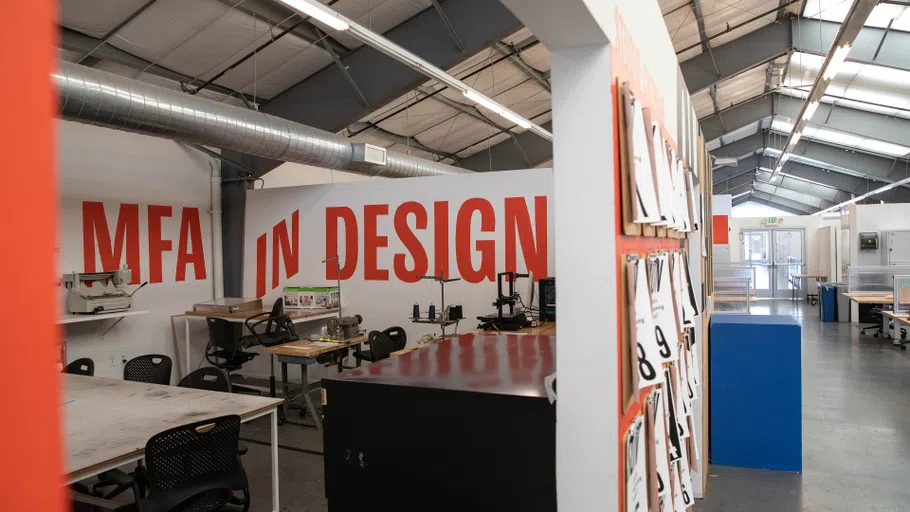
Gather here in the Grad Center to meet with your faculty mentors and cohorts.
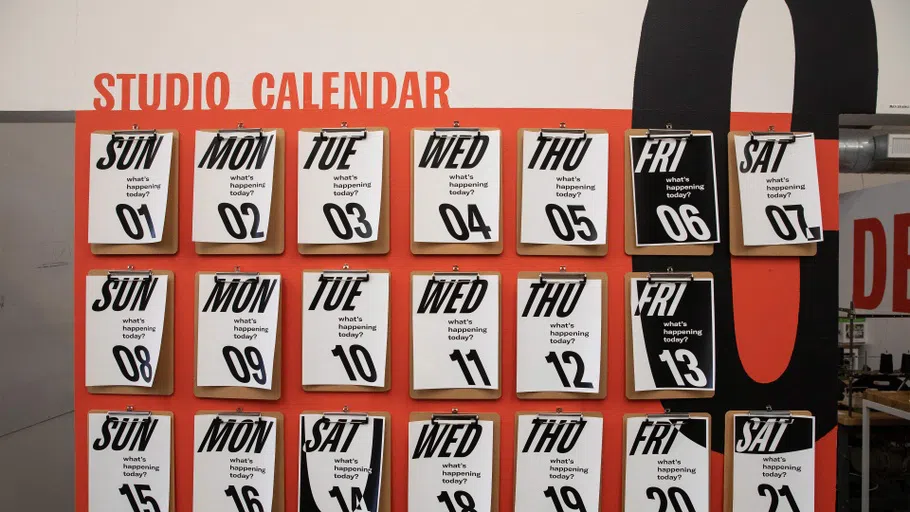
Stay stimulated with events and workshops organized by the program.
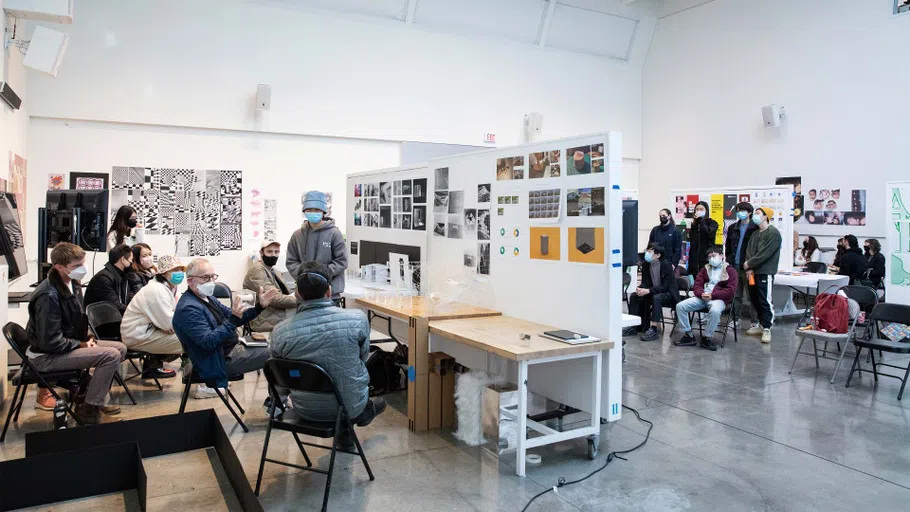
MFA in Design final critiques take place in the Nave Alcove.
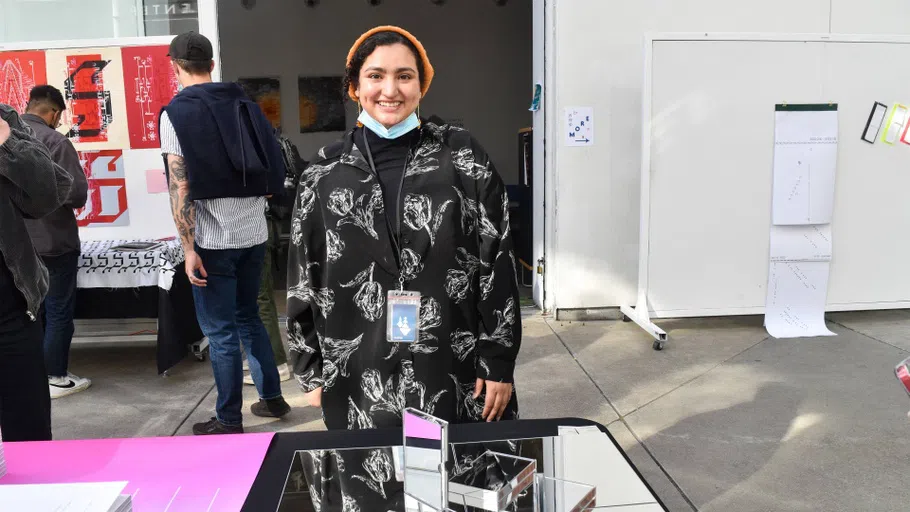
Students from Helen Ip’s Advanced Type and Experimental Publication course held a book fair of their work in the student lounge.
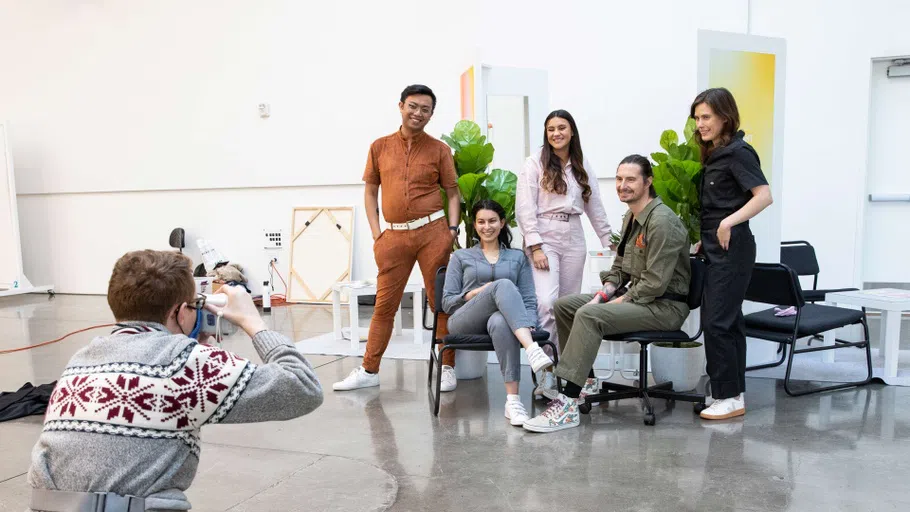
DMBA Strategy’s Experience Studio final pop-up exhibition was a chance to come together and explore projects from the cohort.
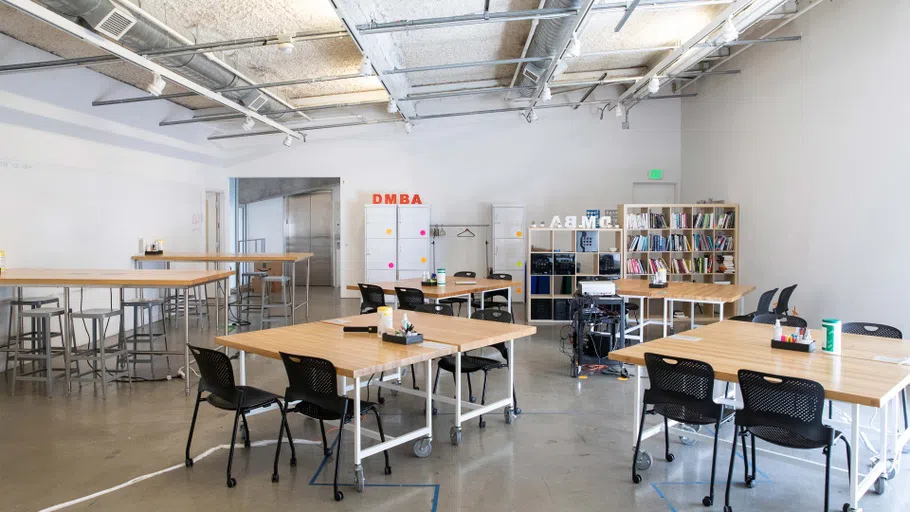
Welcome to the DMBA studio, where students gather once a month to learn about microeconomics, managerial accounting, organization culture, business models & marketing strategies, and so much more.

Students take a look at a project come to life called ‘Wax Nostalgic,’ a mock-up of a record store where customers can design a personalized vinyl record.
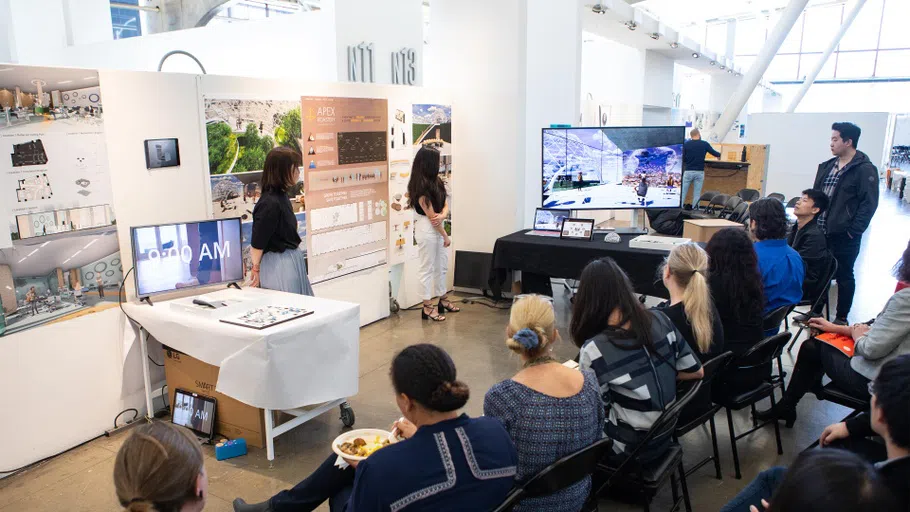
MDes in Interaction Design provides students with the most in-demand design toolkit: a combination of powerful design, process skills, and understanding of organizational systems that empowers them to address important complex challenges.
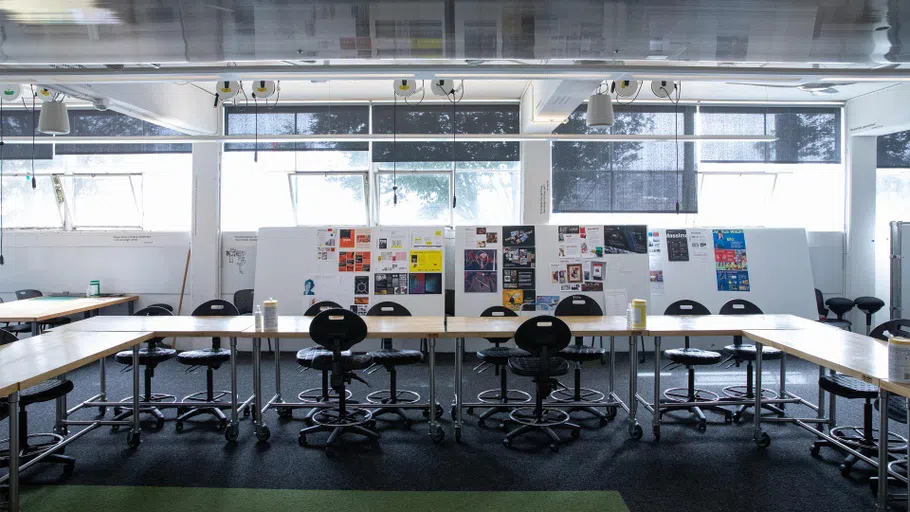
Imagine a better future from here. In this think-tank studio space, you’ll have everything you need to get your ideas off the ground.
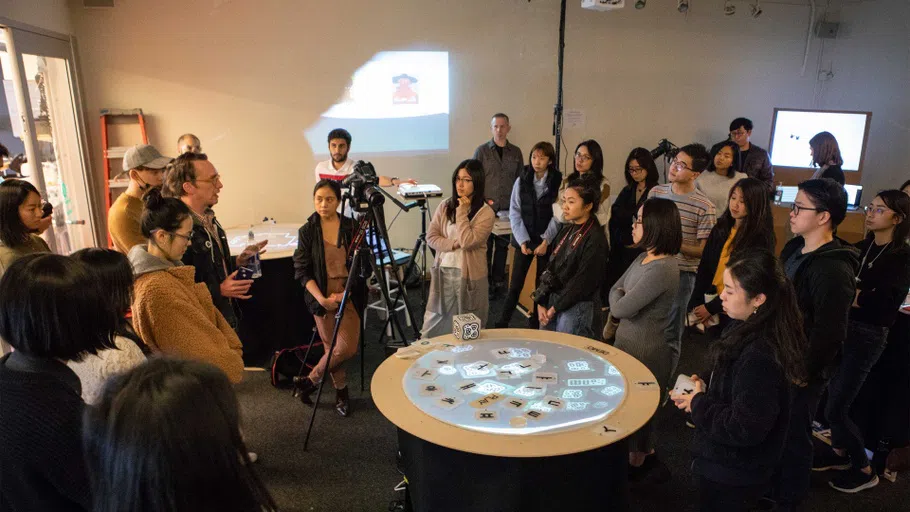
We believe interaction design should not only benefit commerce but also have a positive impact on society.
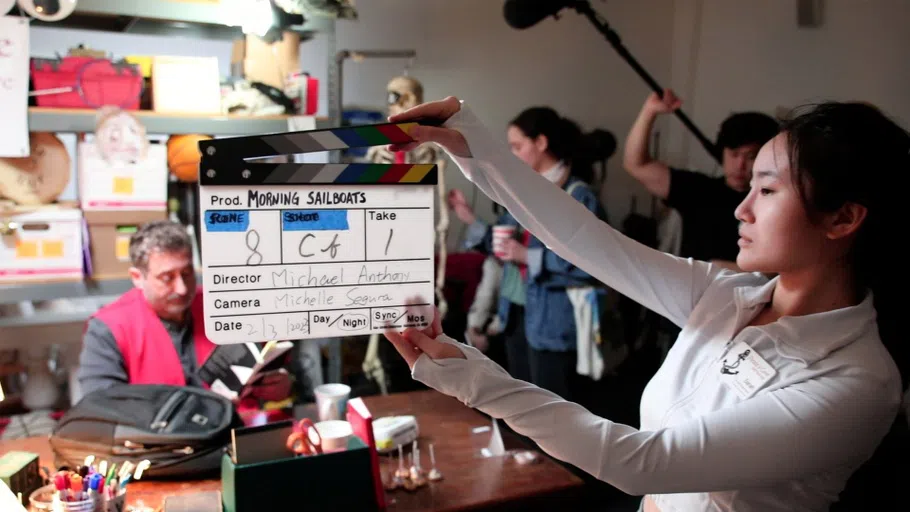
The MFA in Film program is a laboratory for you to develop your work, a sustainable career, and, by extension, to make a real impact on the future of cinema.
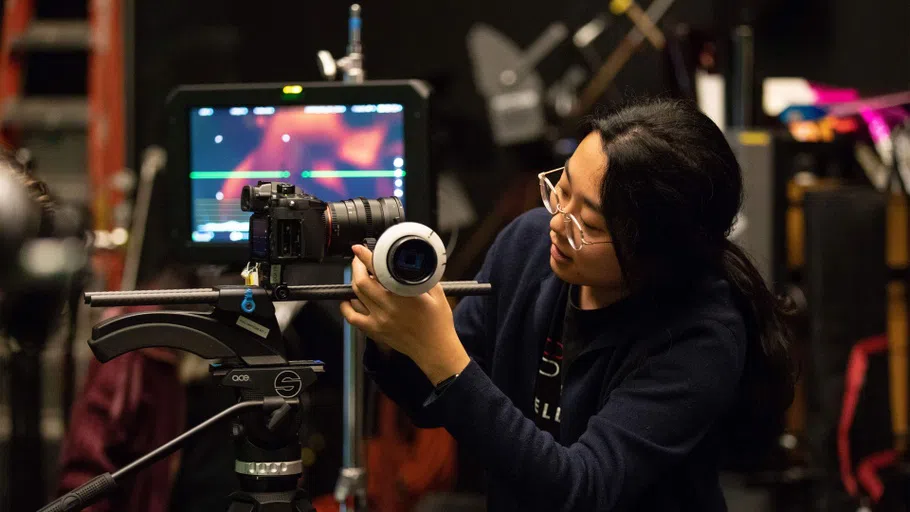
Show the world your POV! The MFA in Film program encourages you to continuously question and refine your ideas and working methods while strengthening your intuitive and conceptual capabilities.

You’ll graduate with conceptual skills, technical dexterity, and professional networks that will help you pursue a lifelong career in filmmaking.
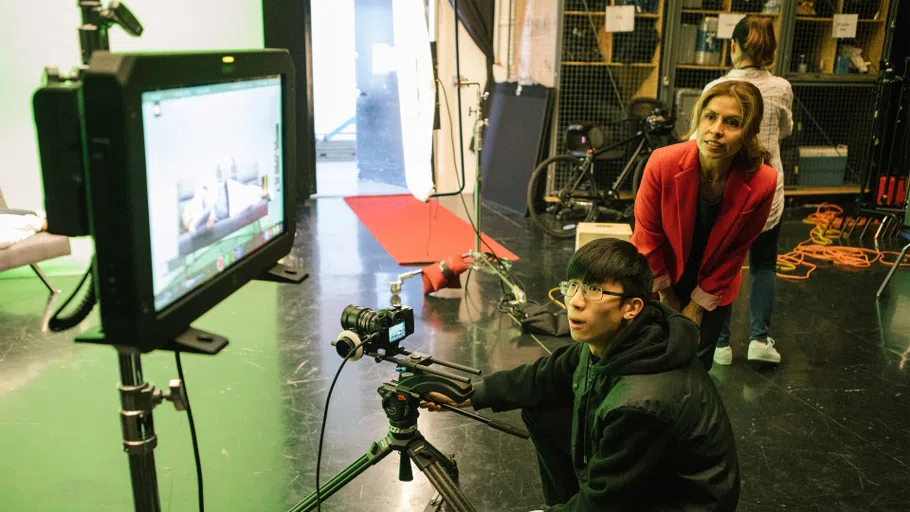
In your screenwriting class, you’ll master narrative and documentary screenwriting and exit the class with a script ready for production the following semester.
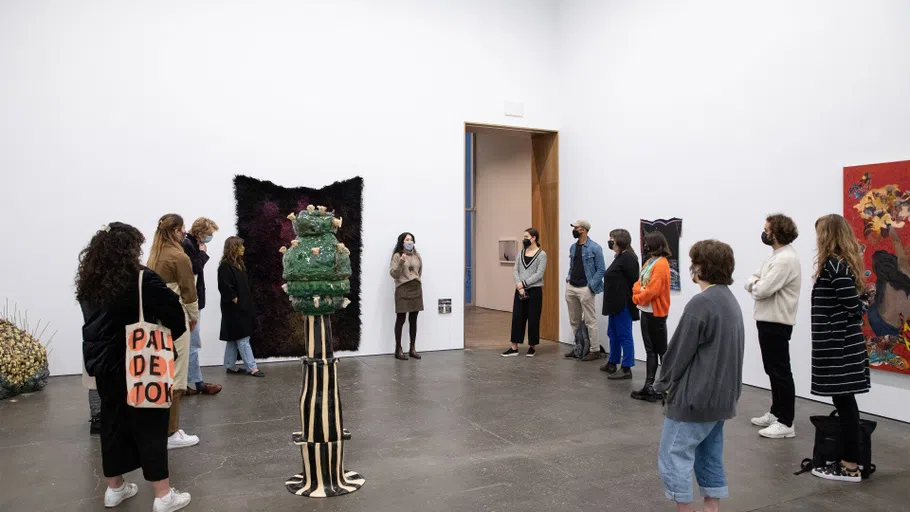
Alumna Naz Cuguoğlu (MA Curatorial Practice 2020) gives the current Curatorial Practice and Visual and Critical Studies cohort a tour of an exhibition she curated at the nearby /slash art gallery.

Anthony Huberman, director and chief curator of the CCA Wattis Institute for Contemporary Arts, leads a discussion with the Art and Experiences class in the Wattis bar/library.
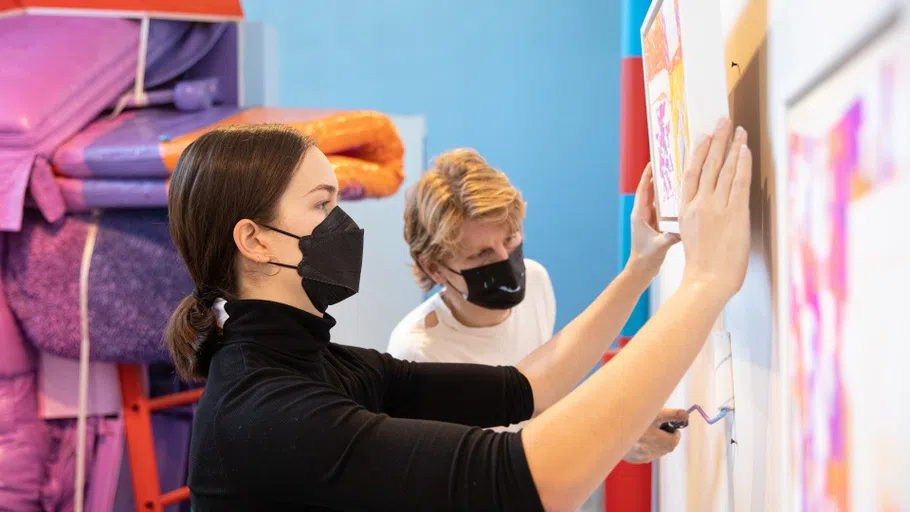
Meghan Smith (MA Curatorial Practice, MA Visual and Critical Studies 2023) and Marco Bene (MA Curatorial Practice 2023) install their co-curated exhibition ‘plaYplaYplaY.’
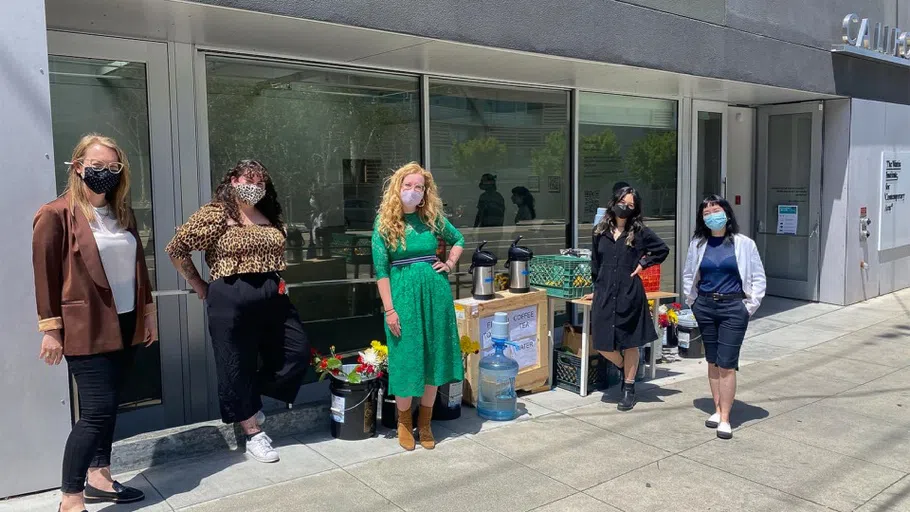
The Curatorial Practice class of 2021 gets ready to install their thesis exhibition at the CCA Wattis Institute for Contemporary Arts.
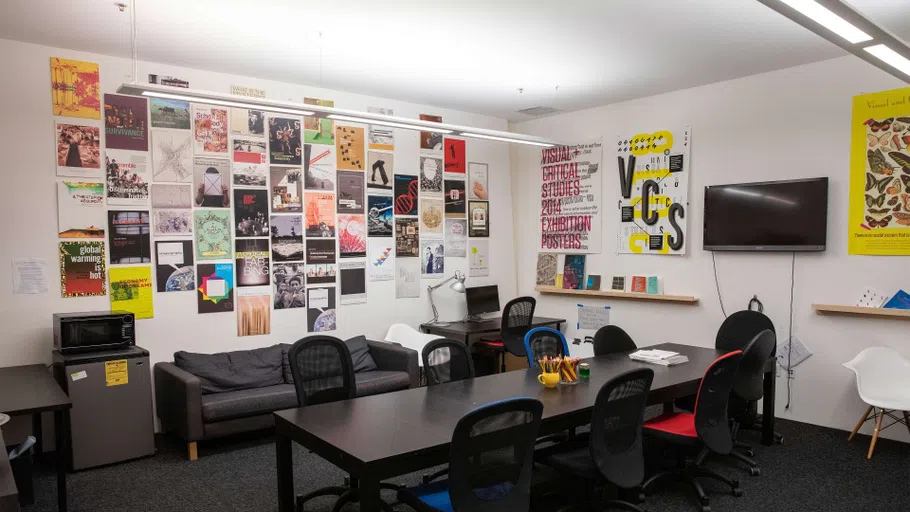
The Visual and Critical Studies program offers a rigorous yet supportive context for you to develop four interrelated areas of expertise: attentive viewing, critical thinking, cogent writing, and visually enhanced public speaking.

In the spring semester of your thesis year, you’ll formally present your research to the public. The day-long VCS Symposium groups graduating students into thematic panels moderated by prominent scholars. (Photo by Tamara Suarez Porras).

Student-faculty mentorship is a large part of the MAAD program, guiding your individual research throughout the year.
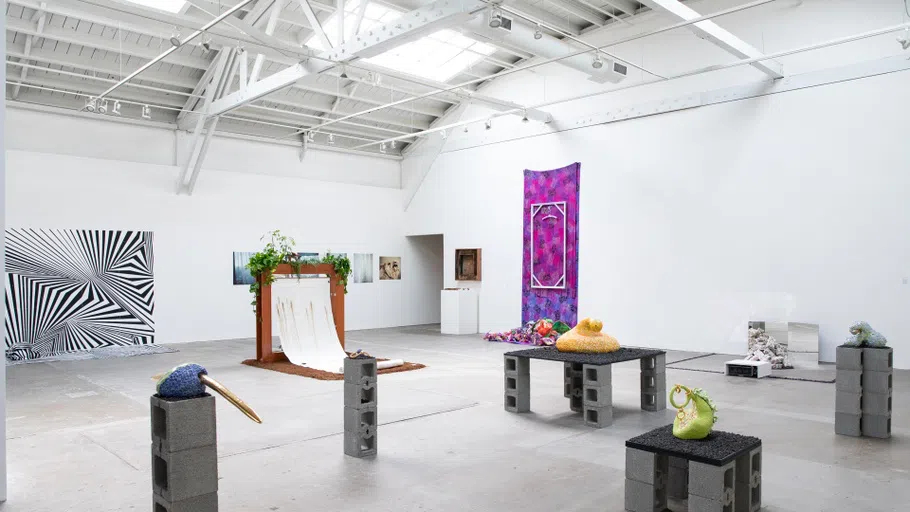
The spring semester always culminates with a much anticipated group exhibition.
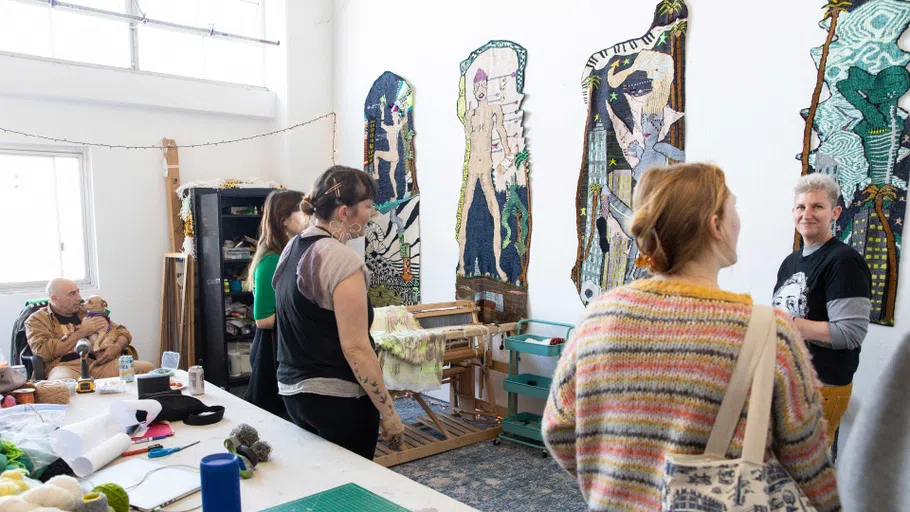
Each full-time, in-resident MFA student is provided a personal studio in the CCA Dogpatch graduate complex, located in the historic Dogpatch neighborhood of San Francisco.
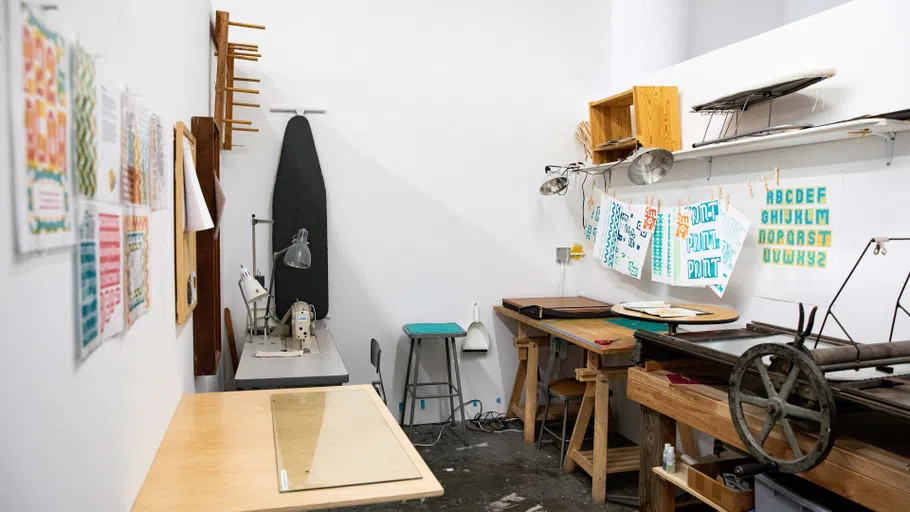
The CCA Dogpatch graduate complex includes a wide range of manual and digital tools to support work and creative growth in all artistic forms.
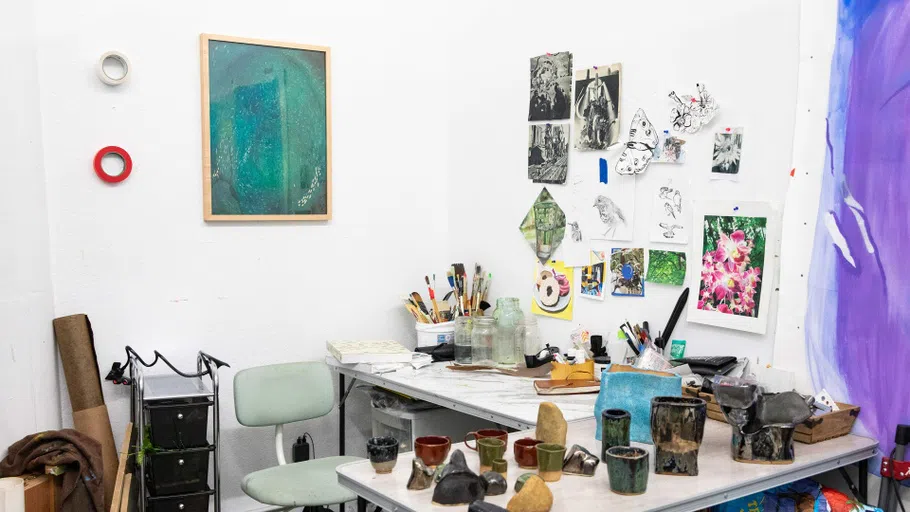
A peek at Elizabeth Godbey’s (MFA Fine Arts/MA Visual And Critical Studies 2023) studio space.

Our expert faculty help you perfect your writing and drawing skills, while you study everything from comics theory to publication design.

Expect access to state of the art digital equipment to achieve the best visuals possible for your work.
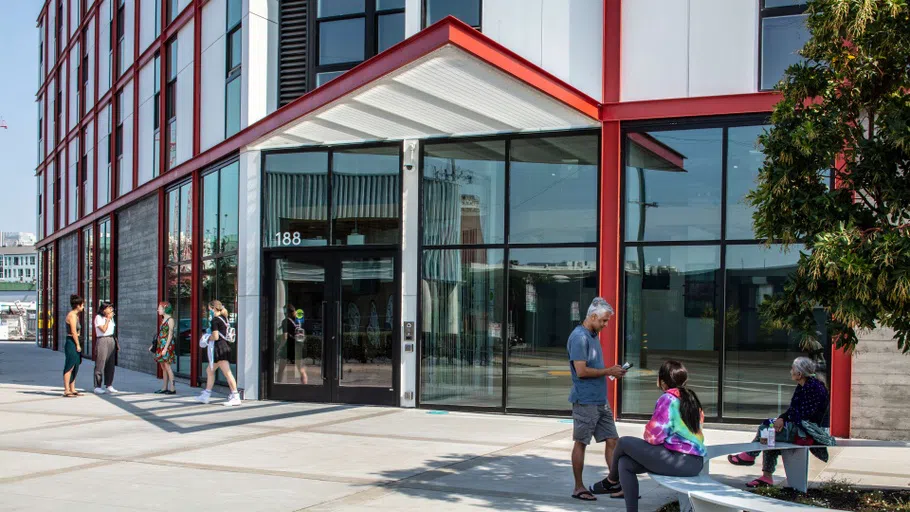
Founders Hall offers a contemporary dormitory design, downstairs dining, and convenience—it’s right next door to the Main Building. Photo by Richard Barnes.
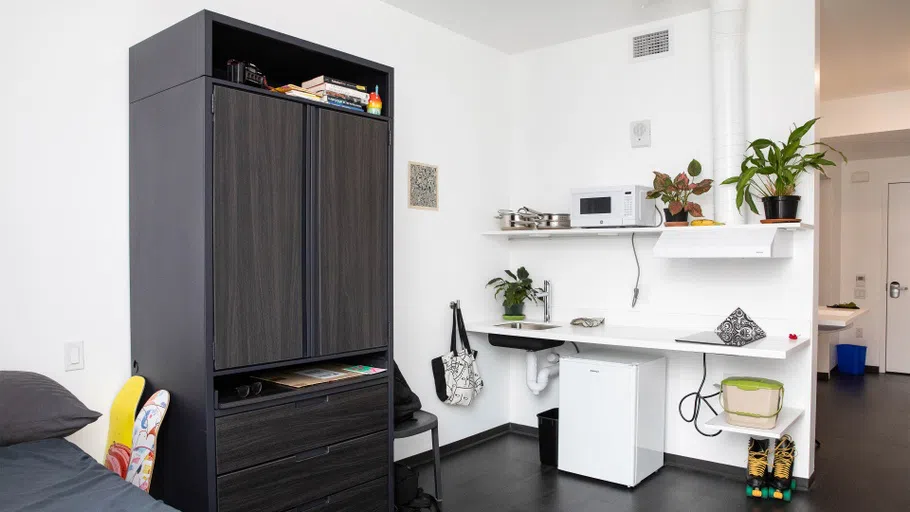
Available room options in Founders Hall include a private studio or a three-bedroom suite.
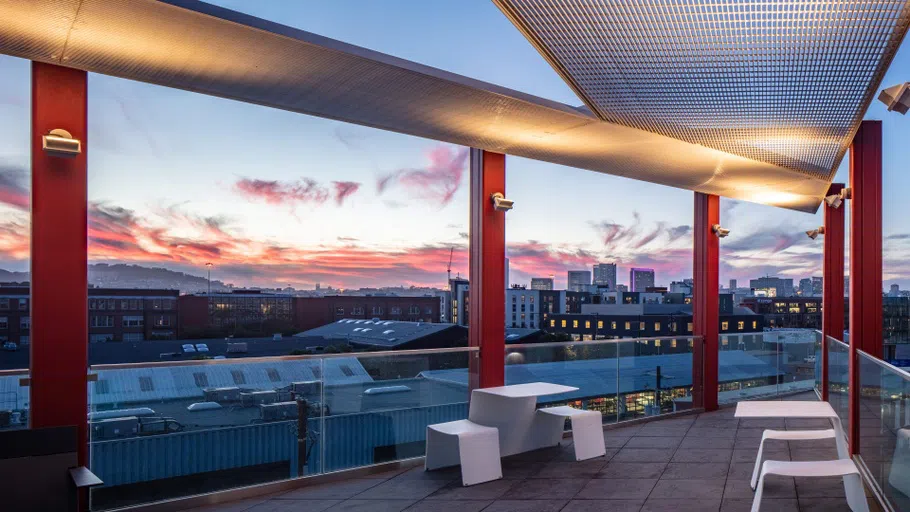
The terrace offers views and vibes, especially at sunset. Photo by Richard Barnes.

Coffee? The DoReMi bar has you covered for your caffeine fixes.

Michael Wertz’s class ‘Forming Ideas’ is all about playing with form and learning to make different books and book objects. “I’ve never had more fun expanding and playing with the written word.” — Emily Garcia (MFA Writing 2022)

Professor Tom Barbash is one of many acclaimed faculty members of the program, which includes the voices of multiple genres, aesthetic traditions, and vibrant writing communities.
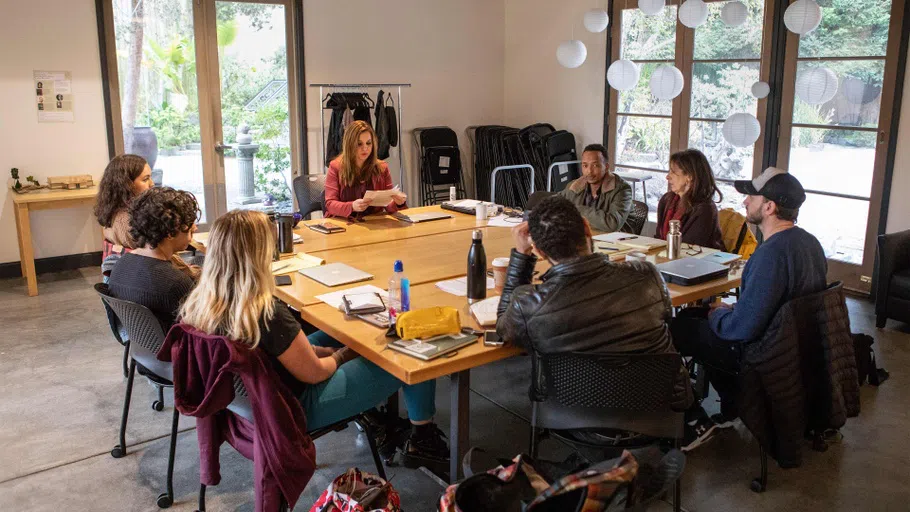
New York Times best-selling author and Writing Chair Jasmin Darznik teaches a range of classes, from the Literature of San Francisco to Writing for Designers.
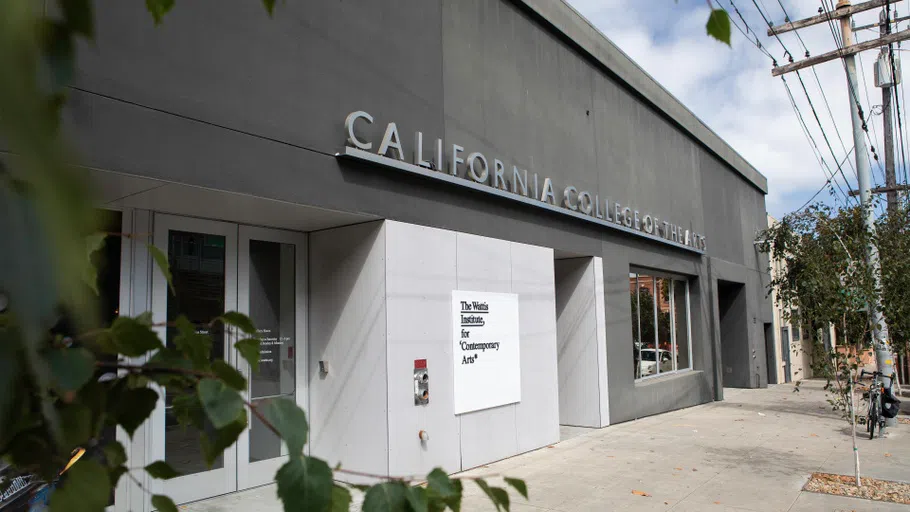
Welcome to the CCA Wattis Institute for Contemporary Arts, aka “the Wattis.”
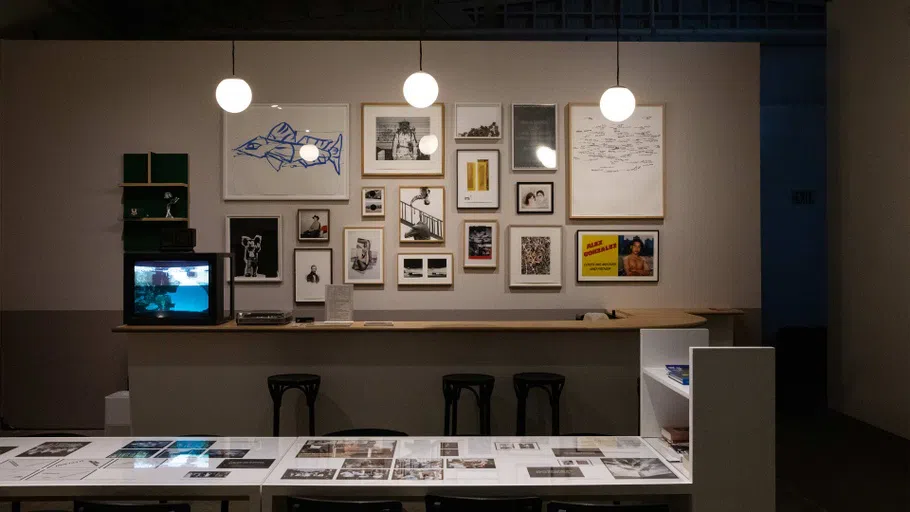
A space to think (and drink), the bar/library can be used as a quiet study spot, meeting room, or gallery receptions.
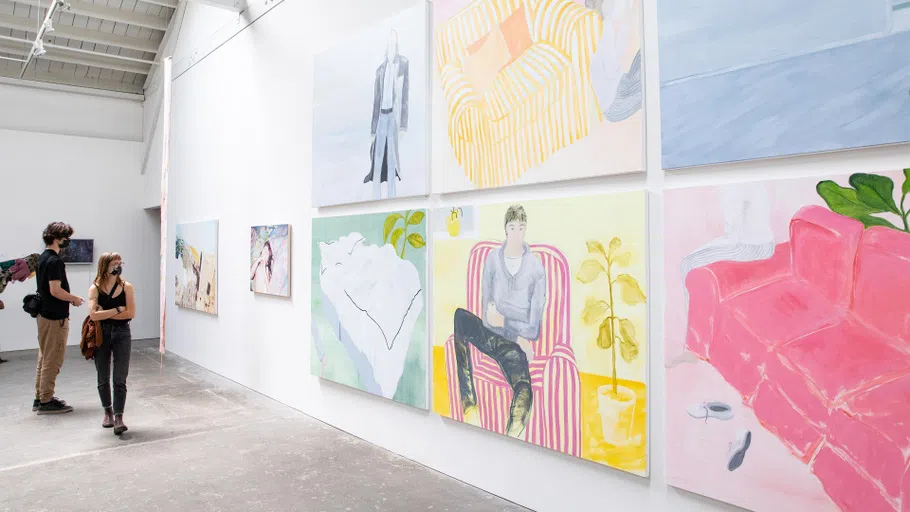
Linda Fenney’s (MFA Fine Arts 2022) large-scale paintings on view in the CCA MFA Exhibition 2.
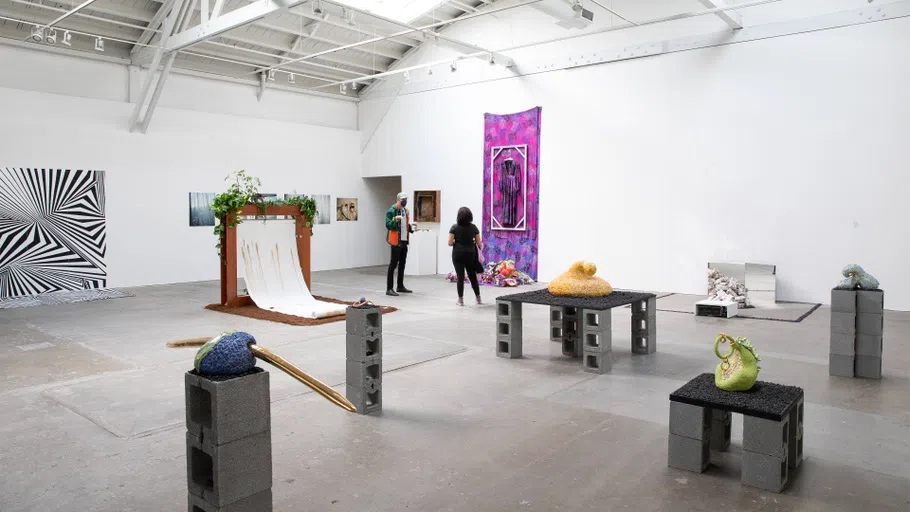
From the CCA MFA Exhibition 1, featuring the work of class of 2022 artists Corrie Willie, Nicki Shockz, and Irene Cai.

You’ll learn traditional techniques like dyeing with organic and synthetic materials.
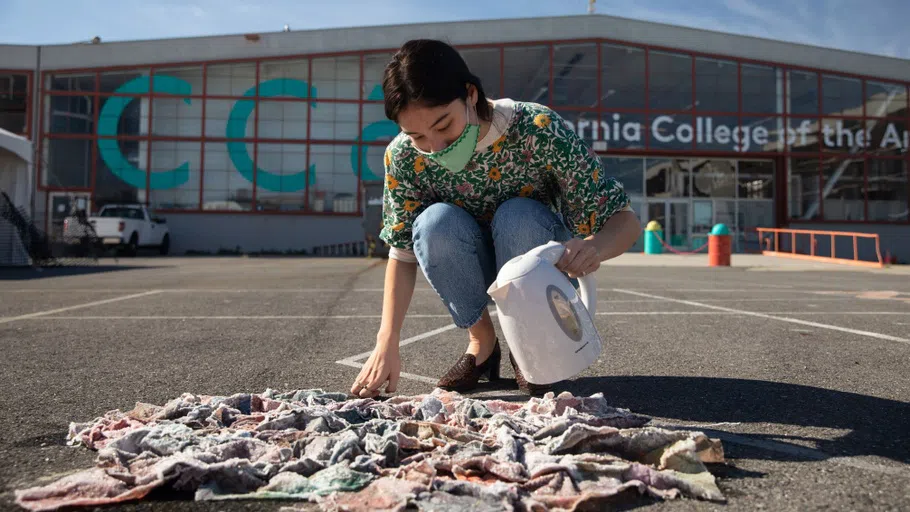
Student Hanna Boyd transforms muslin into a sculptural piece with hot water.
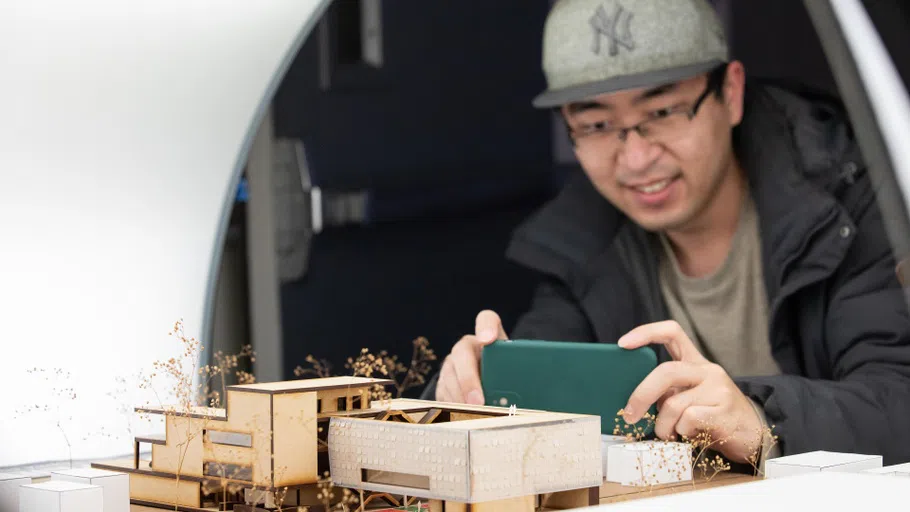
Architecture student Anbin Liu uses the Orbiculight to document his model from all angles.
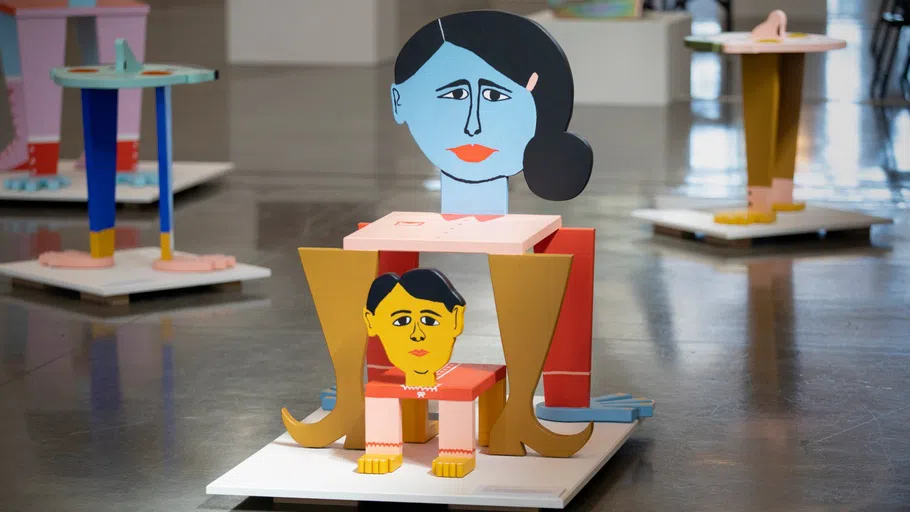
“Taking furniture classes really boosted my confidence and opened the doors wide as to what my illustrations could exist on,” says Esther Elia (BFA Illustration 2019).
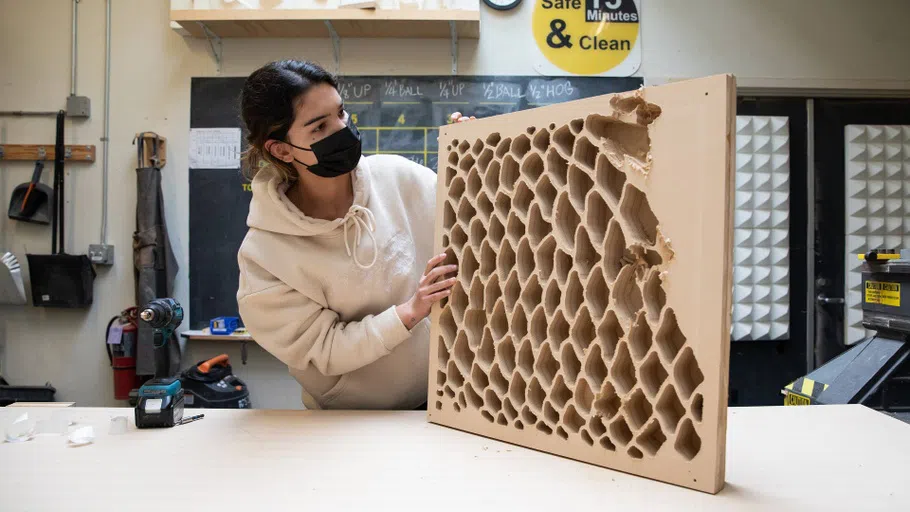
Industrial Design student Giovanna Spilman shows a work in progress made on the CNC router.
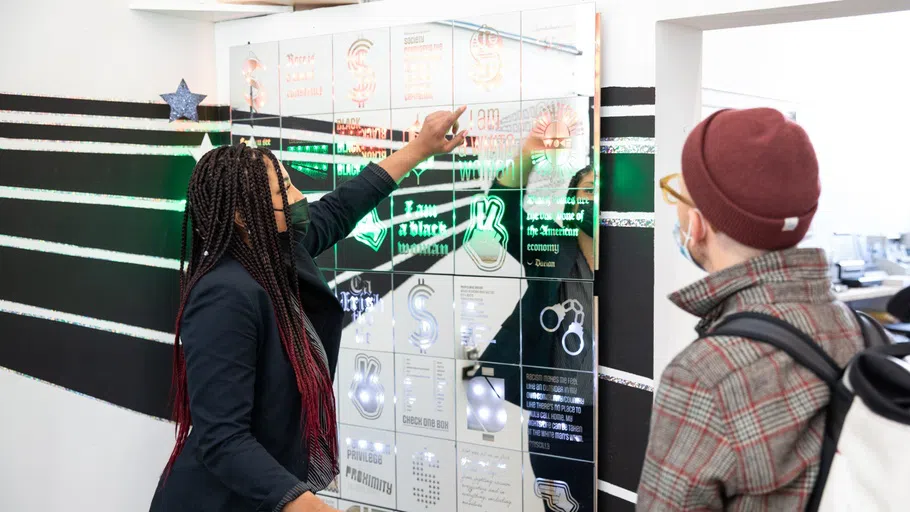
Janel Mitchell (BFA Graphic Design 2022) presents 'Proximity,' an installation created out of laser-etched mirrors with LED lights that are audio activated to simulate the existence of a black body threatened by any police contact.
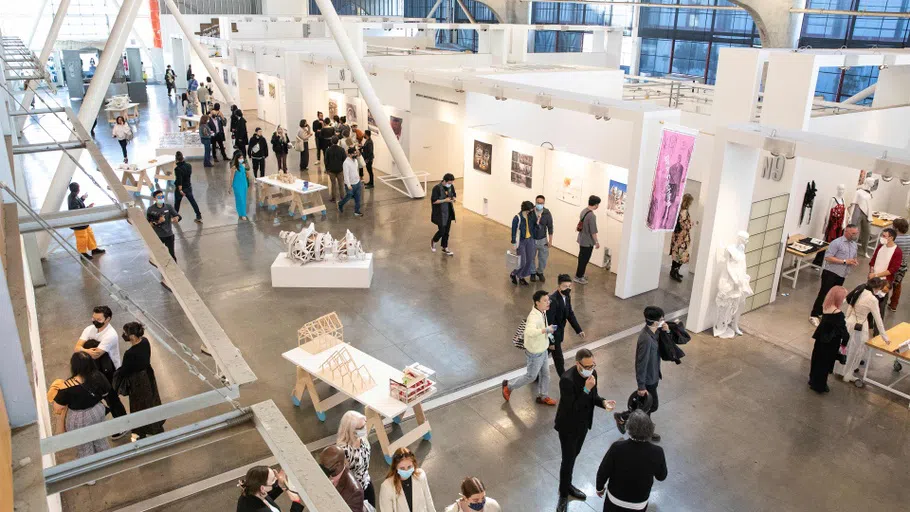
The atrium space becomes an exhibition space toward the end of each semester, with every available wall and pedestal used to display work.
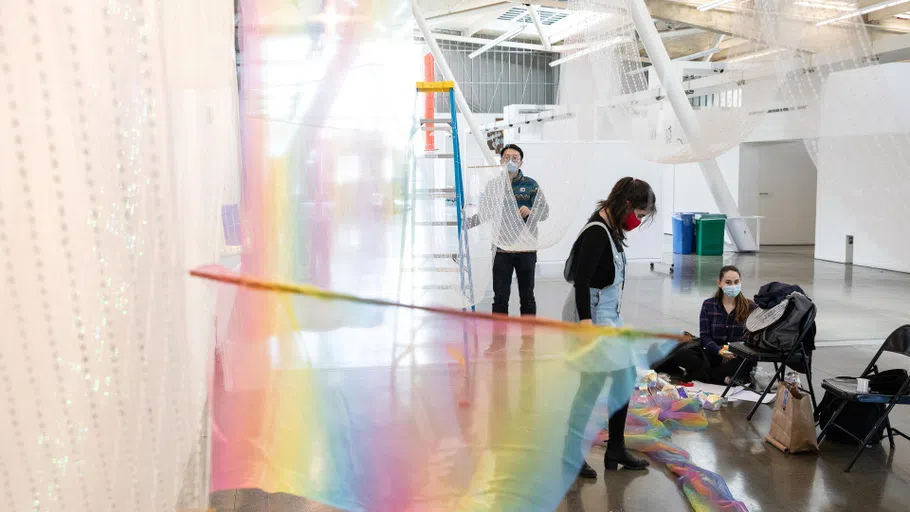
The Nave is a space for site-specific installations, such as the FLOW STATE PAVILLION by MArch students Anbin Liu, Elif Aydinli, Saina Gorgani, Shreya Shankar, and Weisheng Zhong.
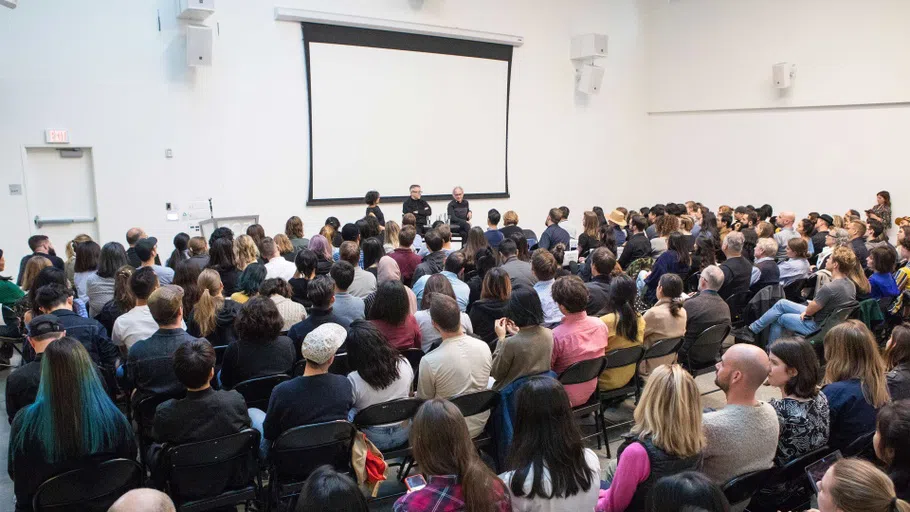
The multi-purpose room off the Nave is flexible to host critiques, installations, and lectures, such as this conversation between IDEO’s Tim Brown (IDEO) and Emmy-nominated producer Barry Katz.
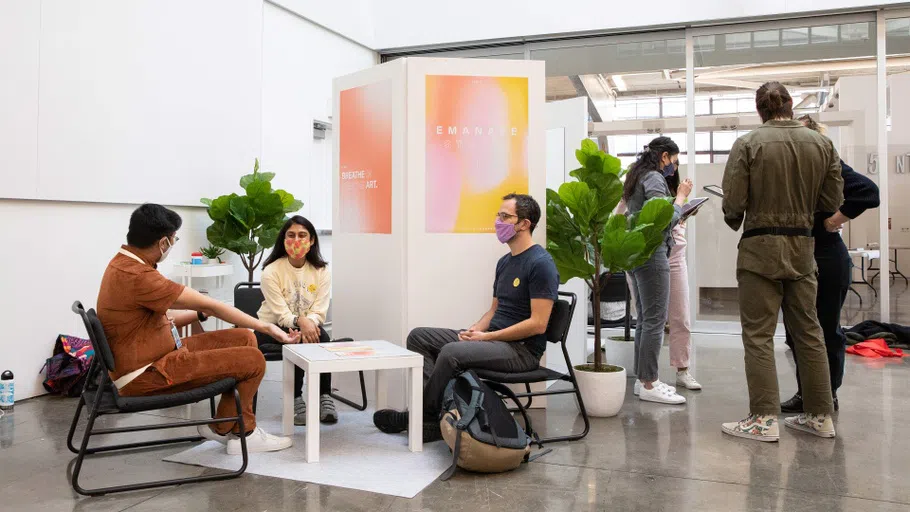
The DMBA program hosts a pop-up in the Nave Presentation Space.

MArch studio crits are often held in the Nave, such as Chair Brian Price’s introductory course.

CCA has been a cornerstone of the Bay Area art and design community for more than 100 years.
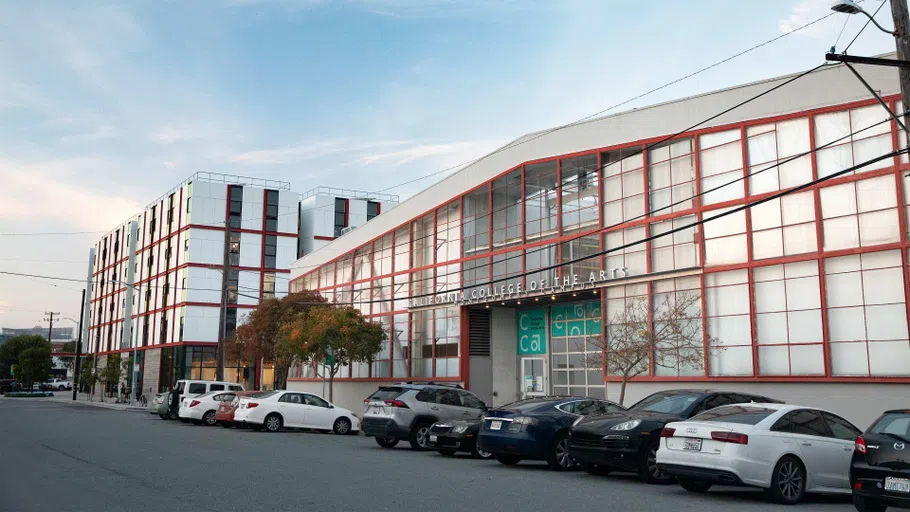
Fun fact: the Main Building used to be a Greyhound bus maintenance facility. Keeping true to our sustainability values, we repurposed all 51,000-sq ft of it into our campus’s primary grounds.
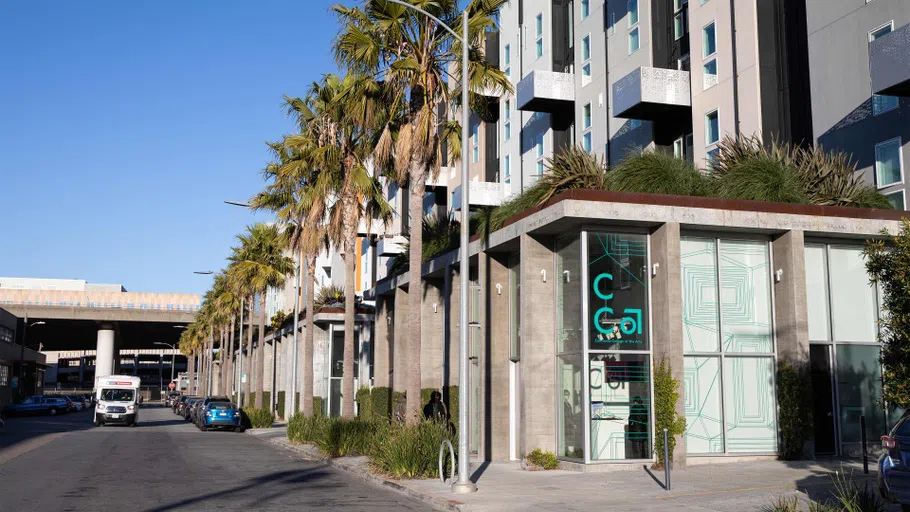
Some of our classrooms and studios are just a super short walk away from the Main Building.
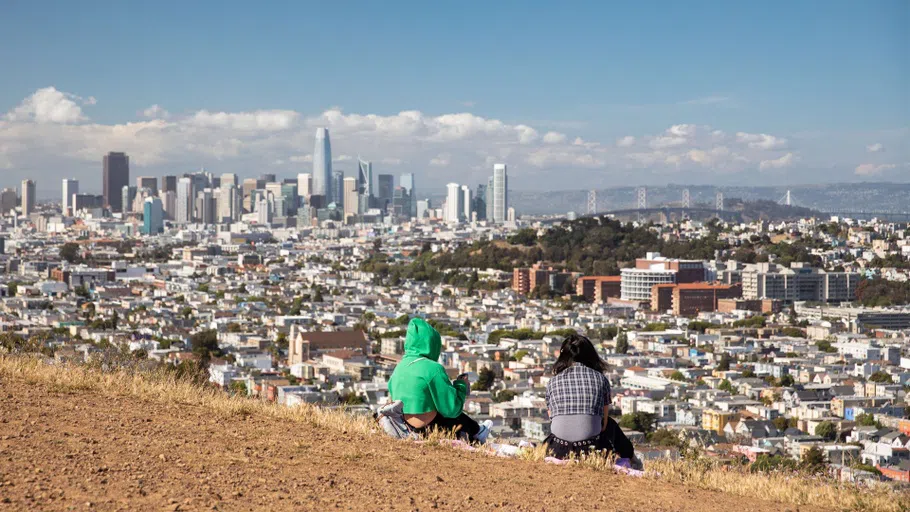
Living in San Francisco is an endless adventure and during your time here, you’ll learn how to look at life from a new angle.
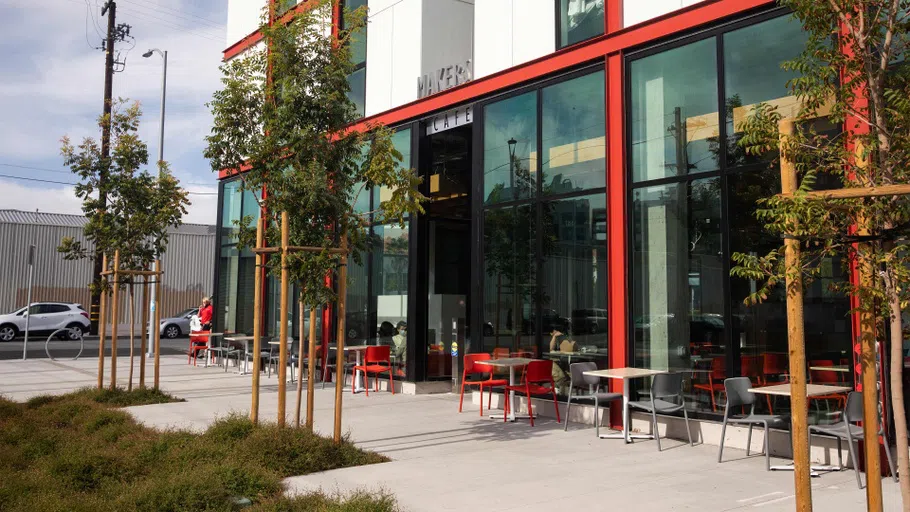
Makers Cafe, our dining hall, is where we come together to refuel and renourish ourselves through both food and personal connections.

Working professionals in the fashion and apparel industry come by for a critique or “crit” of final projects by students in Fashion Design.
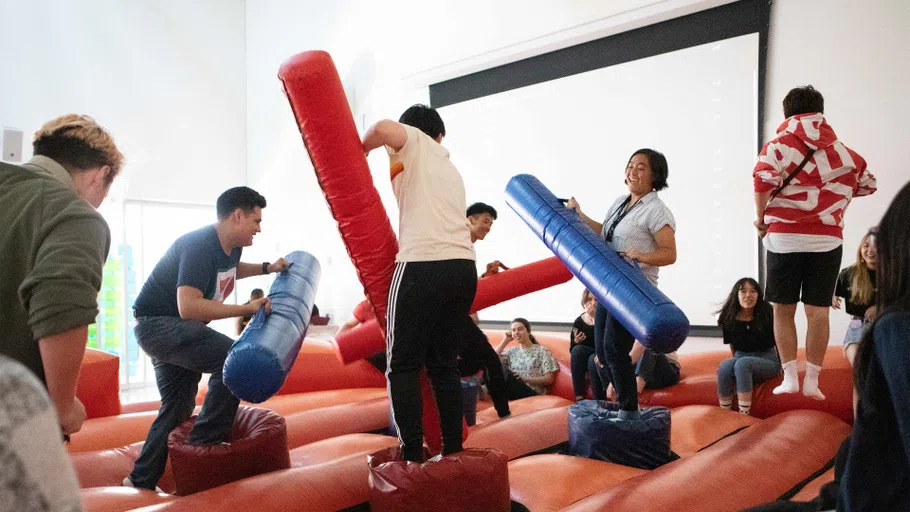
Sometimes the Nave also turns into a bounce house! Chimerapalooza, our annual festival hosted by student life, is one of the highlights of the Fall semester.
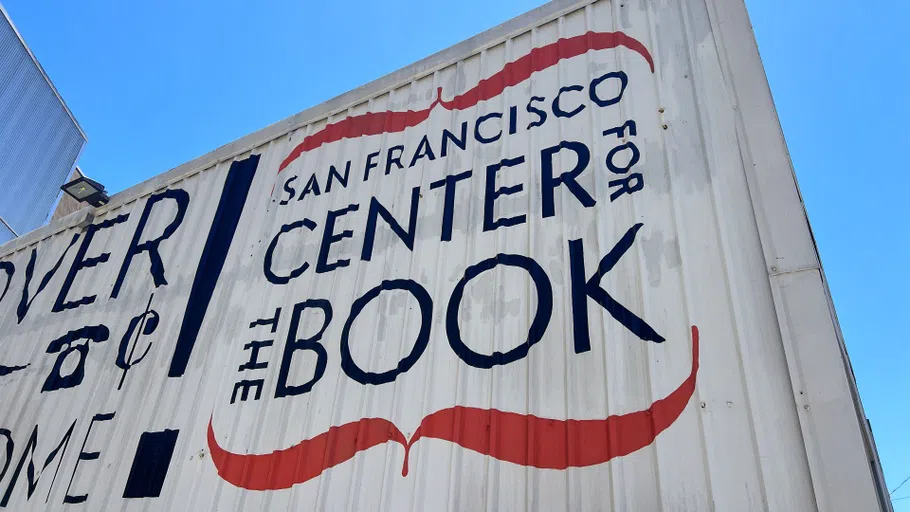
We’re excited to partner with the renowned SF Center for the Book! This special, storied spot is a hidden gem and we’re so lucky to be able to hold classes here.
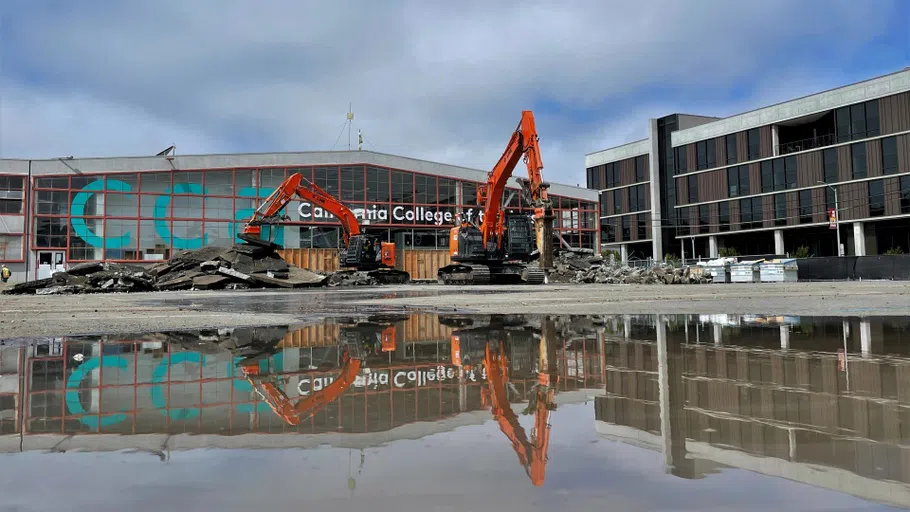
We’ve started to build our campus of the future—and this is just the beginning.
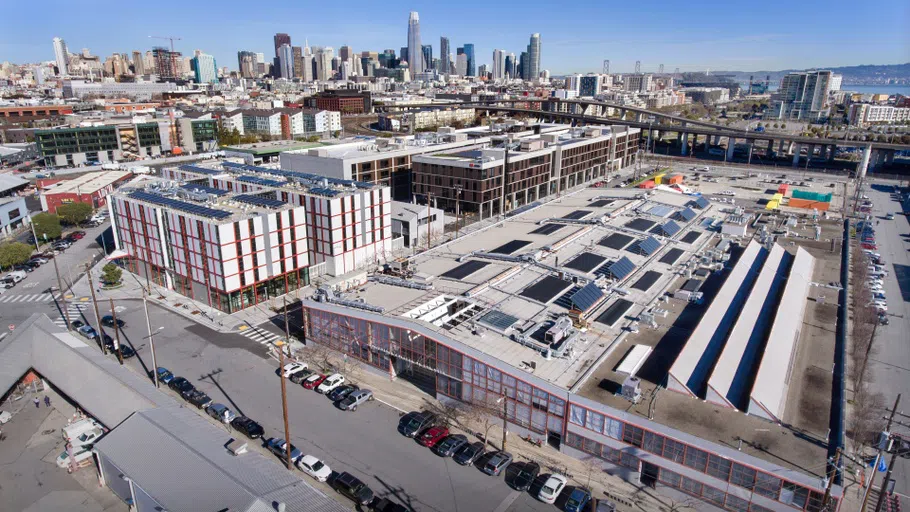
CCA has been a cornerstone of the Bay Area art and design community for more than 100 years.

Graduate school offers time and space to push your creative practice. Here's Courtney Odell (MFA Fine Arts 2020) in her personal studio at CCA’s Dogpatch MFA Studios.

We believe in an energetic and productive studio culture where student work is nurtured with both respect and critical attention.
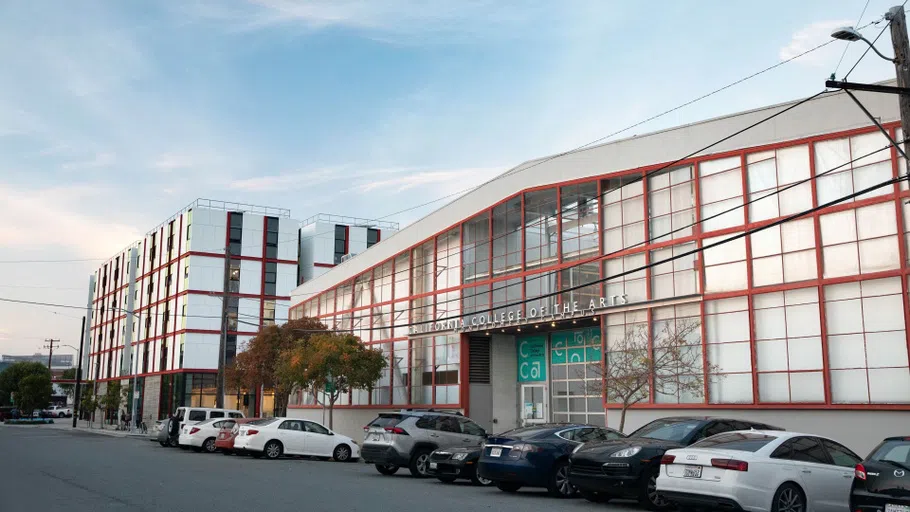
The Main Building used to be a Greyhound bus maintenance facility. Keeping true to our sustainability values, we repurposed all 51,000 square feet into our campus’s primary grounds.
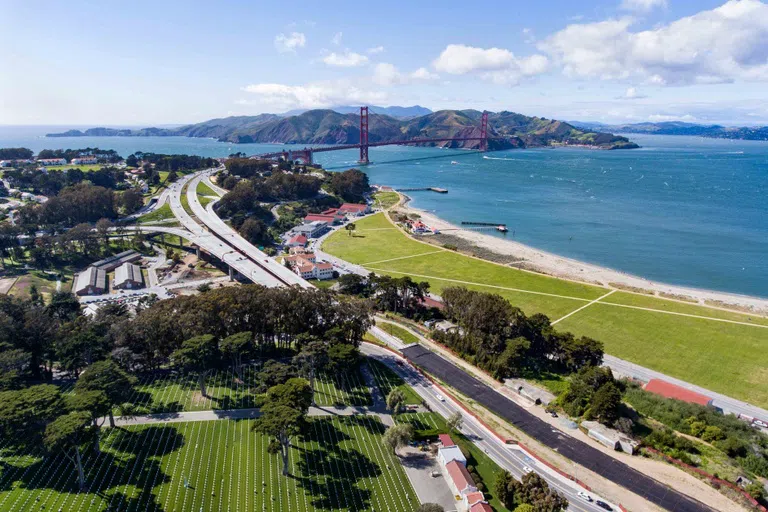
Location matters, especially in grad school. The West is the best place for creative people to connect to ideas and industries, peers and professionals.
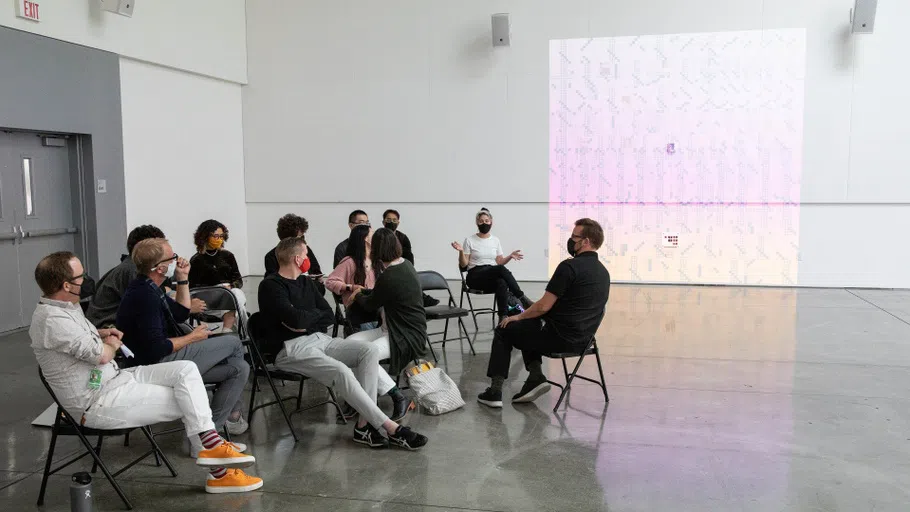
The Digital Craft Lab led a one-day workshop on algorithmic creativity and collaborative processes. Final projects were presented on large-format projections in the Nave Presentation Space.
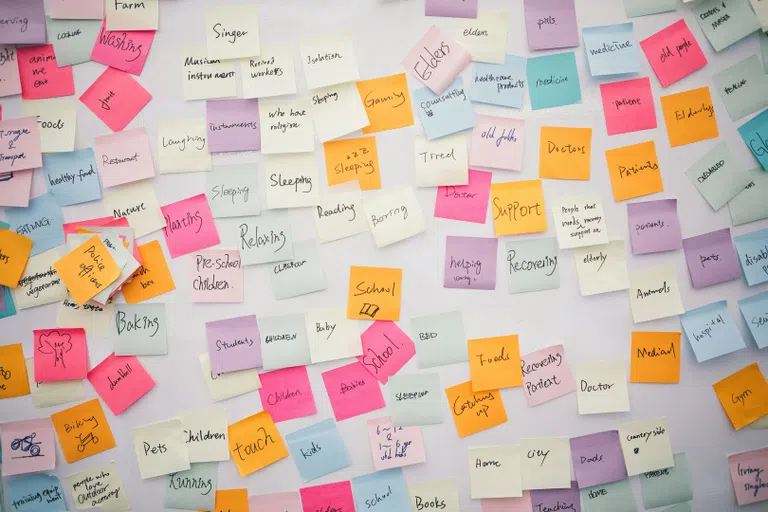
Sticky notes are the best tool for ideation, allowing everyone to pitch in ideas in a concise way.
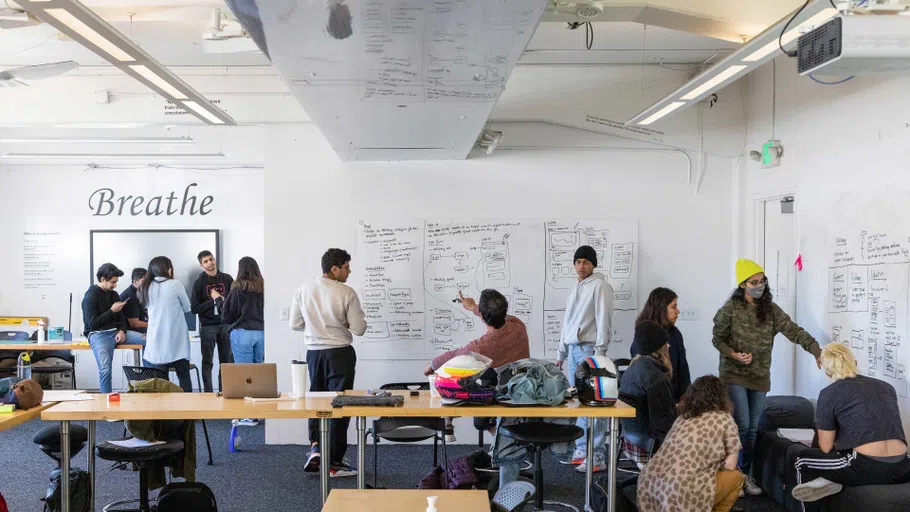
Back to the drawing board! White boards are an essential part of the studio experience where you’ll work closely with your cohort to explore ideas and brainstorm.
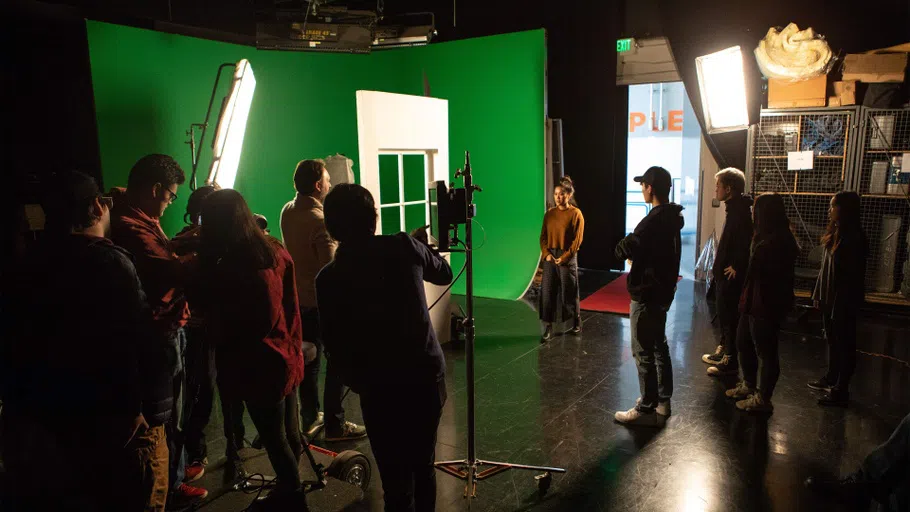
The Production Stage is a 2,100-square-foot black box space that features a permanent audio visual system, a stage floor, green screen cyclorama with a lighting grid and many various production tools.
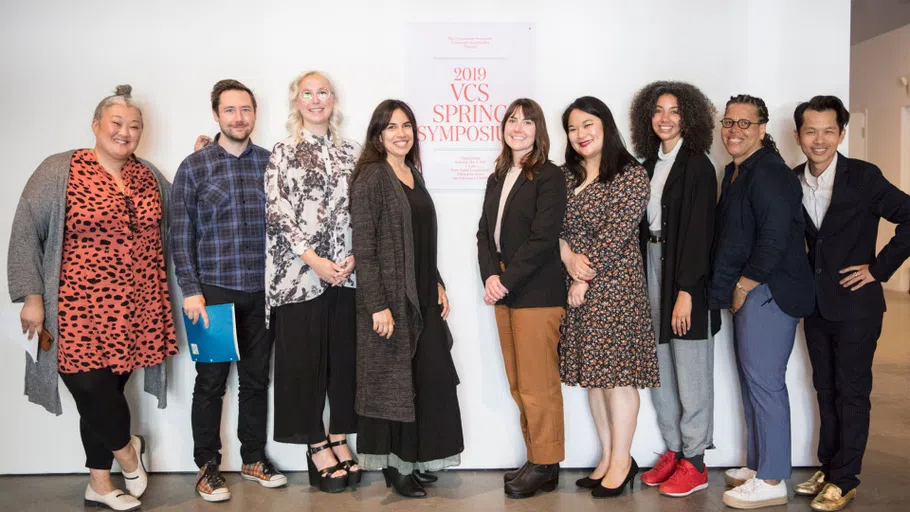
A large focus of the VCS program is connecting with scholars at surrounding Bay Area institutions. Graduating students present their research papers together at the annual VCS Symposium.
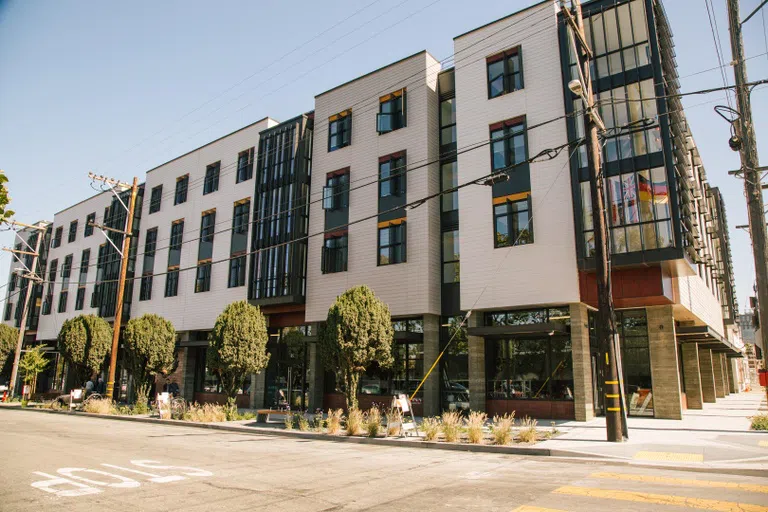
Blattner Hall is a four-minute walk to the main building and also has 24-hour security and front desk support.
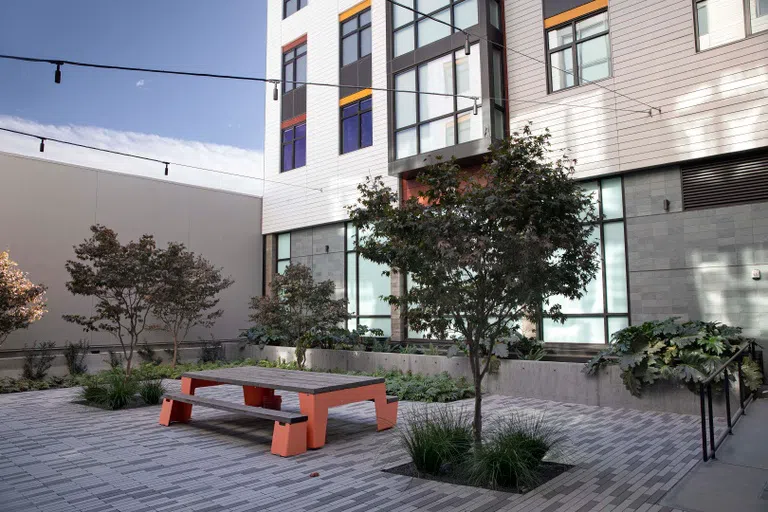
Two outdoor courtyards offer space for gathering with classmates and roommates at Blattner Hall.
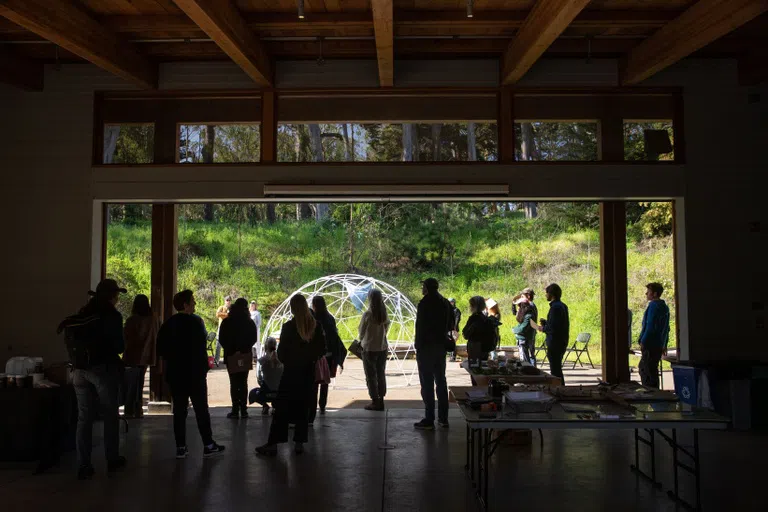
Faculty and students across graduate Architecture and Writing programs collaborated on an all-day symposium and workshop called Ecopoiesis, which addressed climate change through cyanotype printmaking and poetry. This event was produced in partnership with the Golden Gate National Parks Conservancy and Presidio Trust.
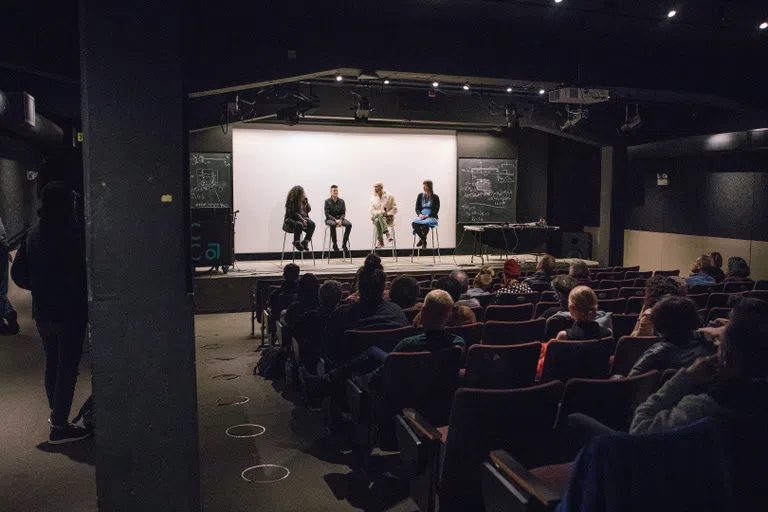
Consider Timken Hall another one of your classrooms. Forums, workshops, and lectures are a huge part of the program.
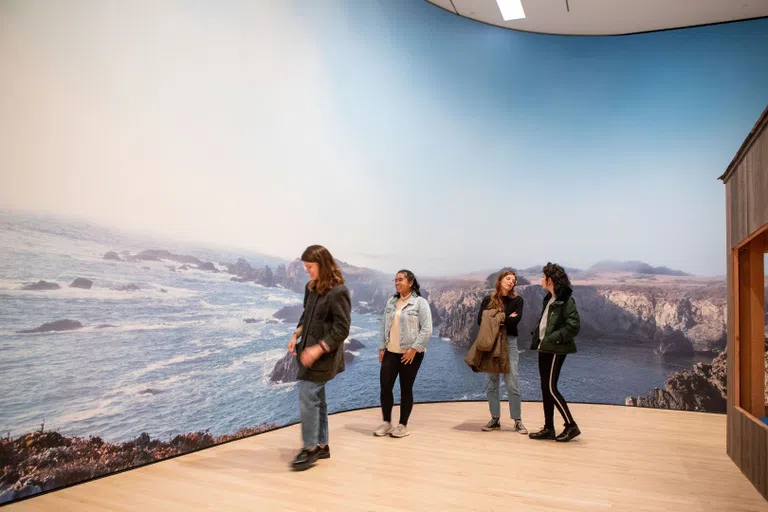
Trips to local museums like the San Francisco Museum of Modern Art connect CURP students with the Bay Area art scene.
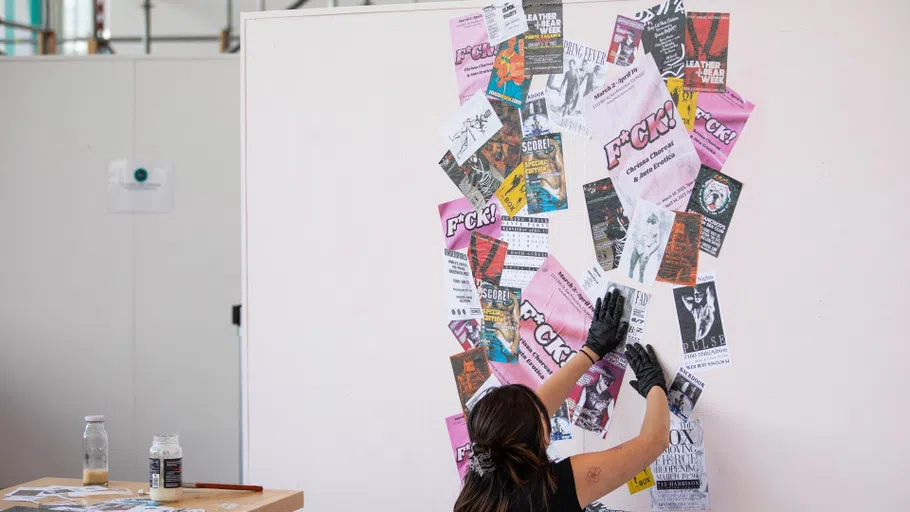
PLAySPACE co-director and current graduate student Samantha Hiura works on an exhibition *playfully* titled ‘F*CK!’ about radical queer expression

The CCA community gathers together for new openings at the CCA Campus Gallery, such as alum Christine Wong Yap’s belonging-centered exhibition, ‘Recognitions / 认 • 知.’
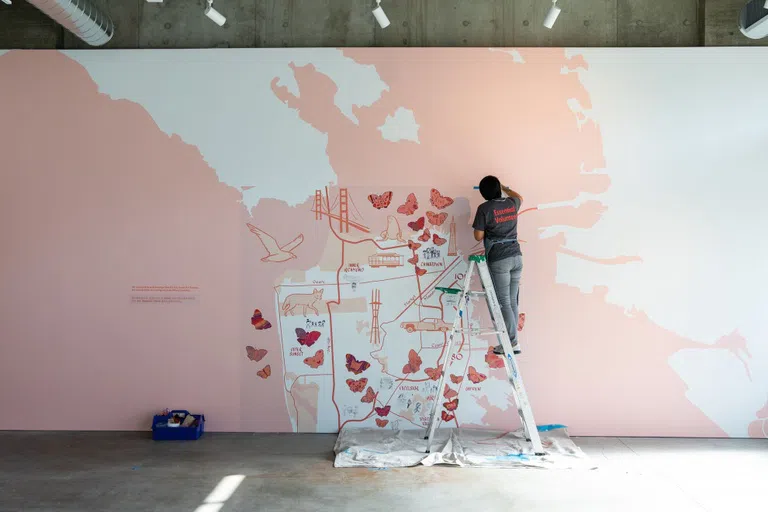
Alum Christine Wong Yap paints a mural for her exhibition ‘Recognitions / 认 • 知.’
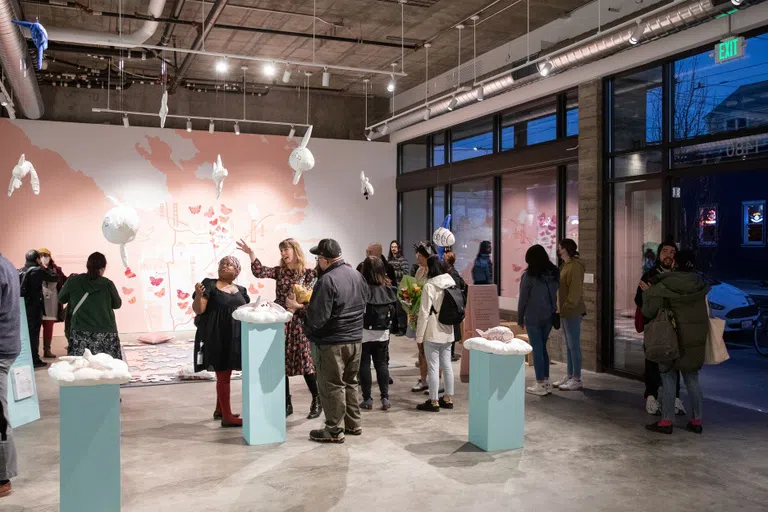
A CCA tradition, Wednesday night exhibition openings are a chance to gather together and see new work.

Exhibitions happen regularly on campus, highlighting work from our community like the 'YES, WE'RE ILLUS,' survey show.
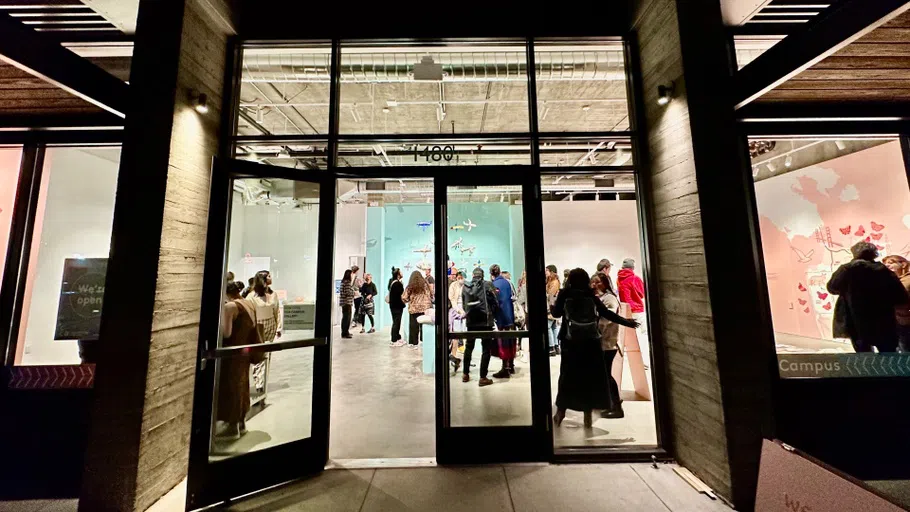
The CCA Campus Gallery is *the* place to see work from the CCA community and visiting artists.
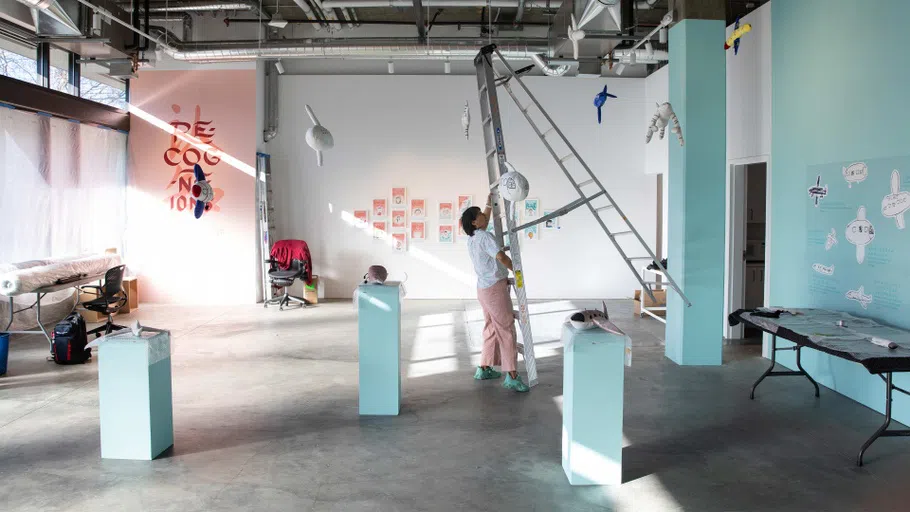
Christine Wong Yap (BFA Printmaking 1998, MFA Printmaking 2007) installs Recognitions / 认 • 知:, a multimedia exhibition exploring belonging.
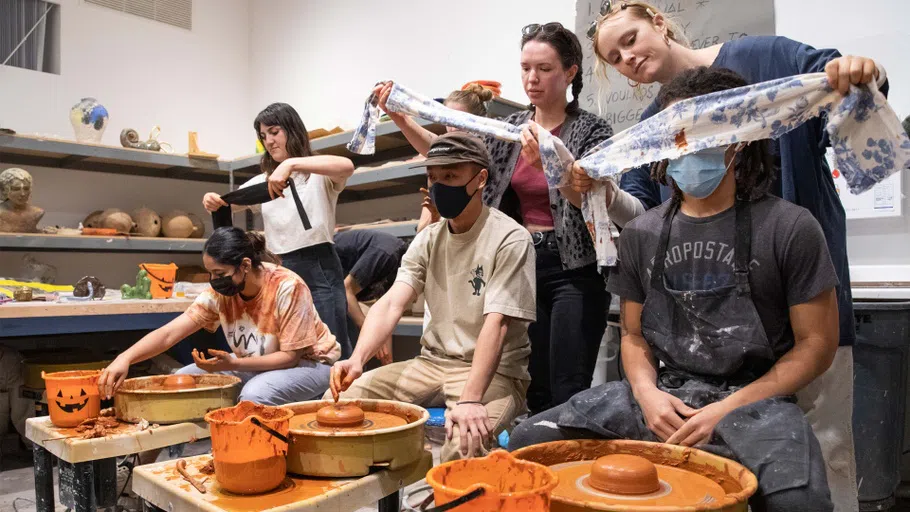
The annual Blindfolded Throwing Contest is a beloved tradition in the Ceramics studio that brings people together to celebrate craft and community.
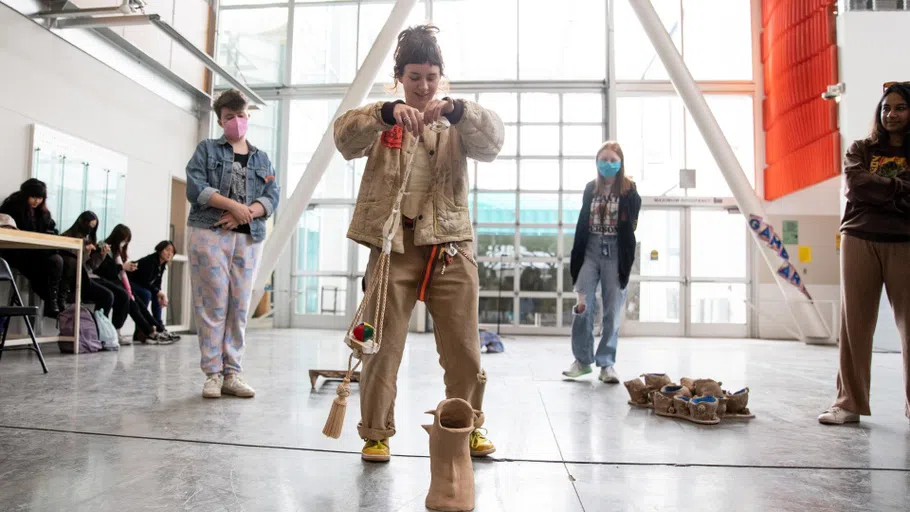
In this crossover class assignment, Ceramics and Game Arts students worked together to create new game concepts.

Program Chair Curtis Arima gives a casting demonstration in the Jewelry and Metal Arts shop.

While our expanded campus facilities are under construction, Printmedia and Photography courses take place in the historic RayKo Photo Center in the South of Market neighborhood.
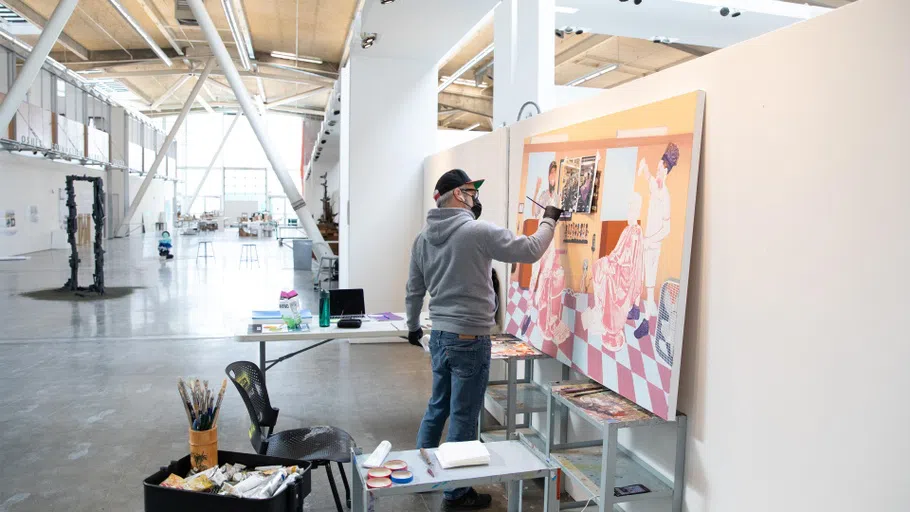
Grey Dey (BFA Painting & Drawing 2023) sets up a pop-up studio in The Nave to work on a large painting.

Double Ground’s top level features open courtyards and green space. Courtesy of Studio Gang and Kilograph.
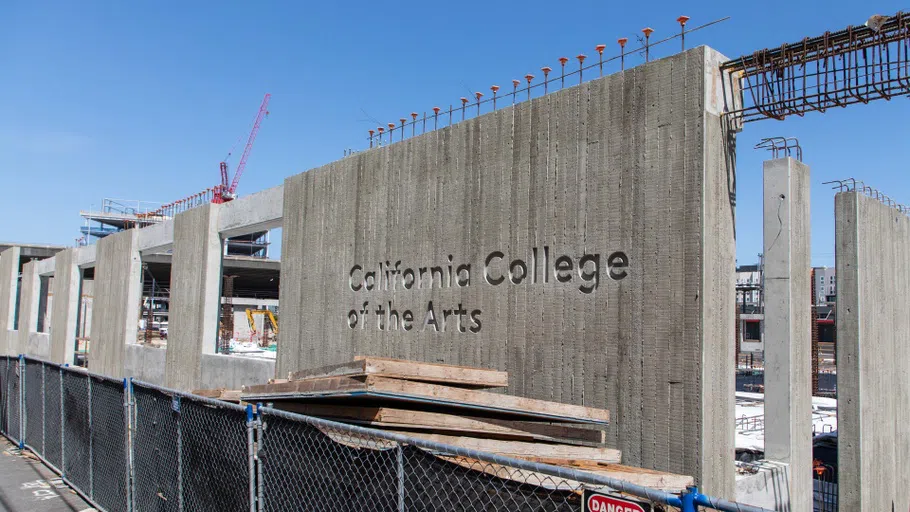
Street view of the construction site.

Ceramics is a naturally lit area with lots of space to think and make.

Faculty Maryam Yousif presents a new assignment to her class.
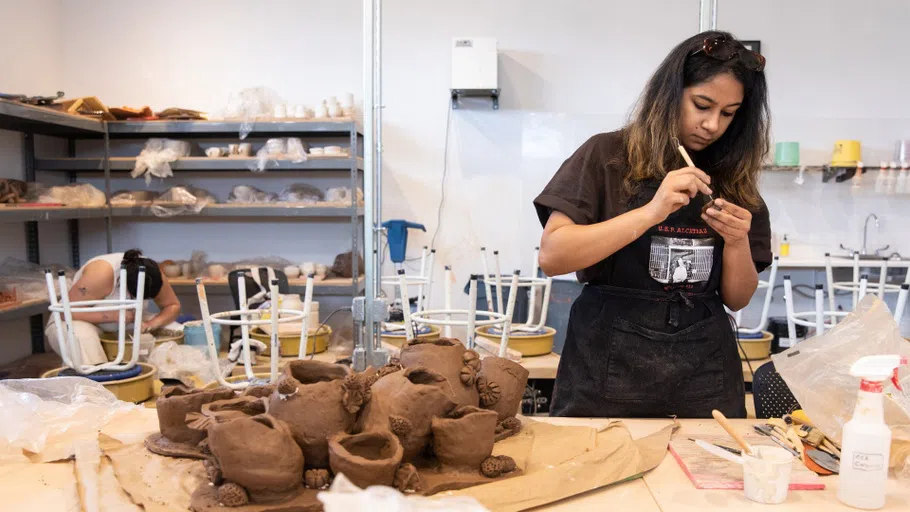
Whether you prefer hand building or wheel throwing, there’s plenty of room for both in this studio.

The glaze room also has a spray booth available for use.
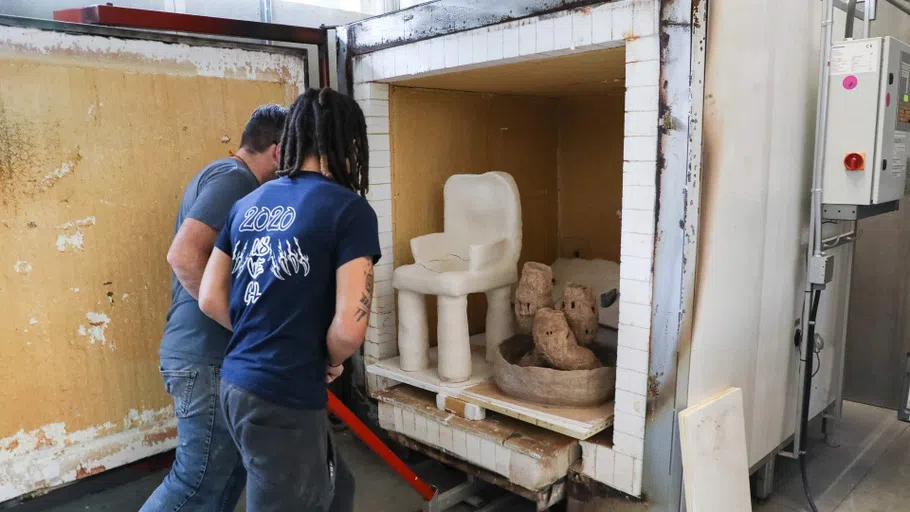
The kiln room includes electric and gas kilns of varying sizes.
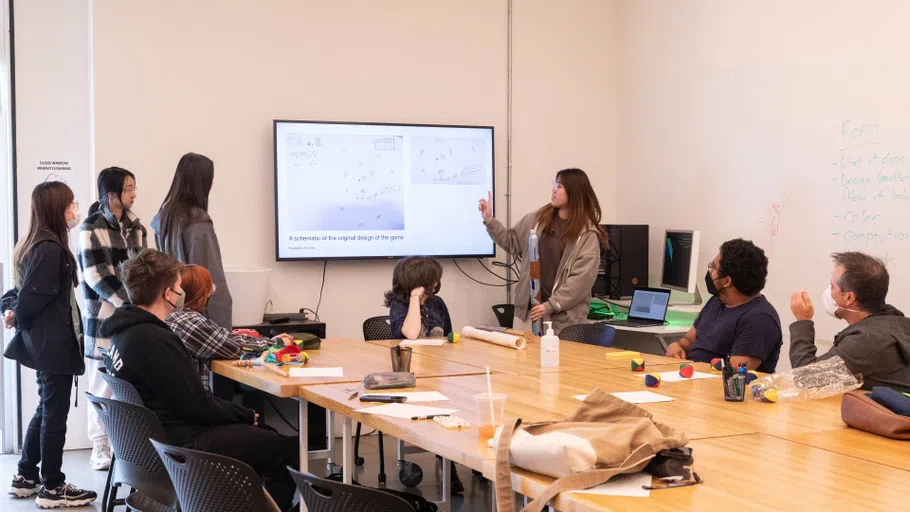
Students in the Game Arts I course present game concepts to their classmates and instructor.

Workstations are available as you learn different techniques to shape a variety of metals.
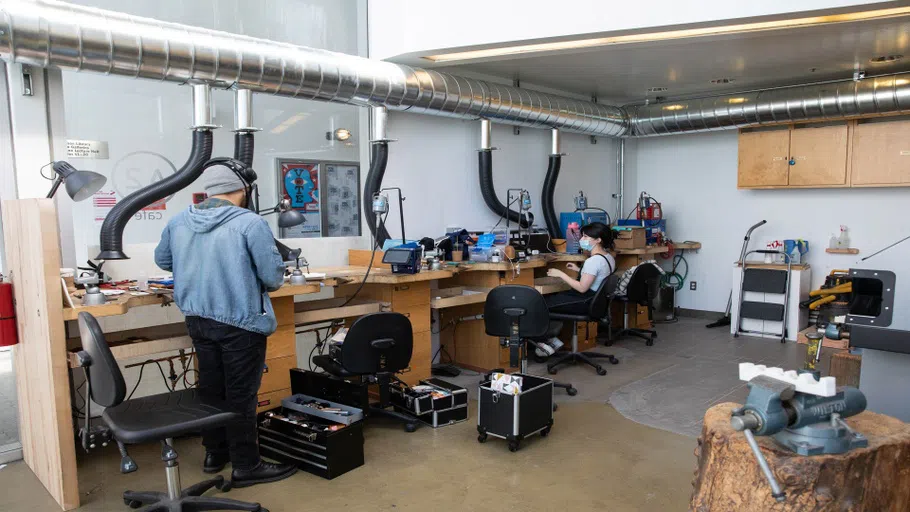
The main jewelry classroom is equipped with 17 professional jeweler's benches with flex-shafts, a communal soldering area, two drill presses, a bench shear, a rolling mill, and various hand tools designed for metal-smithing.
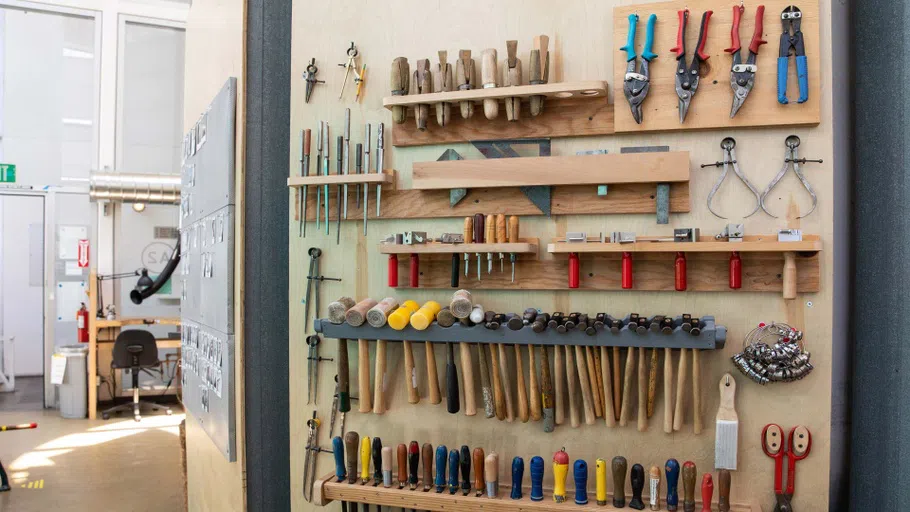
The tools of the trade are all at your fingertips.
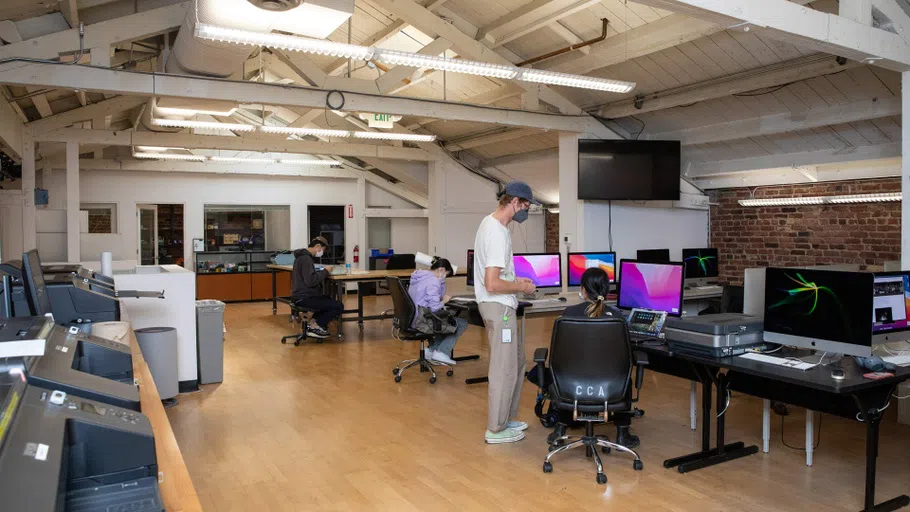
Students use the upper level of the RayKo Photo Center to work on computers, printers, and scanners.
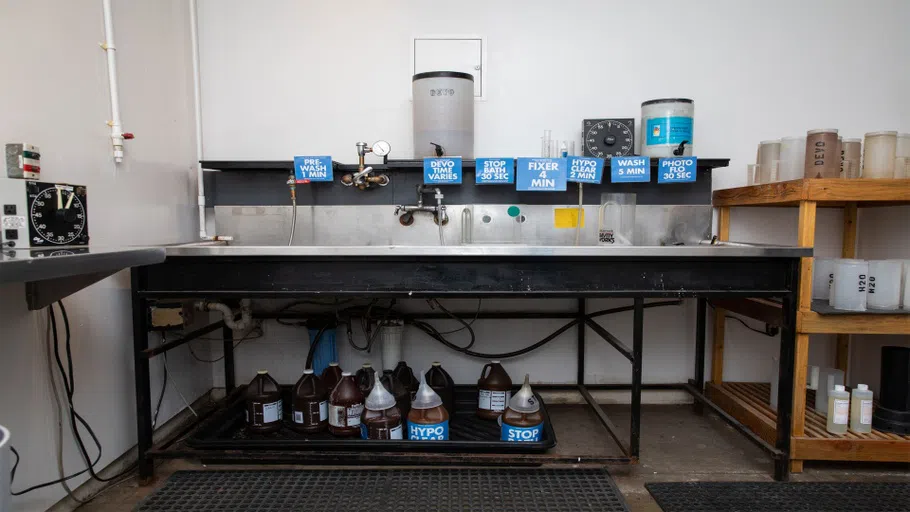
This area of RayKo Photo Center is for developing film.
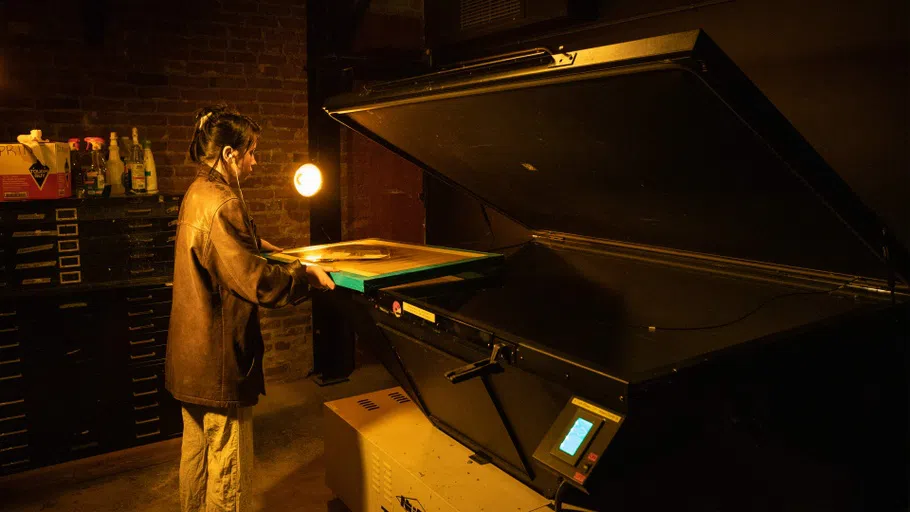
A student uses the Digital Darkroom at RayKo Photo Center.

This room at RayKo Photo Center is used for intaglio, lithography, relief, and monotype printmaking.
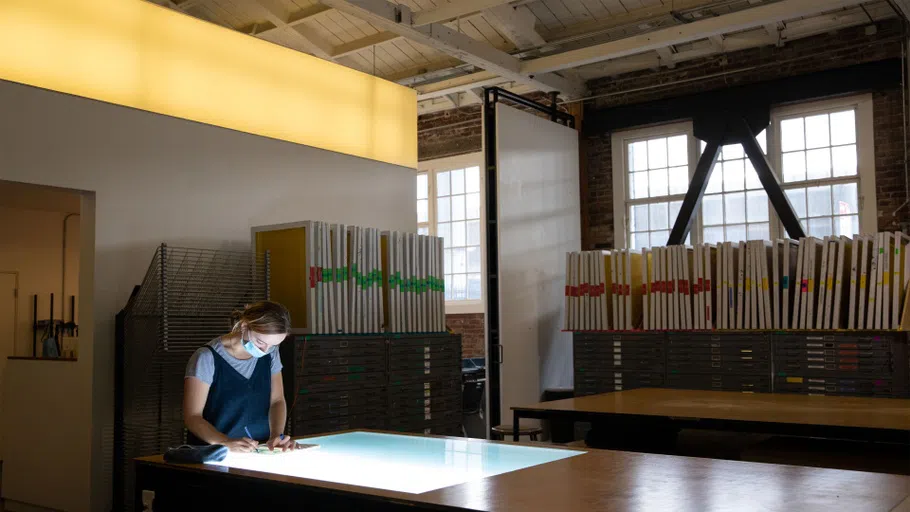
A student sketches on a lightbox.

This room at RayKo Photo Center is for screen printing, making paper from scratch, and mixed media printmaking.
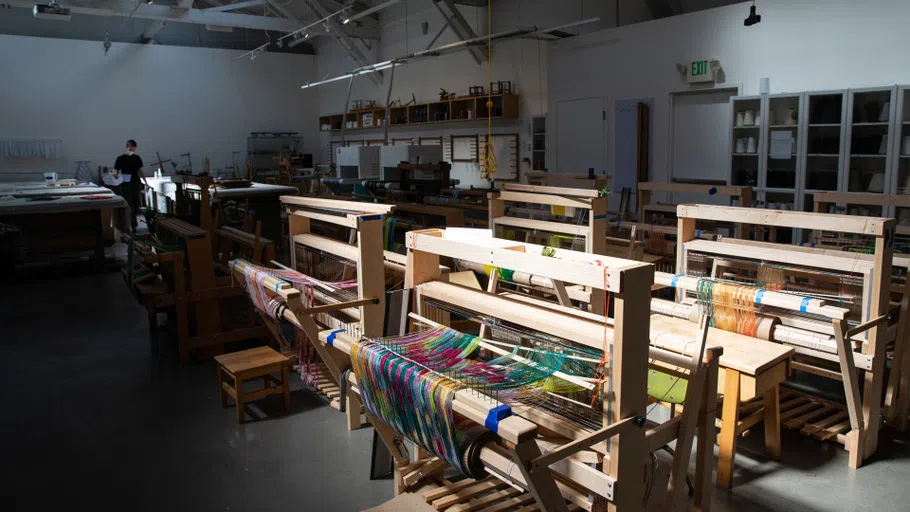
Students enrolled in weaving classes are assigned dedicated looms for the semester.
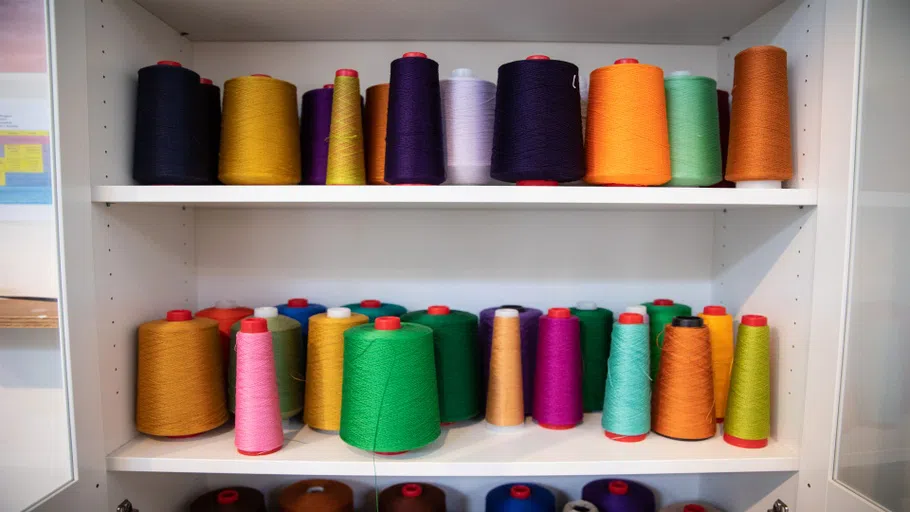
Rows and rows of colorful yarn and thread line the studio’s walls.
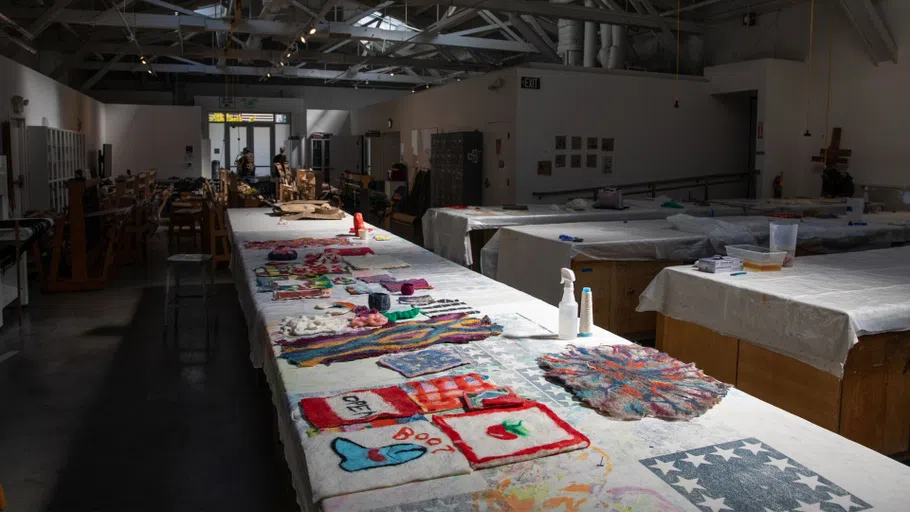
The studio also has multiple large printing tables.
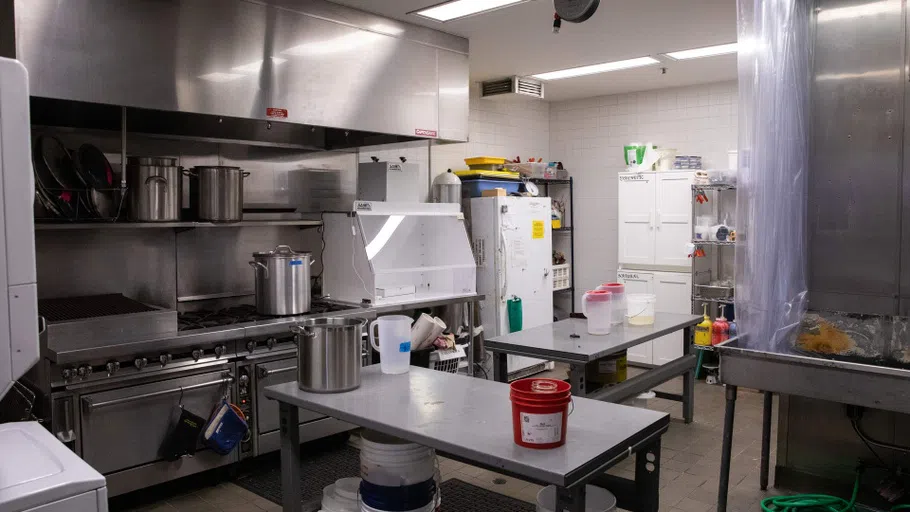
nt, buckelts, and other supplies. Caption / The Dye Lab includes a large-scale light exposure table for silk screens as well as gas stoves for use with both chemical and natural dyes, a closed-ventilation system for dye mixing, and a washout sink.
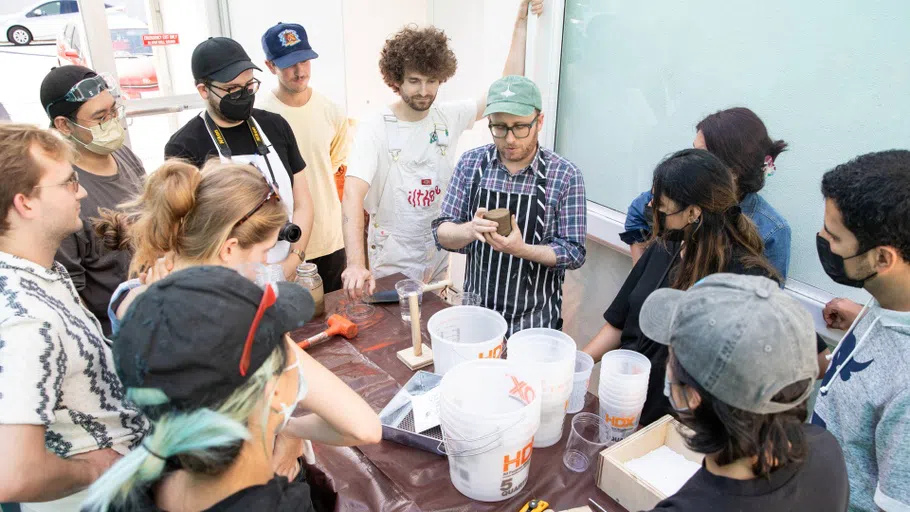
Adam Marcus’s ‘Materialities of Care’ course gets their hands *dirty* in the Makers Yard.

Students eagerly fill up the Nave Alcove for a design sprint sponsored by Google.
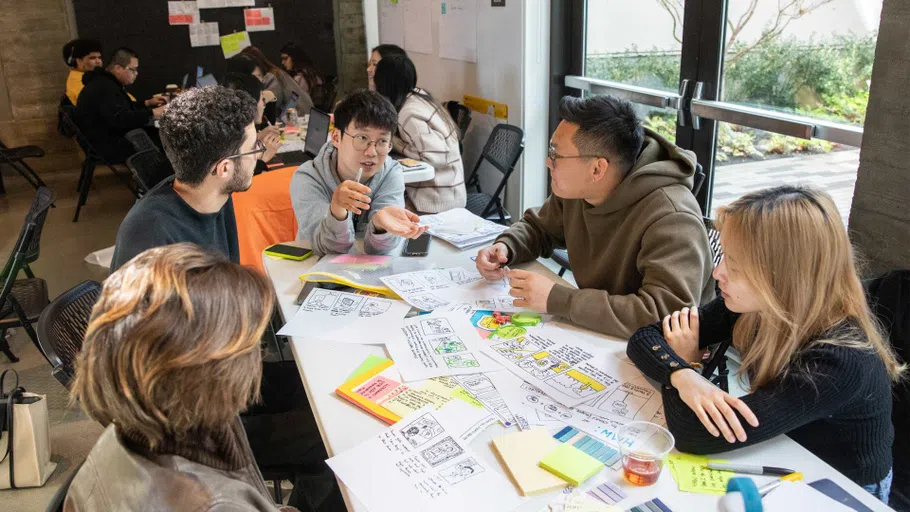
In this design sprint sponsored by Google, students got insights into universal design and accessibility.
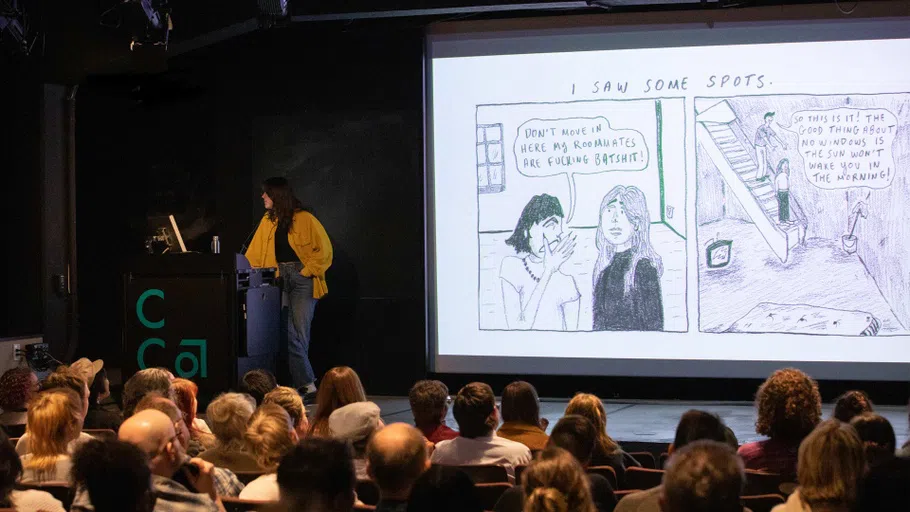
The summer residency concludes with lively graduate thesis readings in Timken Hall.
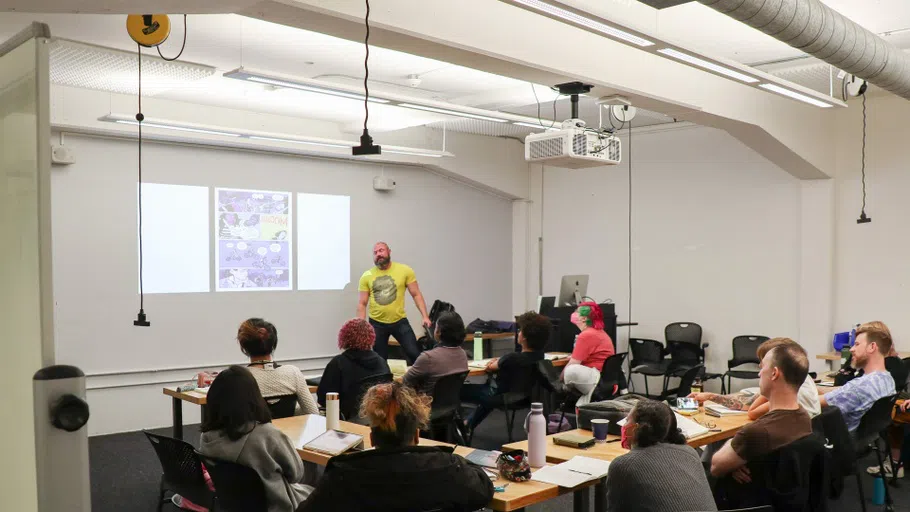
Program chair Justin Hall gives a lecture on comics history.
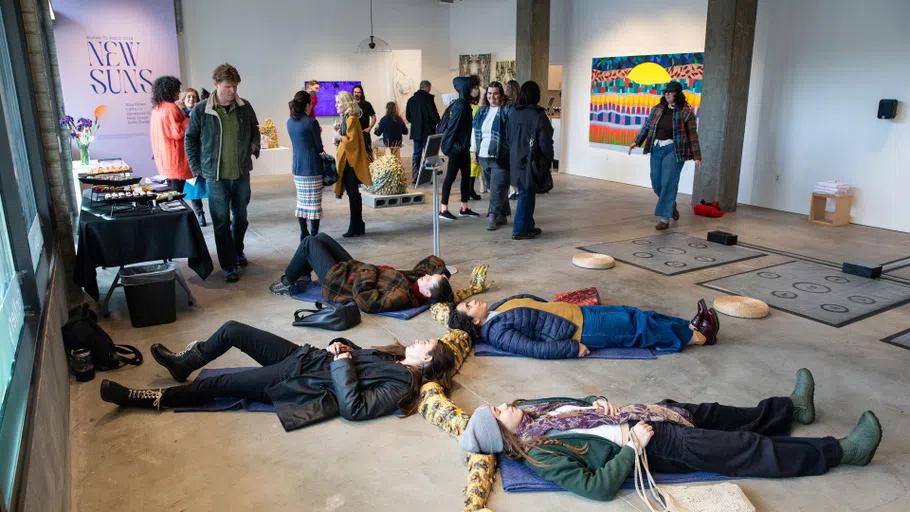
Visitors engage with a ceramic object by Cathy Lu in an exhibition organized by The National Museum of Women in the Arts.
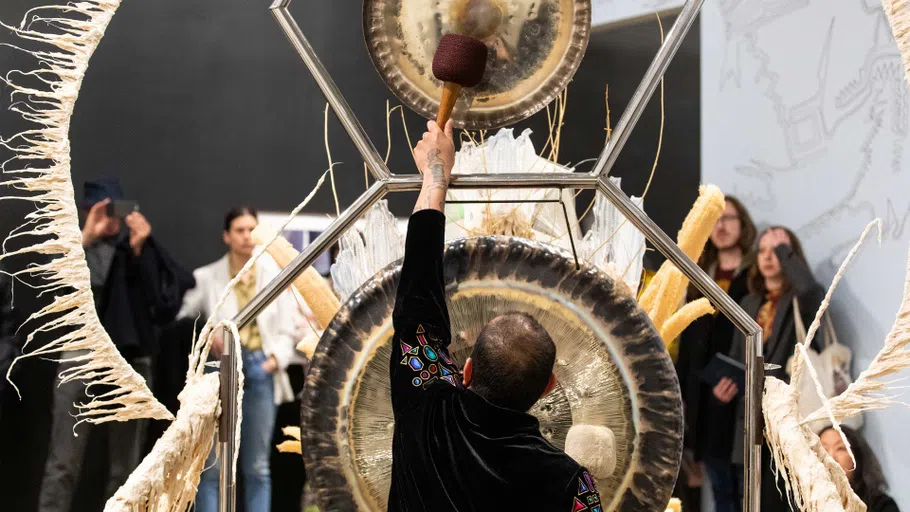
Aside from visual art, the Wattis also hosts unique and compelling performances and programs almost every month.
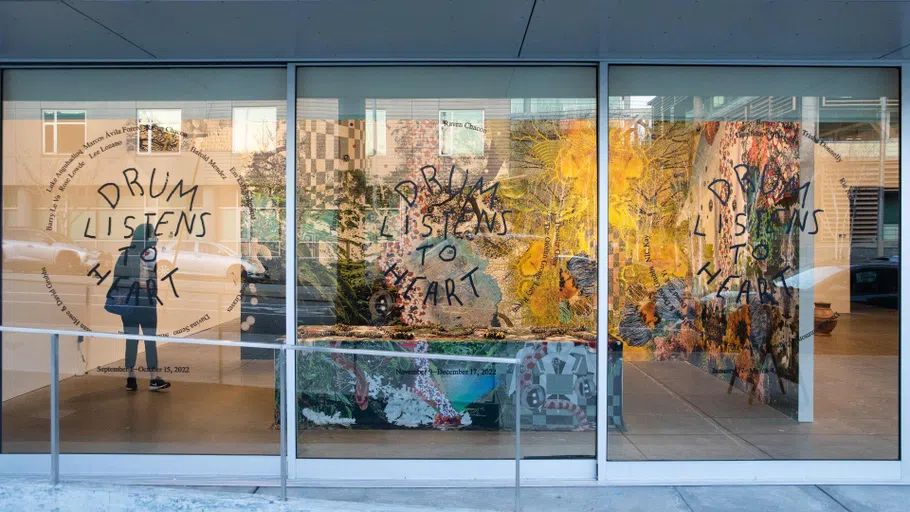
peek through the windows of the critically acclaimed ‘Drum Listens to Heart’ exhibition that debuted fall 2023
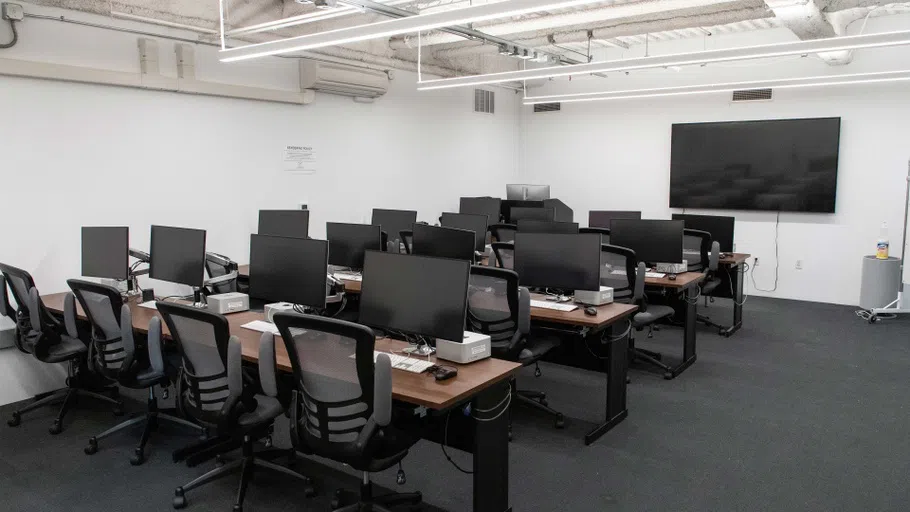
In this Animation lab for sound design classes, you’ll work on 24” iMacs with Pro Tools 11 software.
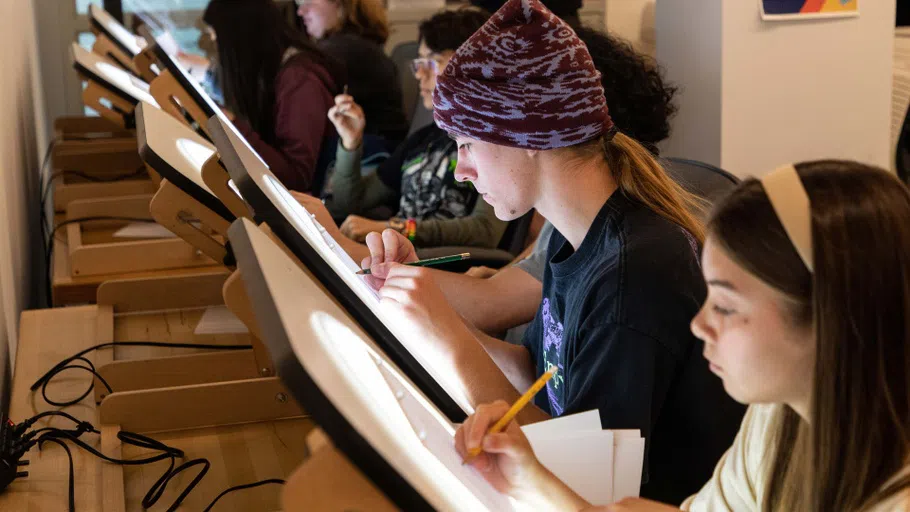
The Intro Animation Lab has iMacs, Cintiqs, Light Tables and various other tools.

Our soundbooths are professional studios for sound recording and design.
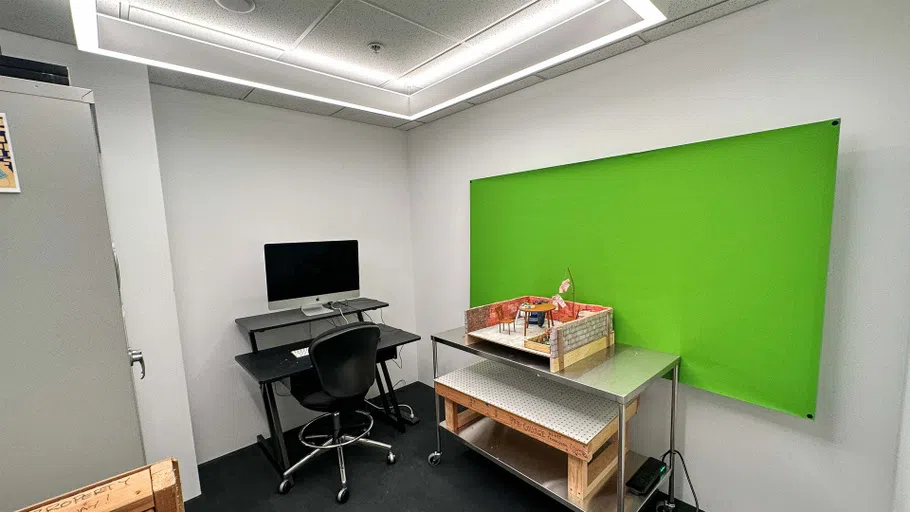
We have four suites that can you can reserve to work on stop motion or experimental animation projects.

Fashion Design students leave CCA with a clear understanding of tools, techniques and methodologies for designing wearable artifacts for the human form.
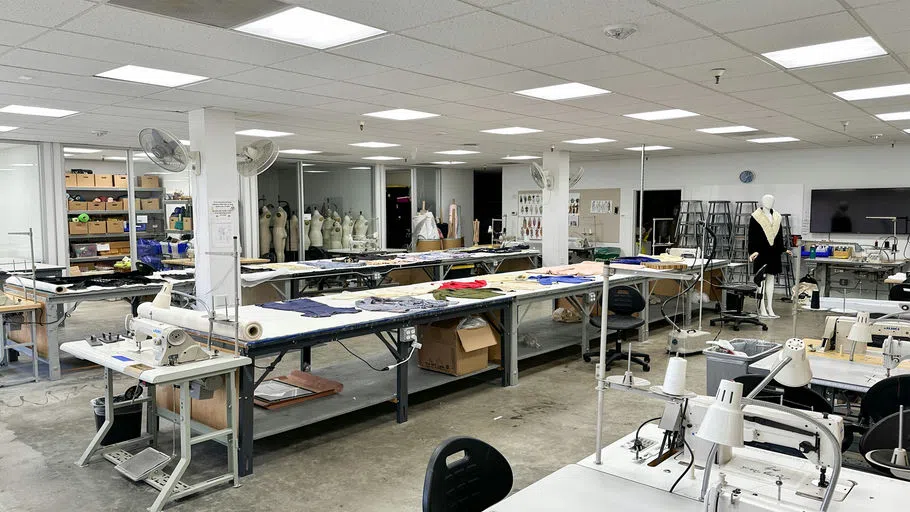
Cloths, fabric, fiber, paper, threads are your best friends in the fashion labs.
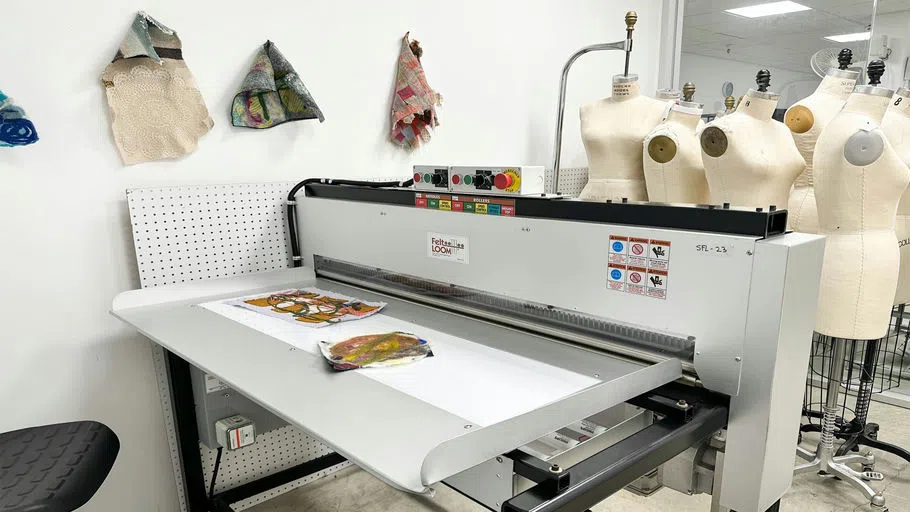
One of our many exciting pieces of equipment in the lab is the FeltLOOM, used to felt denim + other fabric scraps to create unique fabric with less impact on the world.
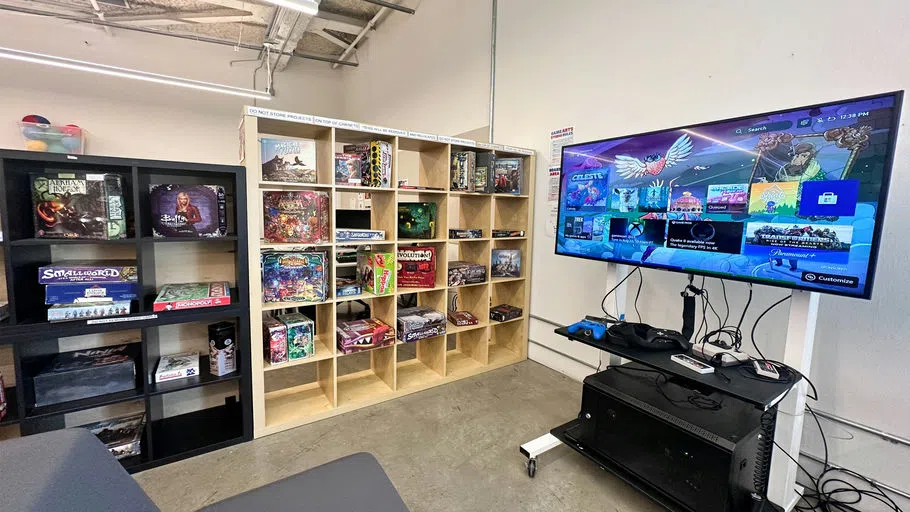
The homeroom has an Xbox One with Game Pass access, Nintendo Classic with 30 games, as well as a large selection of classic board games
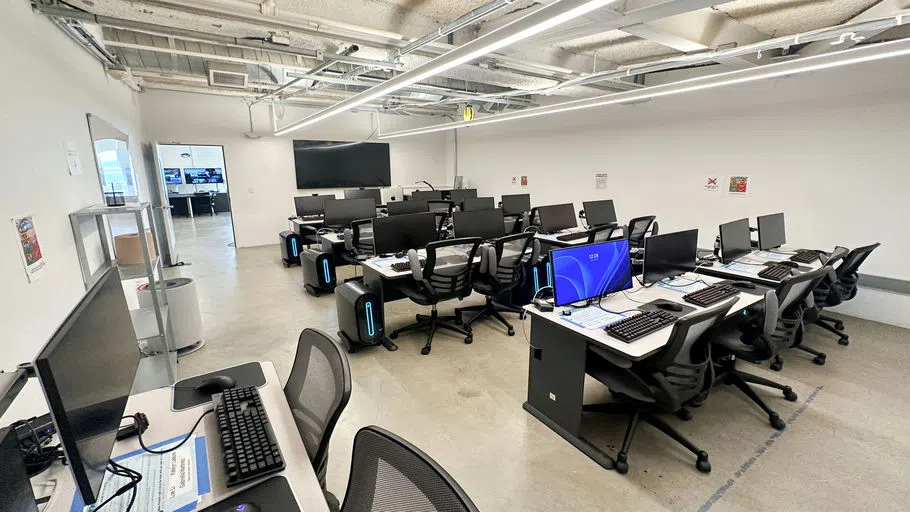
Some of your Game Arts courses will take place in this PC lab.
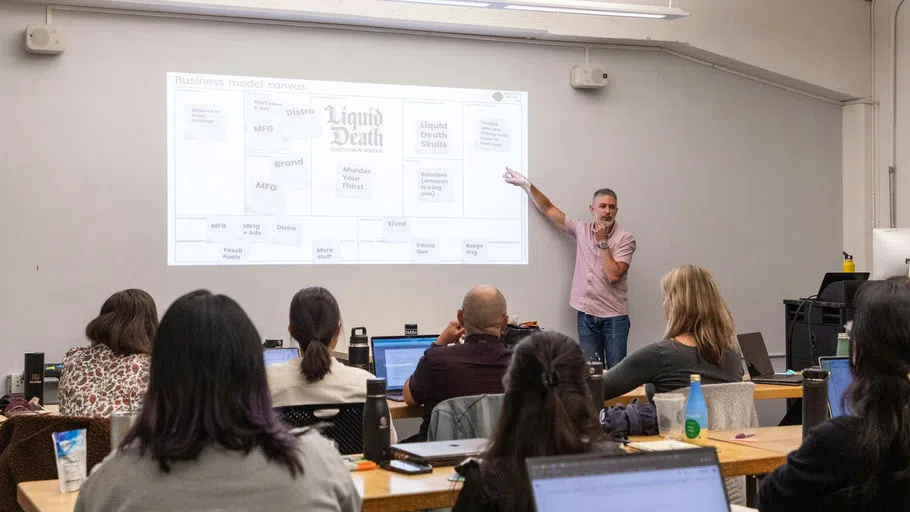
Justin Lokitz leads a presentation in his Business Models & Marketing Strategies course.

Through focused student and faculty collaboration, we take advantage of the space between disciplines and reimagine problem-solving in ways that are unconventional and unexpected.
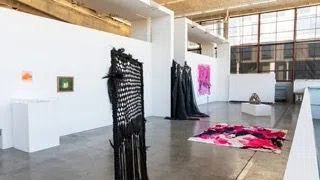
PLAySPACE, The Paulette Long and Shepard Pollack Art Community Experiment, is a graduate student-run exhibition program located in the back of the Nave, in N21
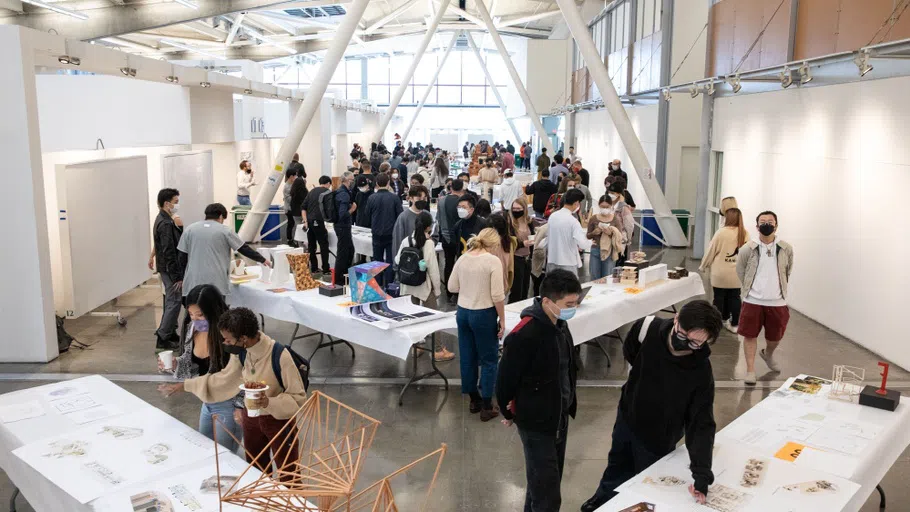
The Nave is a space for sharing work, sparking conversation, and hanging out, as seen here in the Architecture division’s show-and-tell mixer.

It’s also a space for site-specific installations, such as the FLOW STATE PAVILLION by MArch students Anbin Liu, Elif Aydinli, Saina Gorgani, Shreya Shankar, and Weisheng Zhong.

Clubs and student organizations use the flexible space to celebrate community and honor cultural traditions. Here, Manos Abiertas shares their ofrenda altar for Día de los Muertos (Day of the Dead).
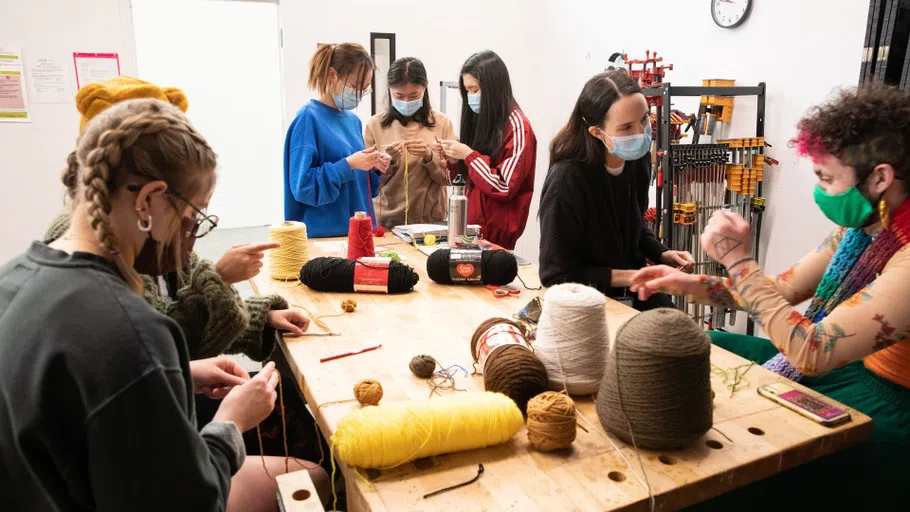
First Year Core Studio courses introduce students to the creative potential of mediums and techniques, such as this textile class teaching weaving, surface design, and three-dimensional structures.
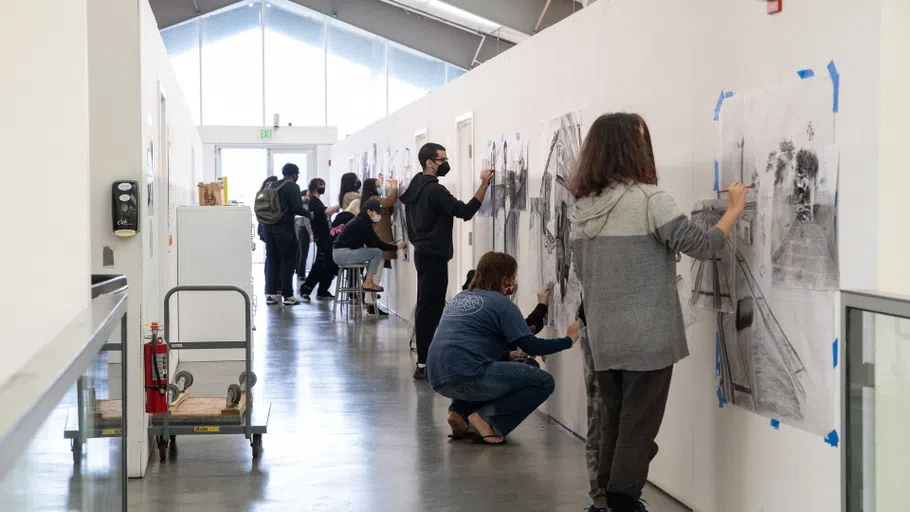
The Drawing Studio focuses on this fundamental skill and practice, which is integral in art, design, and architecture practices and relevant to all CCA programs.
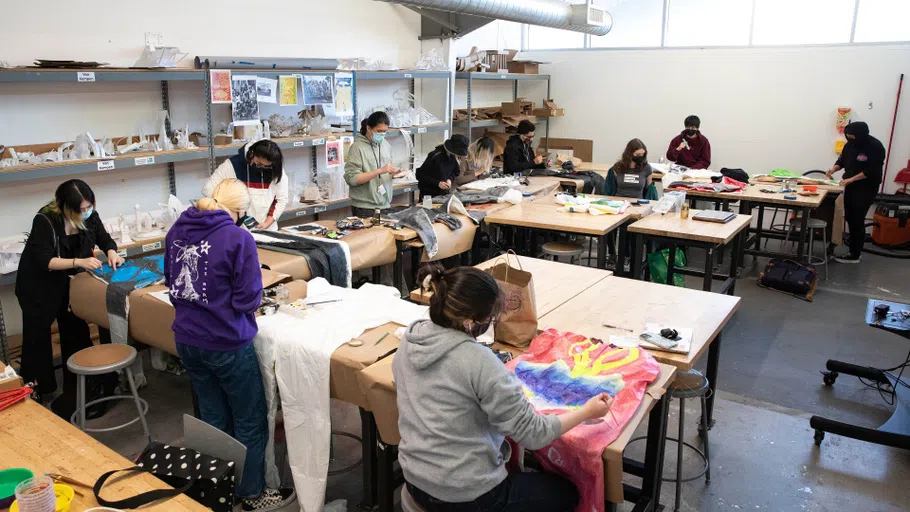
First-year students transform white jumpsuits into wearables that make a statement through paint, color, text, and collage.
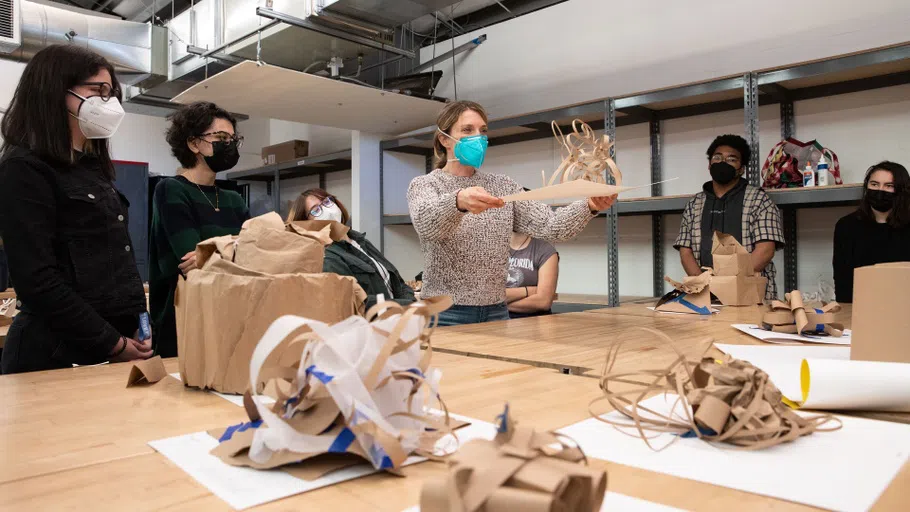
From your first day at CCA, you'll be immersed in a supportive culture of constructive feedback and critique.
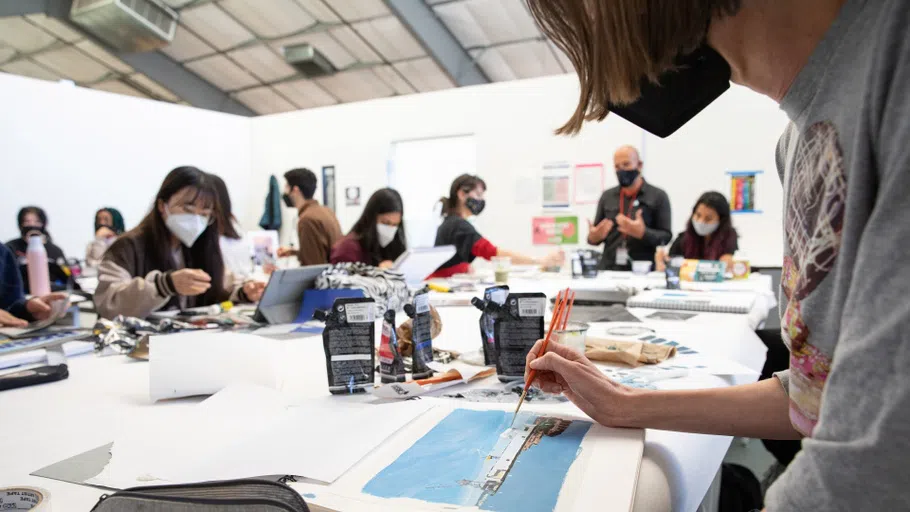
The 2D courses investigate how artists communicate and tell a visual story, covering vocabulary, formal properties, digital literacy, and presentation.

The First Year Core Studios include space for presenting work during a critique, sharing ideas, and even spreading out, as seen here.
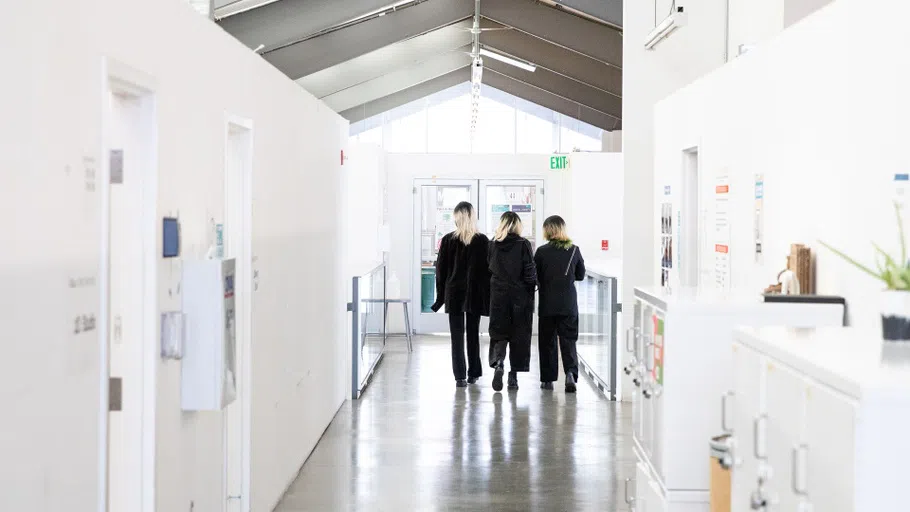
Friendships, collaborative partners, and future networks will blossom from students’ shared experience of starting college at CCA.
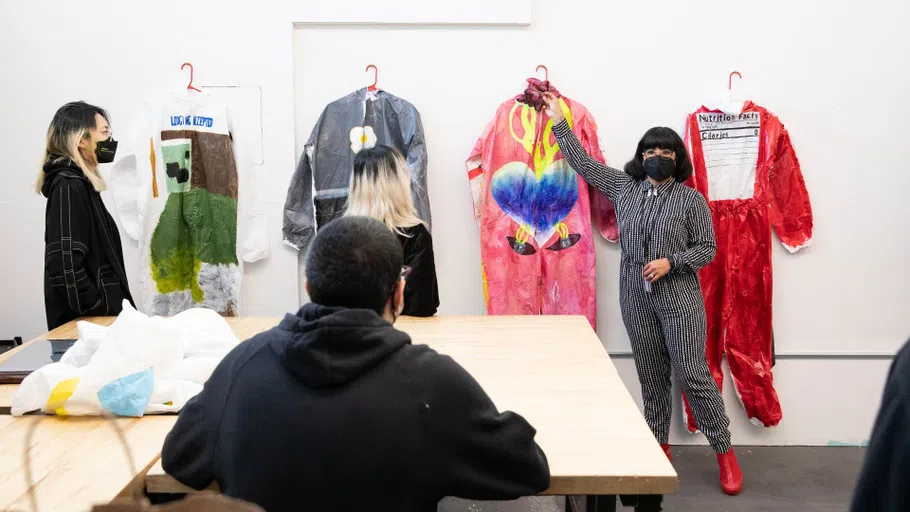
The foundational First Year Experience helps students discover what matters to them artistically and personally. In this case, a jumpsuit’s “blank canvas” leads to colorful, unique expressions.

Students collaborate in the Visual Critical Studies homeroom in the 184 Hooper Building.
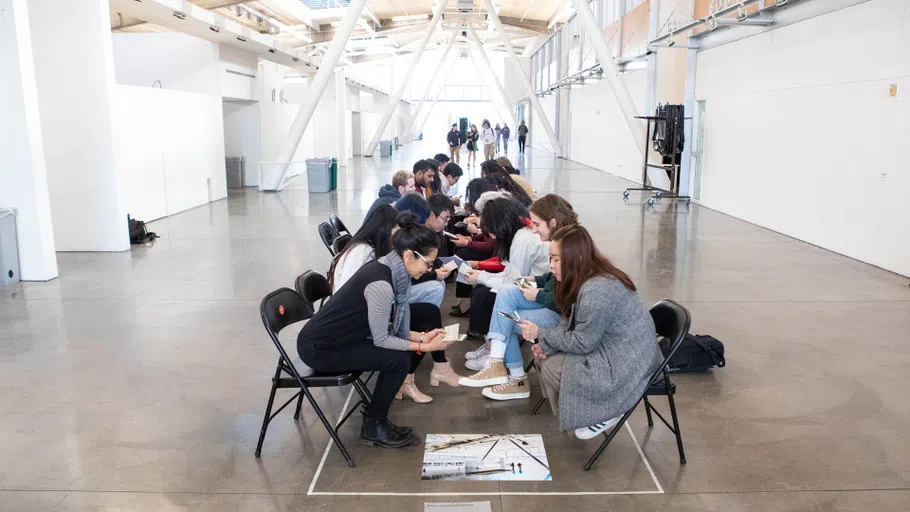
Associate Professor in Critical Ethnic Studies Shalini Agrawal’s Radical Redesign course identified areas or opportunities within design work to radically reorient it toward inclusion.
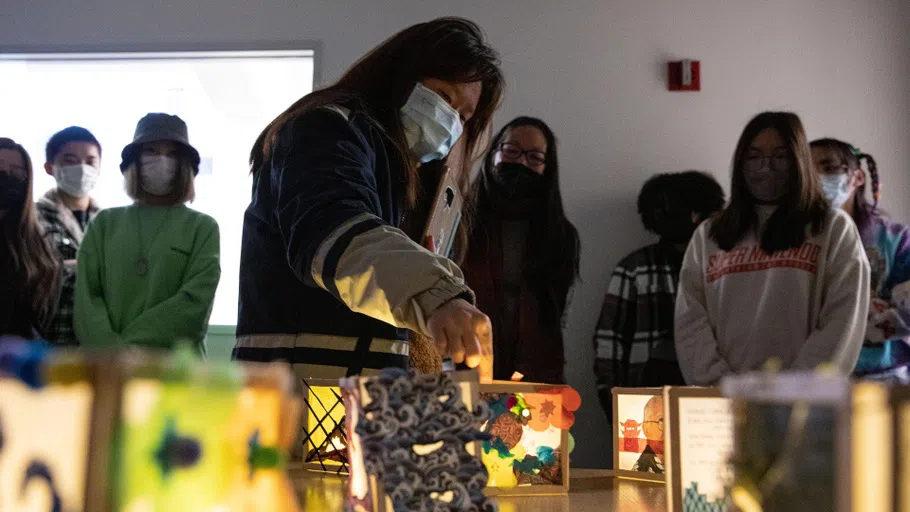
Lanterns of Sorrow is a project from Senior Adjunct Professor Nakashima Degarrod's Critical Studies seminar, honoring those lost in the global refugee crisis.
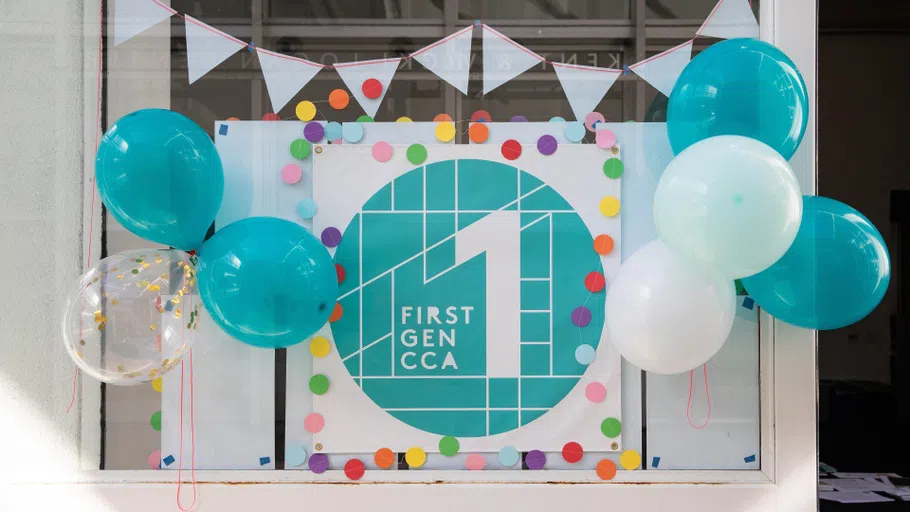
The Office of Student Success celebrates CCA's first-generation college community in a celebration held annually on November 8.
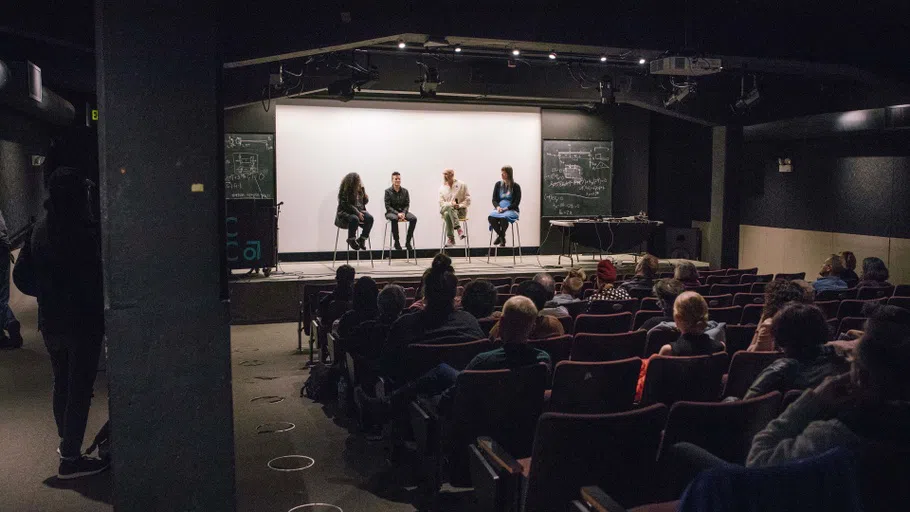
Undergraduate students benefit from the MFA Writing program’s acclaimed reading series, which includes lectures in Timken Lecture Hall, craft talks, and workshops with novelists, poets, and memoirists from all over the world.
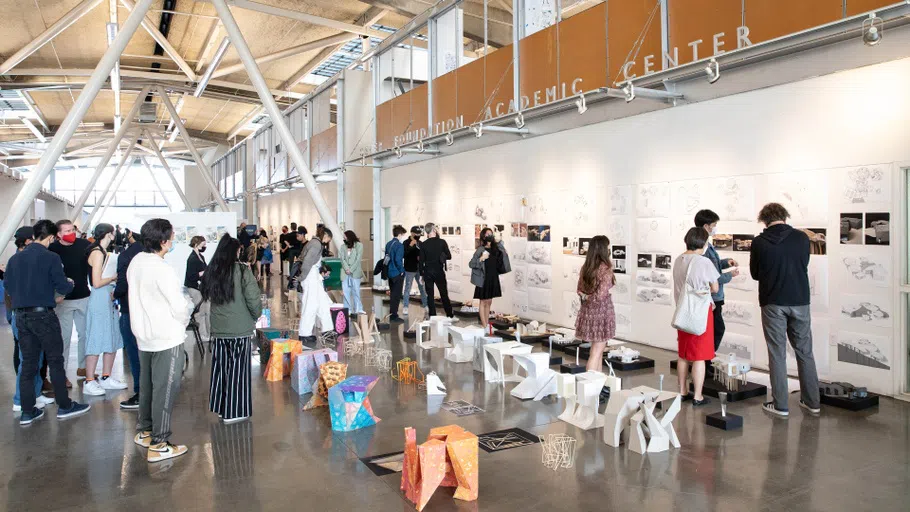
Undergraduate students review work from Architecture Studio 1, a course focused on the formal, spatial and tectonic characteristics of architectural design.

A moment in the Materials and Methods studio taught by Mark Donohue and Margaret Ikeda, which introduces the basics of non-structural material for architecture.

Students and faculty—from interiors and architecture, grad and undergrad, studios and seminars—brought physical models, drawings, and other creative outputs into the Nave for a pop-up mixer.
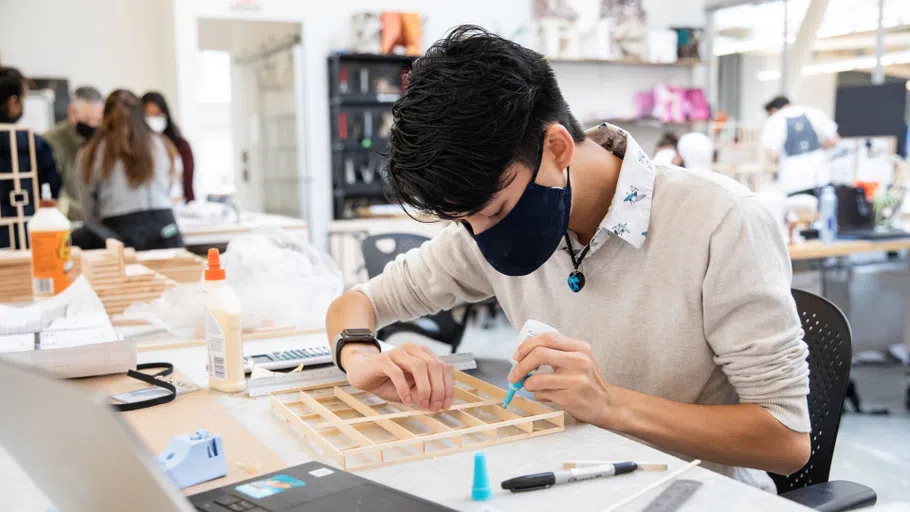
A student glues a balsa wood model in the Materials and Methods studio.
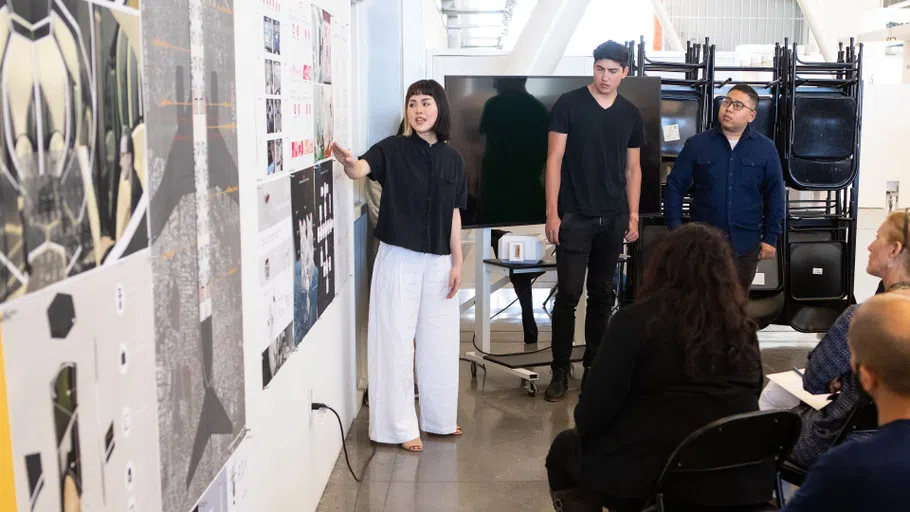
An Interior Design student presents work during finals week.
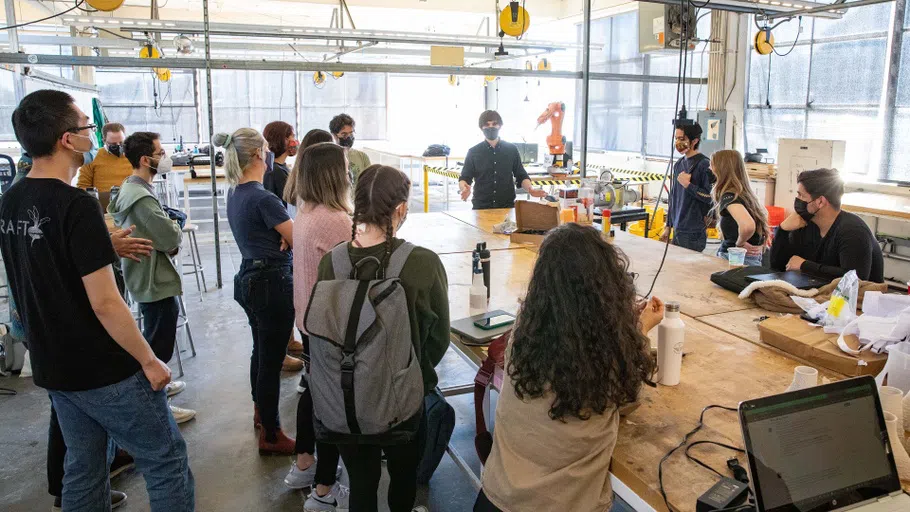
Architecture students learn how to use the clay 3D printers in an Ecological Tectonics workshop in the Digital Craft Lab.
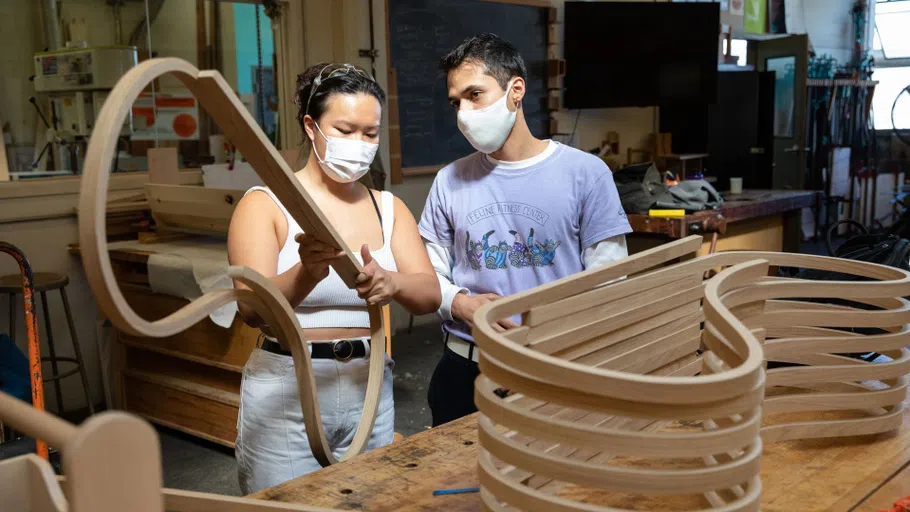
Student Nicole Wong works on a piece in the Bench Room, the Furniture program’s home room for woodworking, furniture design, and fabrication.

The Fashion Design program holds a Senior Review in the Nave to a panel of industry professionals.
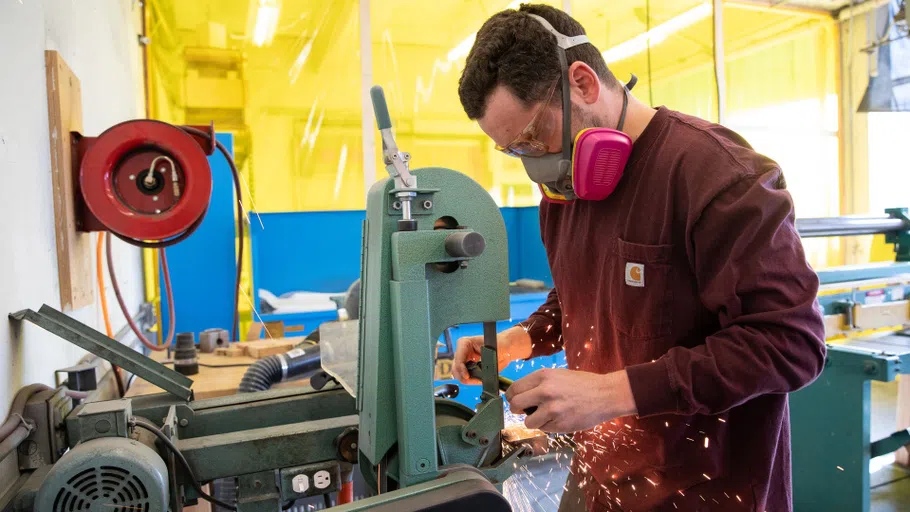
Sparks fly as Jack Morningstar (BFA Furniture 2020) uses a vertical bandsaw in the Metal Shop.
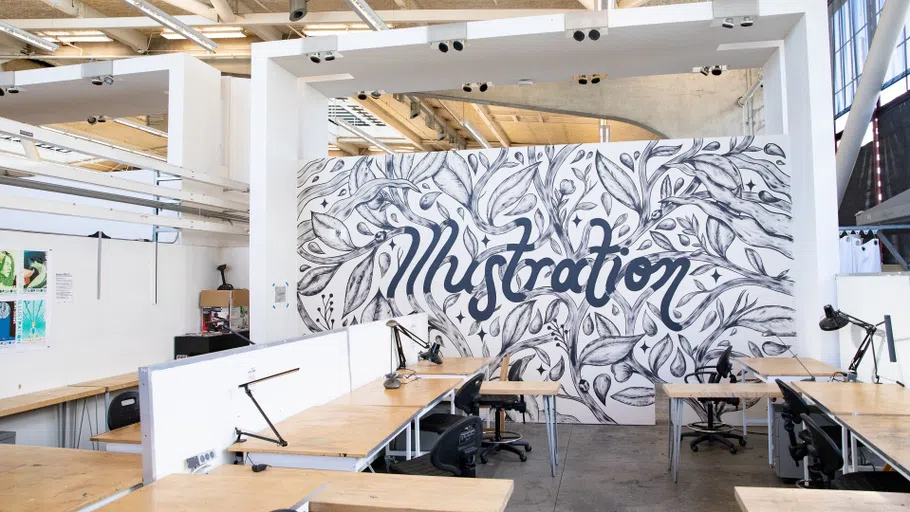
Adjacent to classrooms, the Illustration homeroom features individual workspaces, models, books, and a mural by Sendy Santamaria (BFA Illustration 2018).
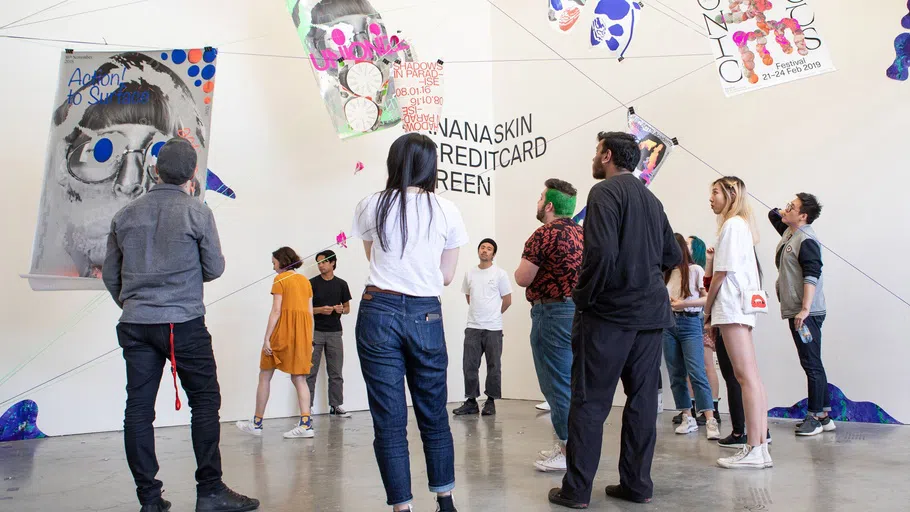
Graphic Design students review an installation of colorful posters and vinyl graphics from Assistant Professor Christopher Hamamoto’s undergraduate advanced studio in exhibition design.

Fashion Design and Industrial Design students tape shoe molds in Adjunct Professor Caroline de Baere’s investigative studio focused on footwear design.

Students learn fundamental techniques and explore stylistic approaches in Associate Professor Karla Wozniak's introductory Painting and Drawing course.
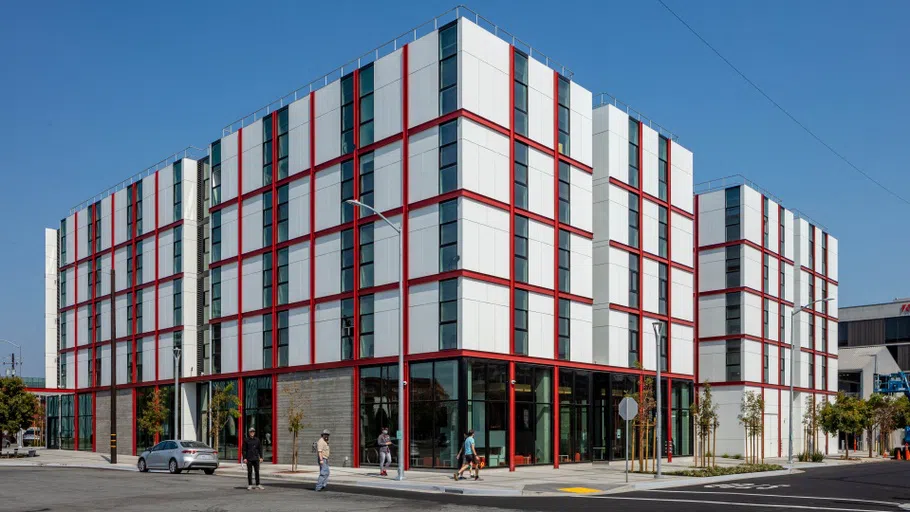
Students live on campus for their first two years at CCA. Founders Hall offers welcoming rooms, downstairs dining, and convenience (it’s across the street from the Montgomery Building!). Photo by Richard Barnes.
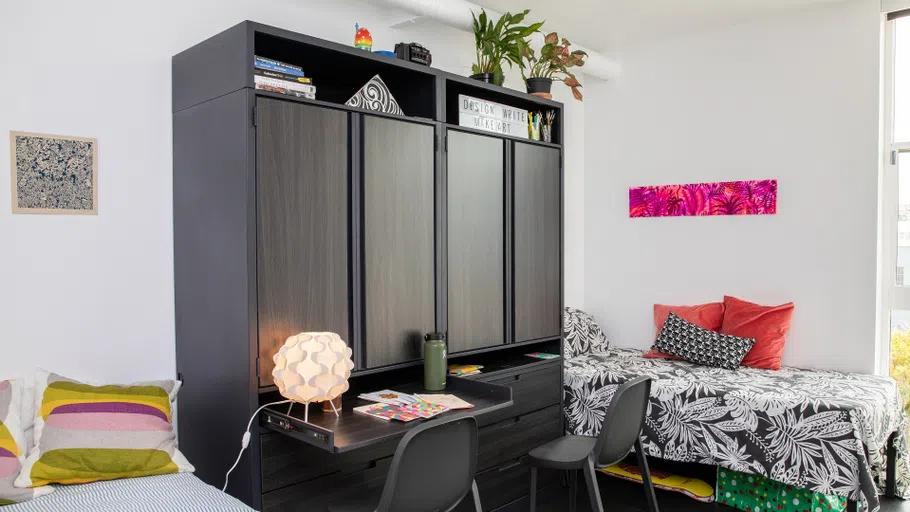
First- and second-year students are paired up in a double studio room, which includes a bathroom and a shared living and sleeping area.
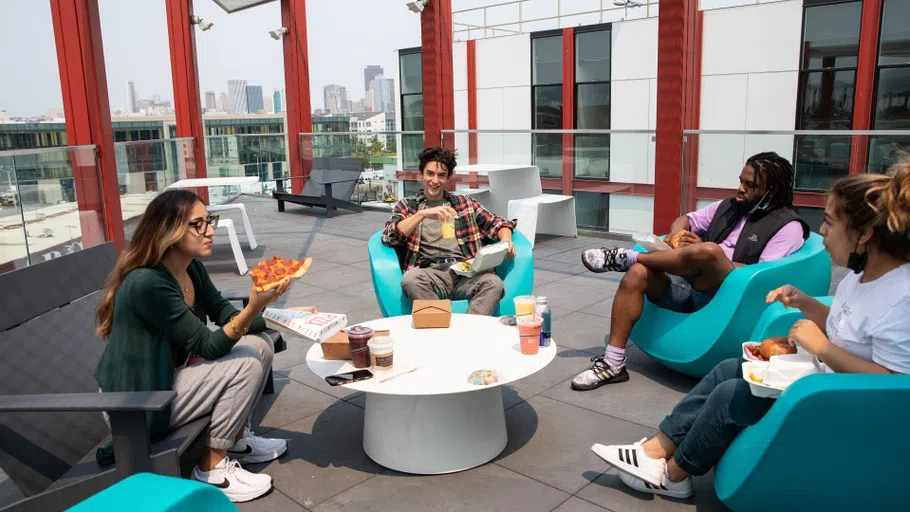
The fifth-floor terrace is a place to hang out and take in San Francisco’s iconic skyline.
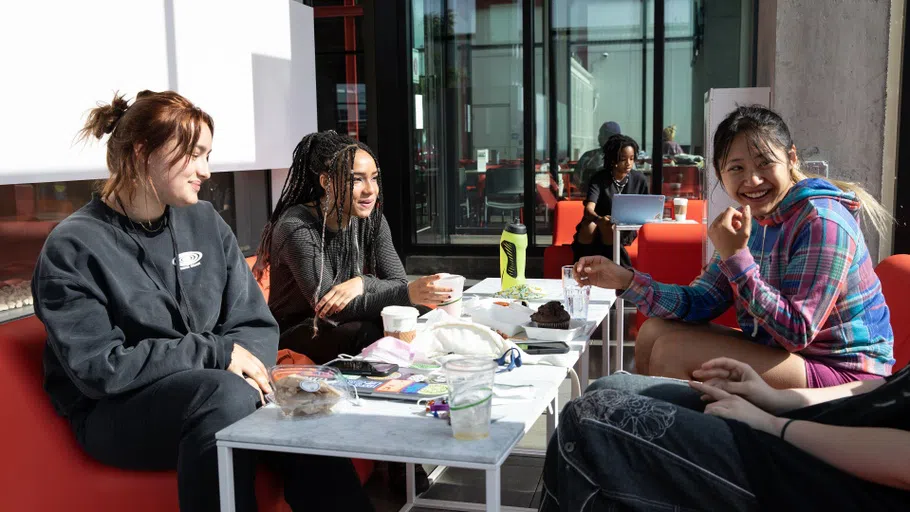
Makers Cafe is the perfect spot to grab a bite to eat with friends or fuel up on coffee.
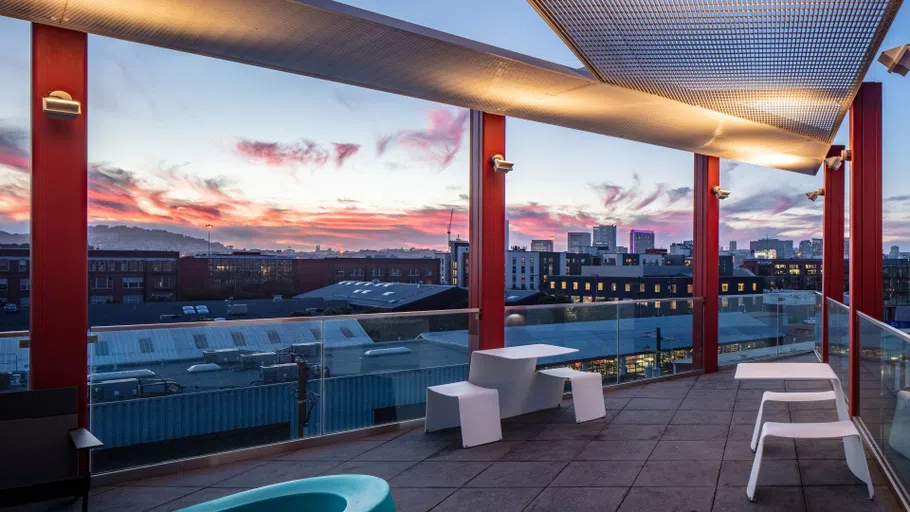
The terrace offers views and vibes, especially at sunset. Photo by Richard Barnes.
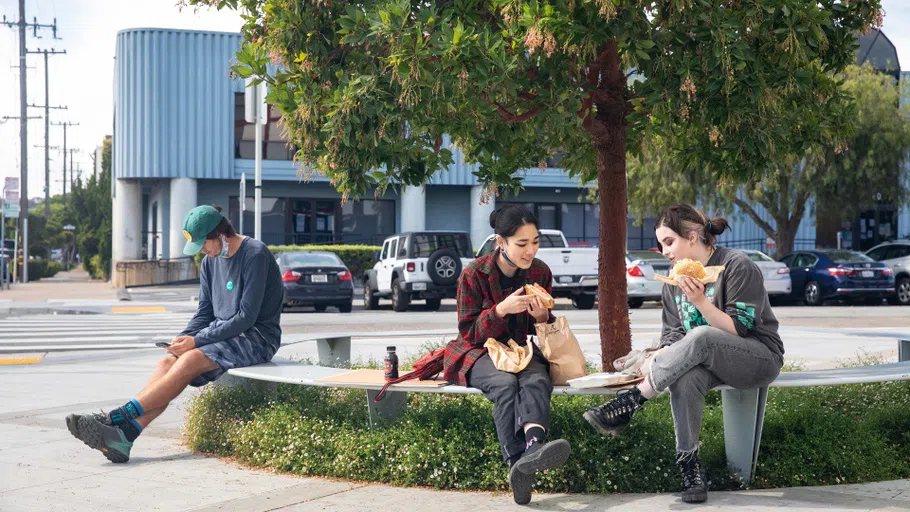
Across the street from Founders Hall and Makers Cafe, you’ll find all the support you need. The 80 Carolina building is where you can meet with staff from Financial Aid, Admissions, Student Life, and International Student Affairs and Programs.
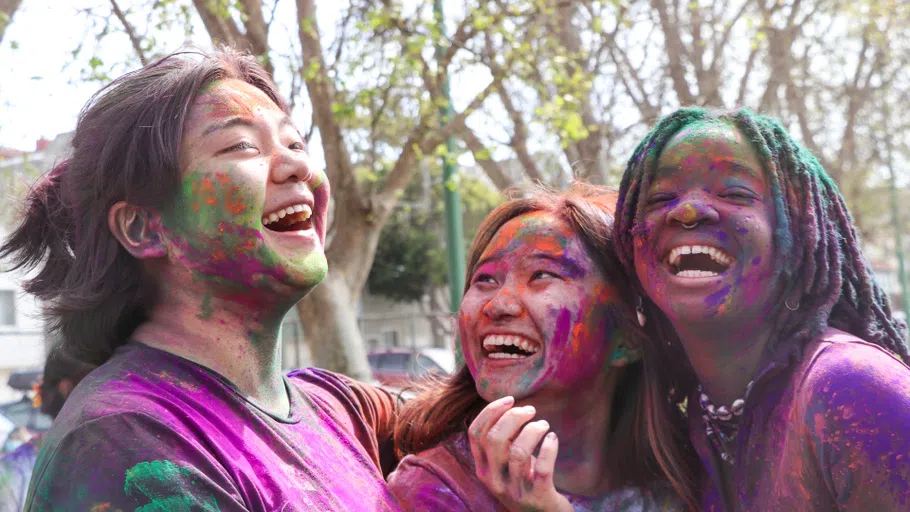
CCA India’s Holi celebration welcomes spring with an afternoon of Indian snacks, Bollywood music, and color-filled fun.
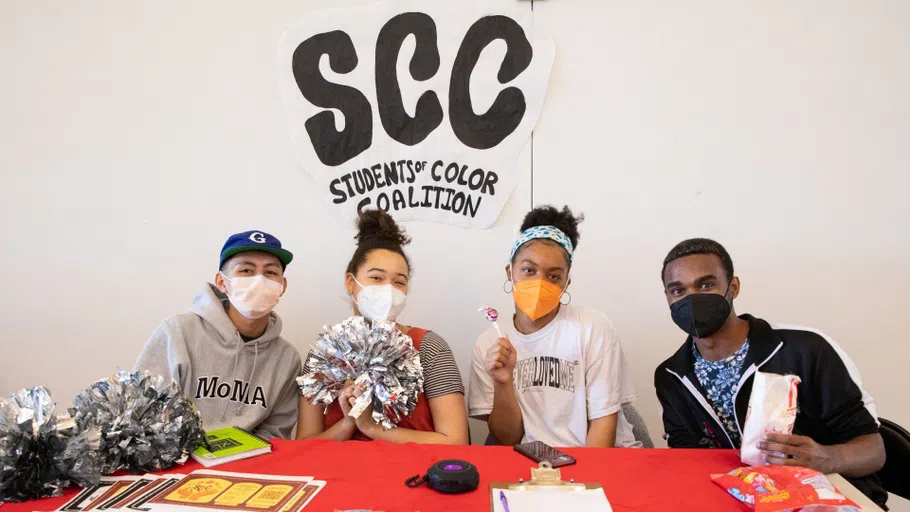
The Students of Color Coalition meets weekly to support and embrace the unique perspectives of students and artists of color at CCA.
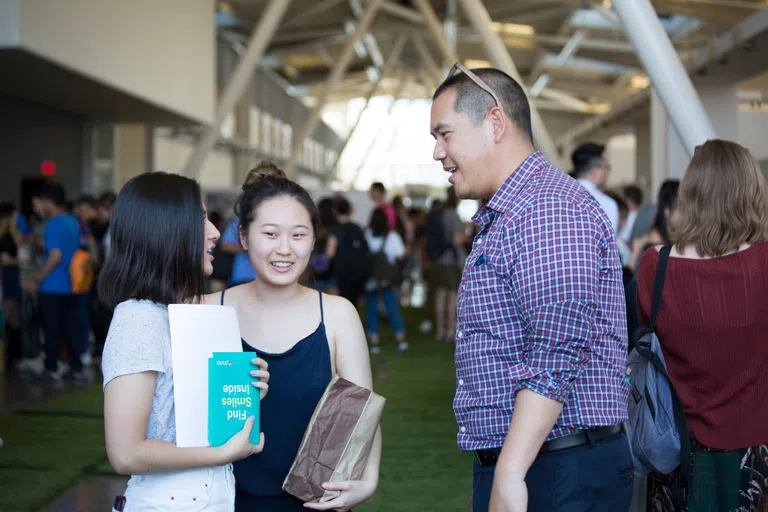
Director of Student Life Noki Seekao welcomes new students at Chimerapalooza.
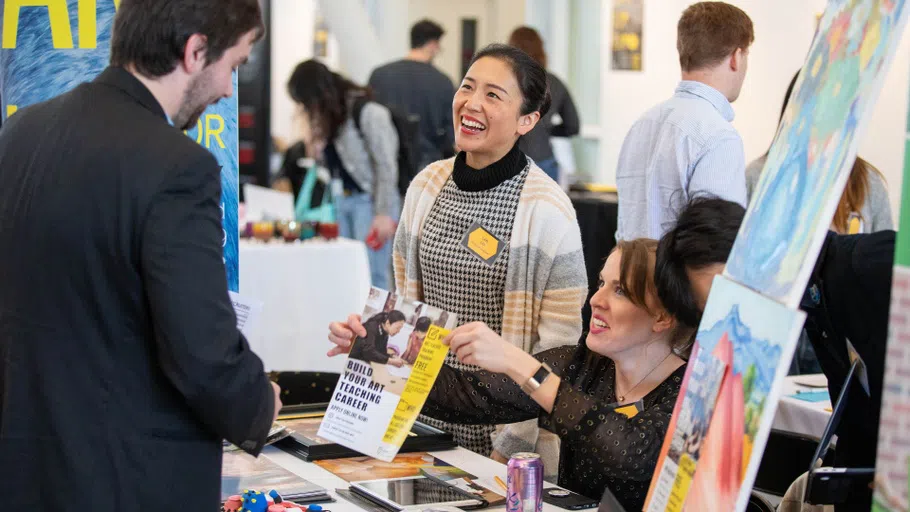
Get face-to-face time with creative industry leaders at the Office of Career and Employer Engagement’s annual Career Expo, which is open to students and alumni.

The Office of Student Life’s Chimerapalooza is an annual event that welcomes new students and returning ones at the start of the fall semester.
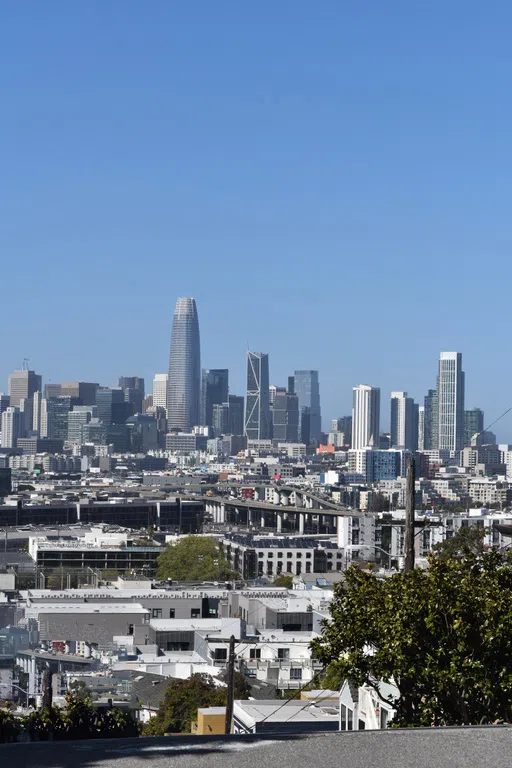
The view from Potrero Hill offers sweeping city views with a perfectly framed downtown skyline.
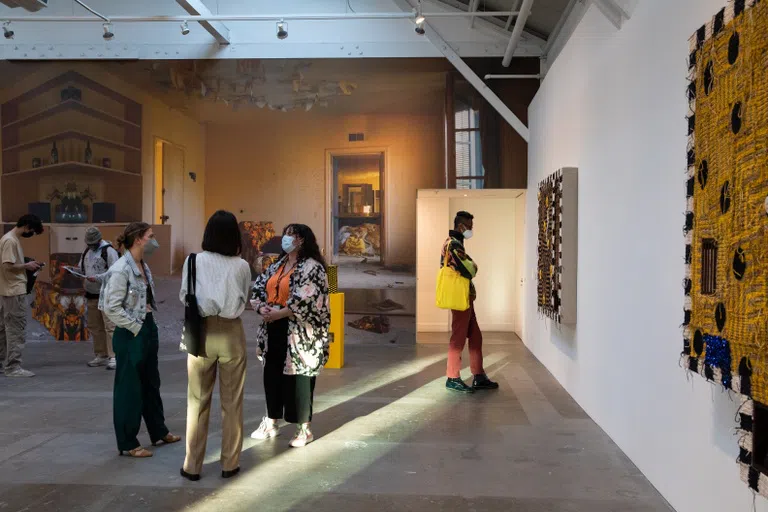
Textiles Professor Josh Faught’s exhibition at the Wattis, Look Across the Water Into the Darkness, Look for the Fog, offered programming specifically for the CCA community.
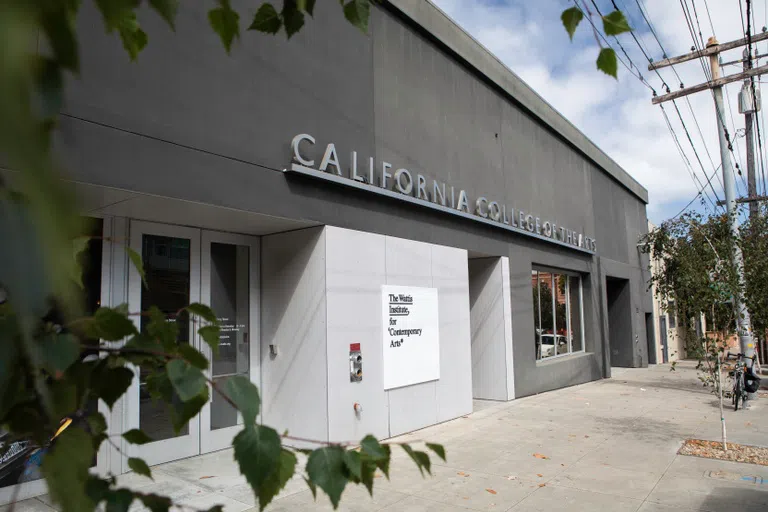
A few blocks from campus, the Wattis Institute for Contemporary Arts brings accomplished contemporary artists, academics, and thought leaders to San Francisco. The space also hosts CCA's graduate program in Fine Arts thesis exhibitions.
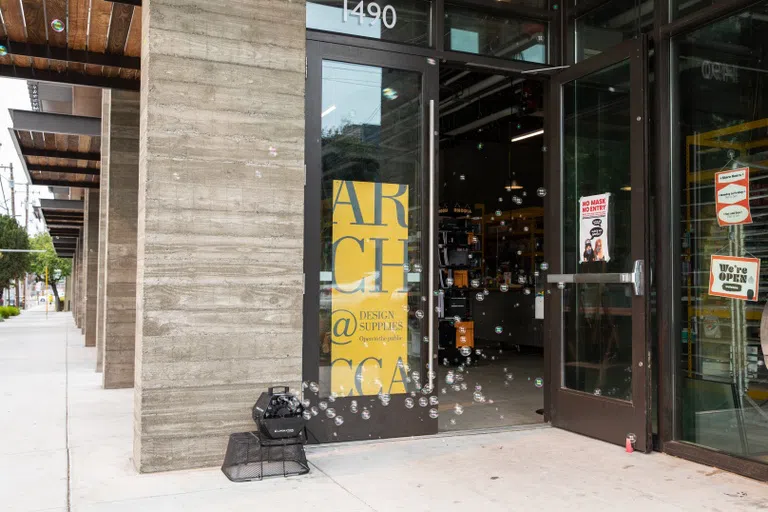
ARCH Art Supplies has long been the go-to location for CCA students and faculty. It’s located in Blattner Hall, just a few steps out the door for many on-campus residents and a five-minute walk from the main building.

CCA's expansion adds more space for creativity—20% to be exact. Rendering courtesy of Studio Gang.
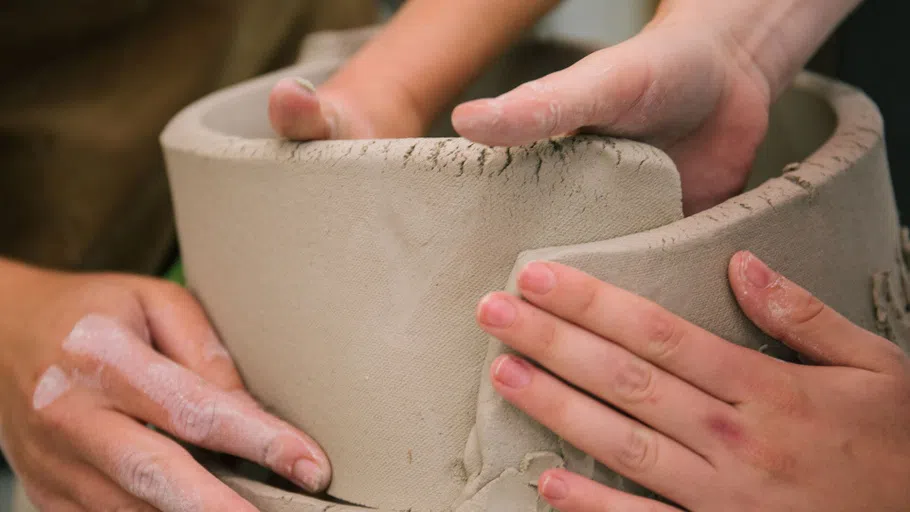
CCA’s storied Ceramics program is based in San Francisco alongside all other creative disciplines. Photo by Carlos Graña.
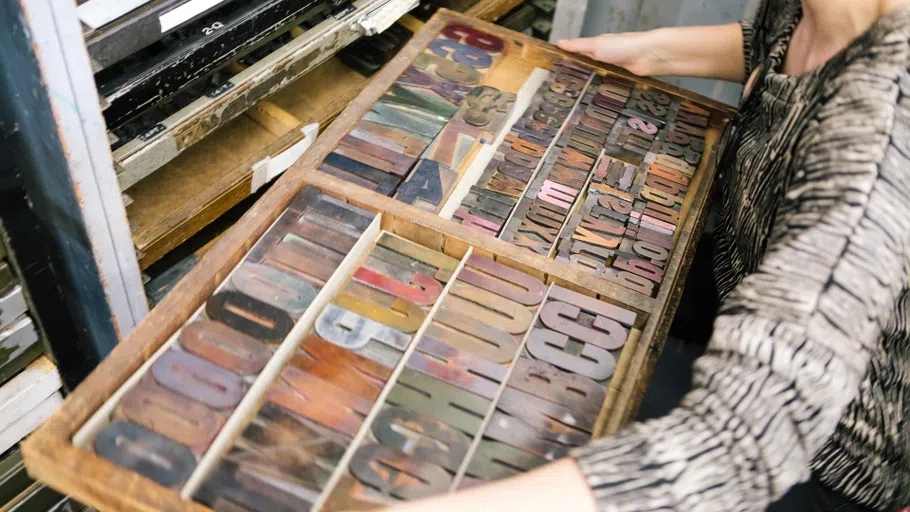
CCA’s letterpress machines, type, and book arts equipment are at the San Francisco Center for the Book, just a few blocks from campus.
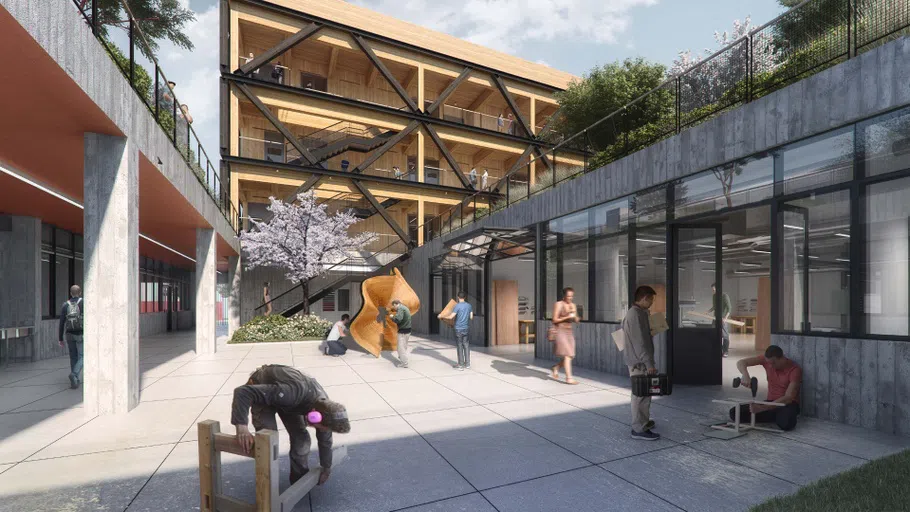
Outdoor maker yards are new spaces for collaborating with others and working with heavy materials. Rendering courtesy of Studio Gang.
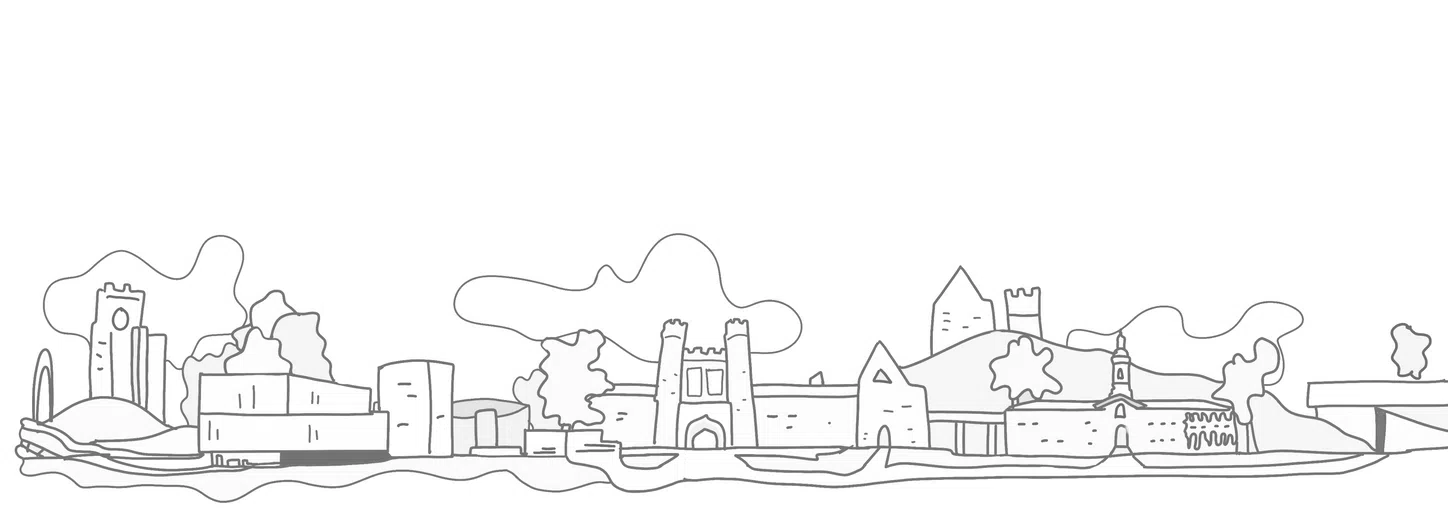
Black and white illustration of college campus

CCA Undergraduate Experience

CCA Graduate Experience

Meet CCA Tour